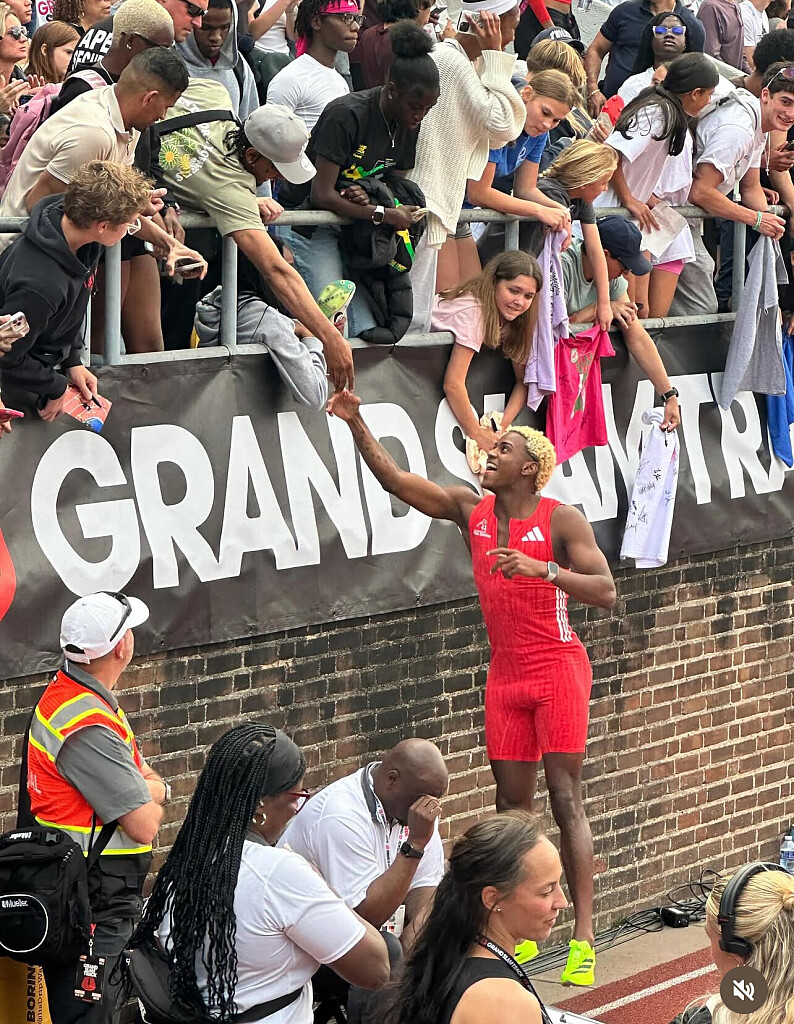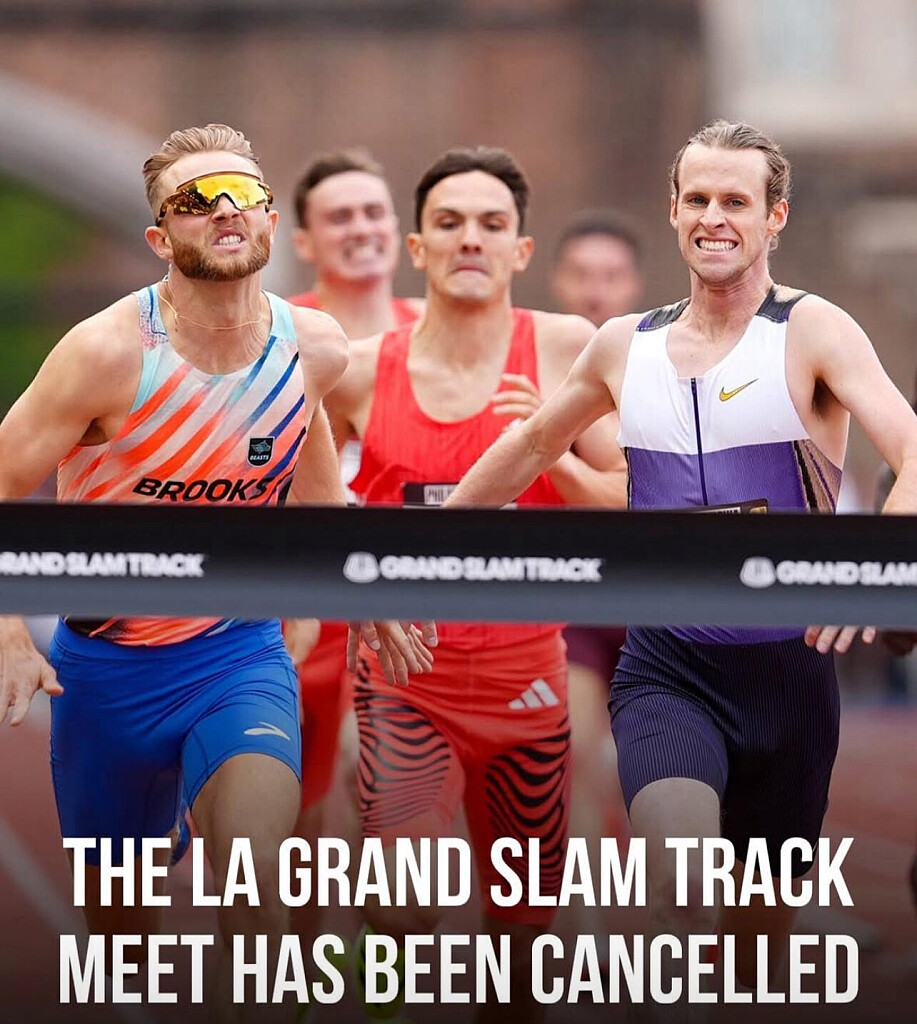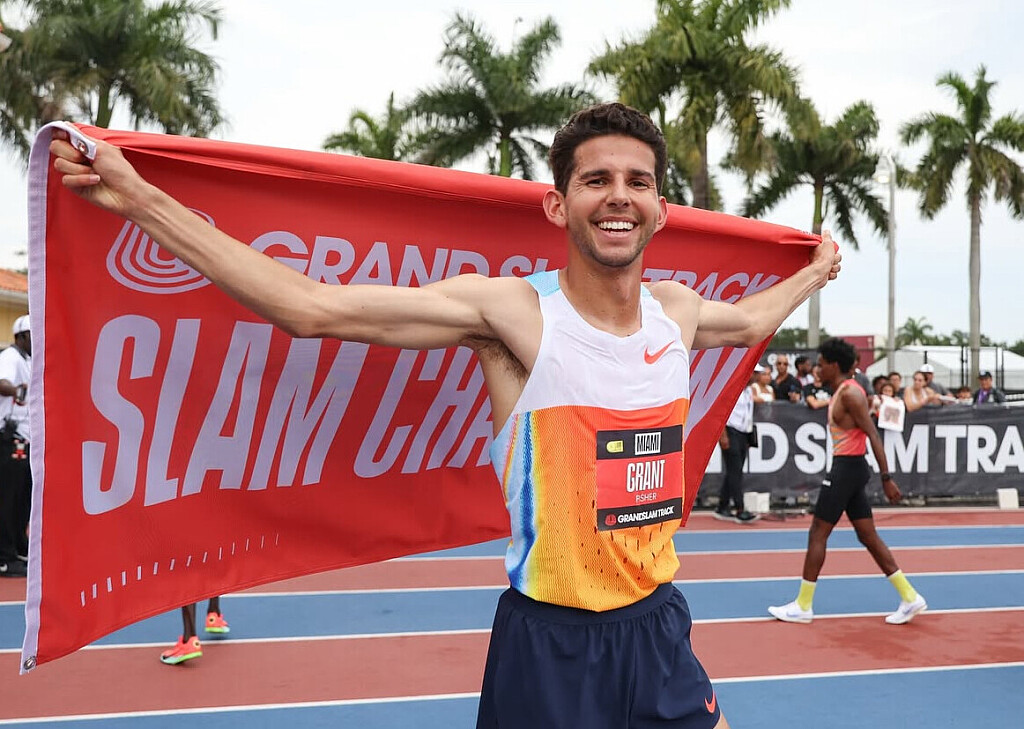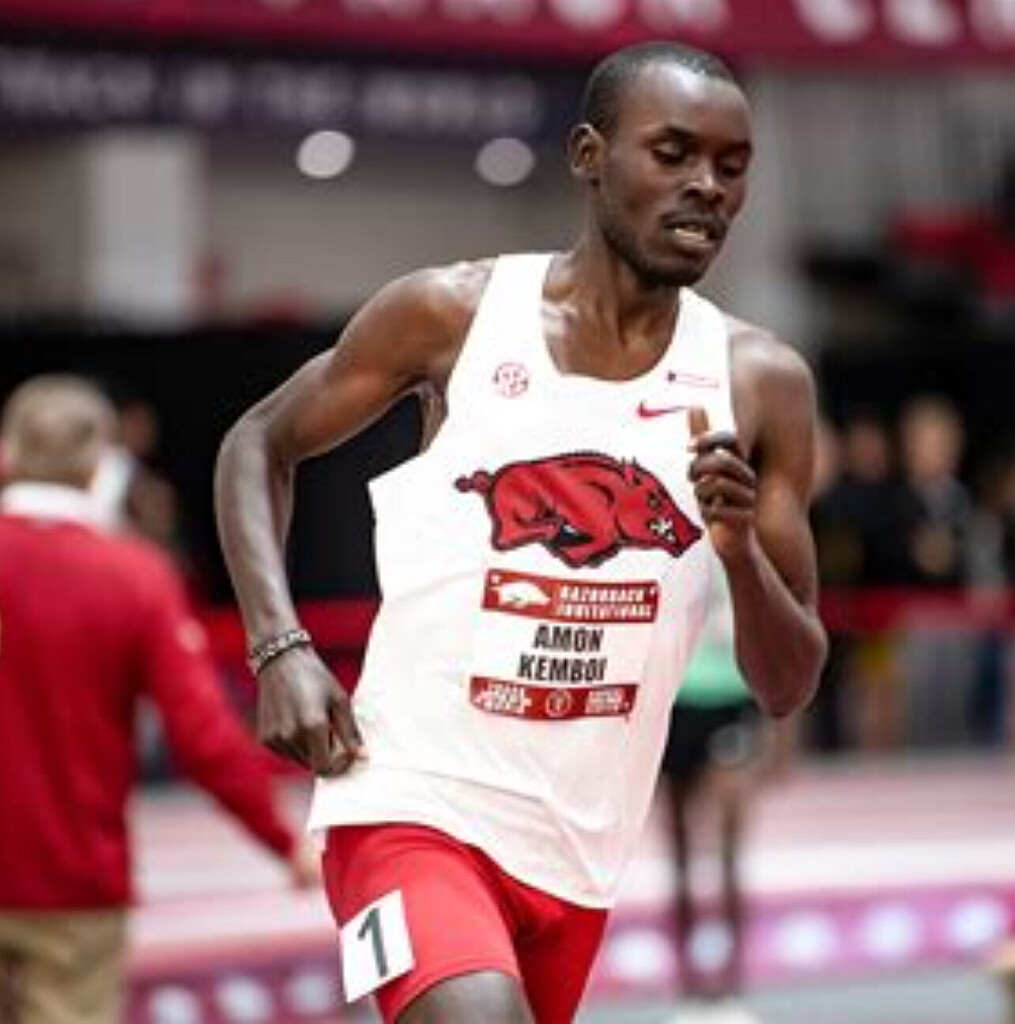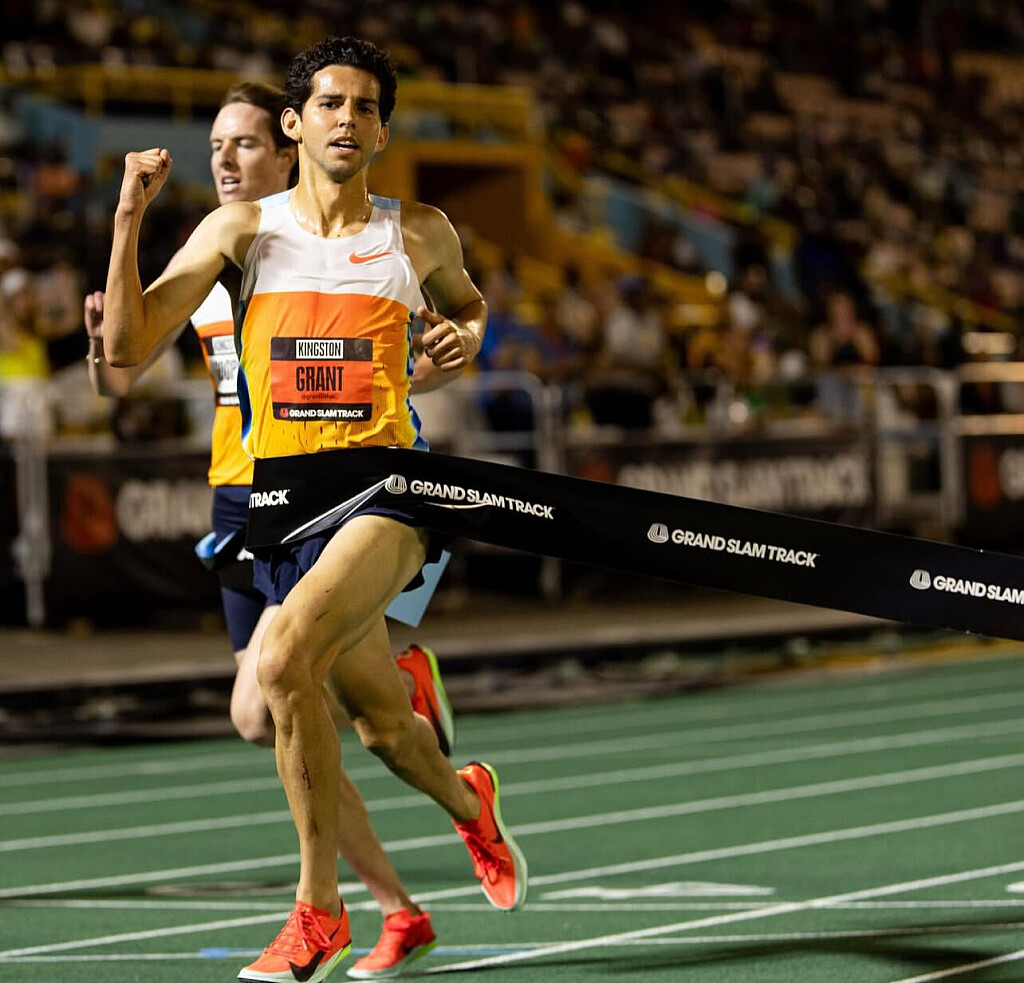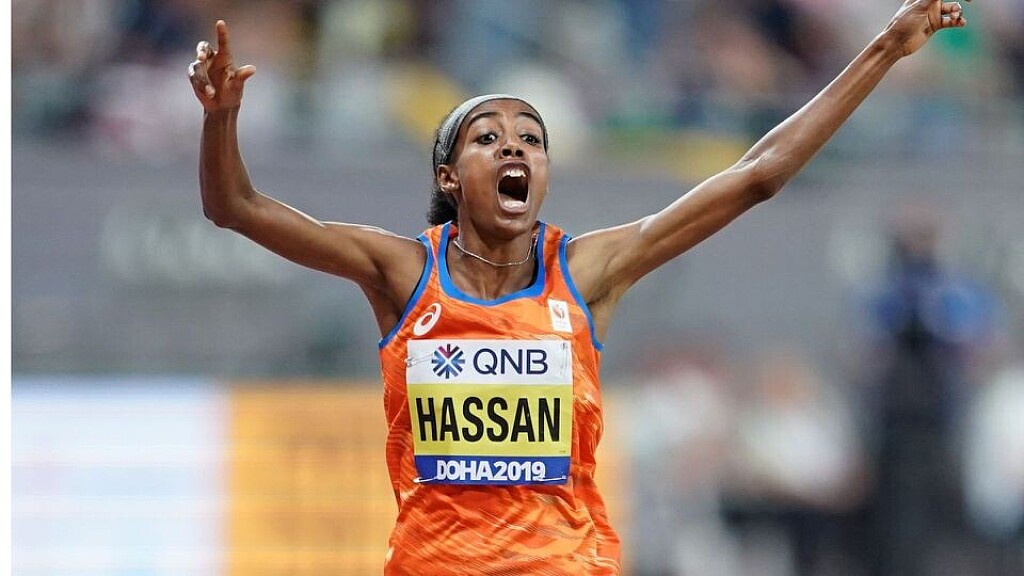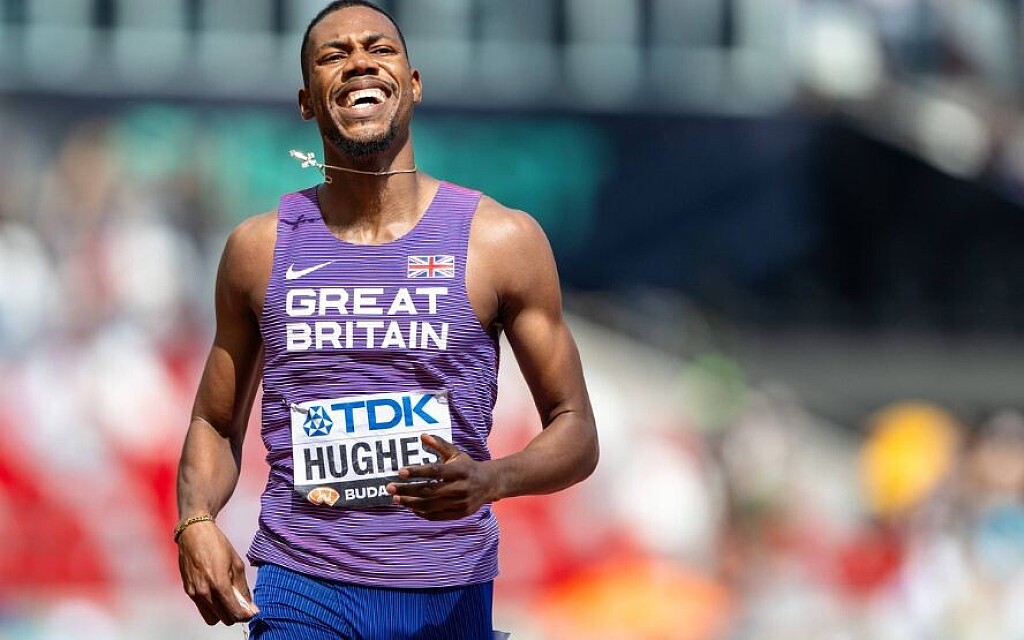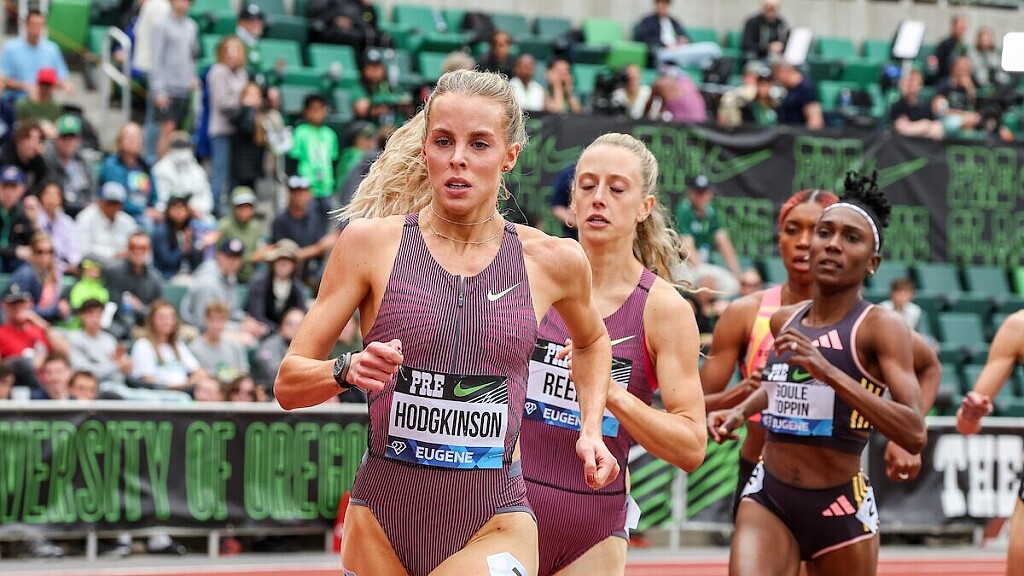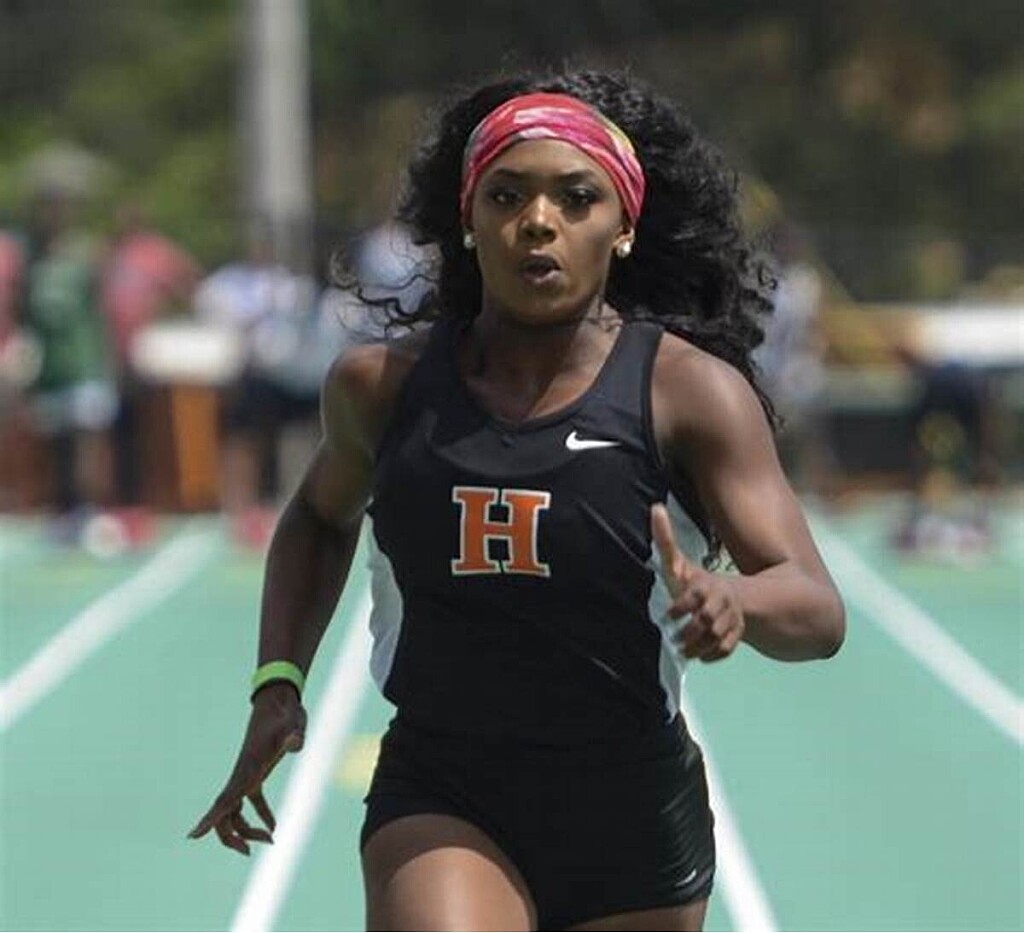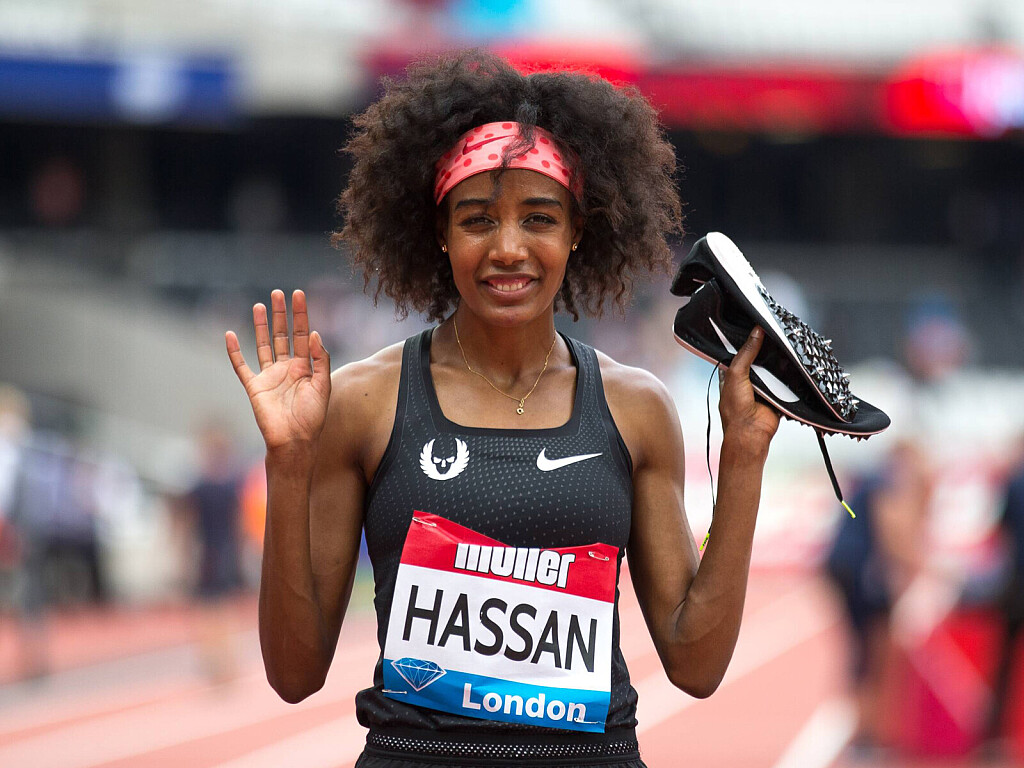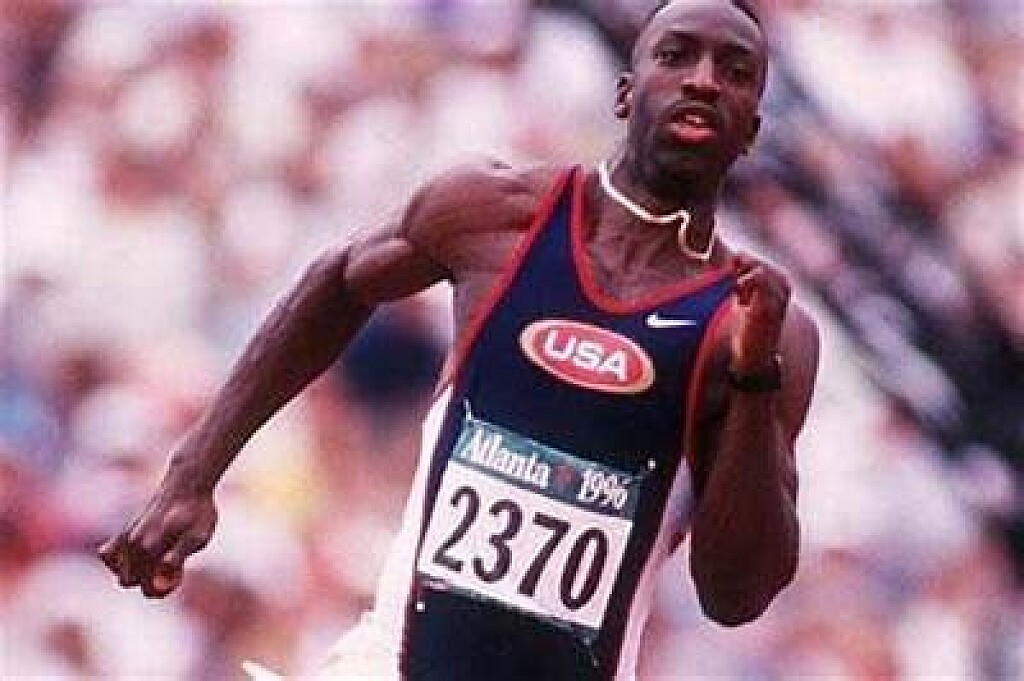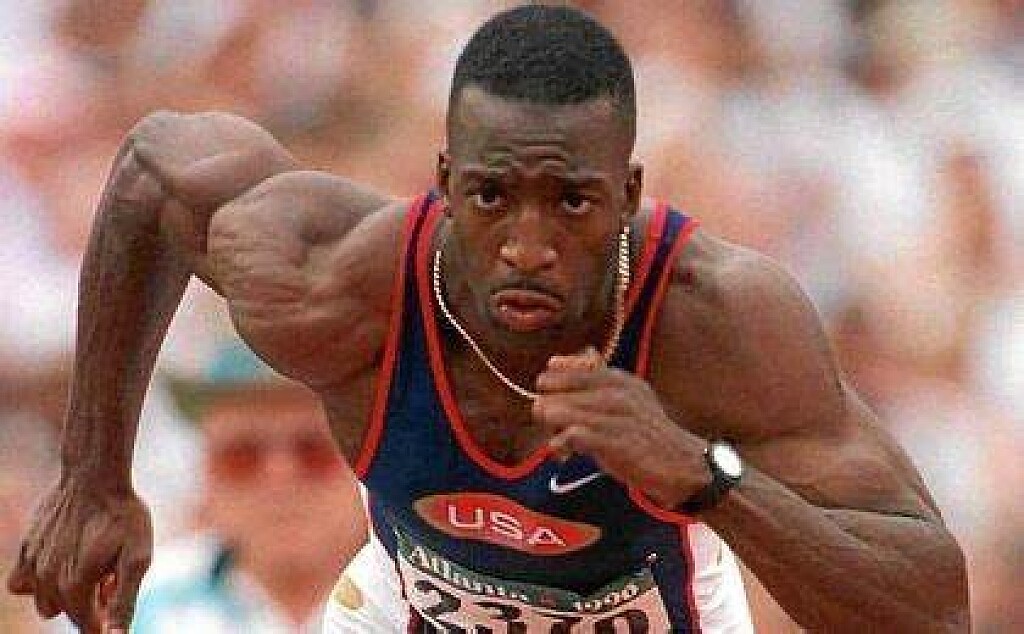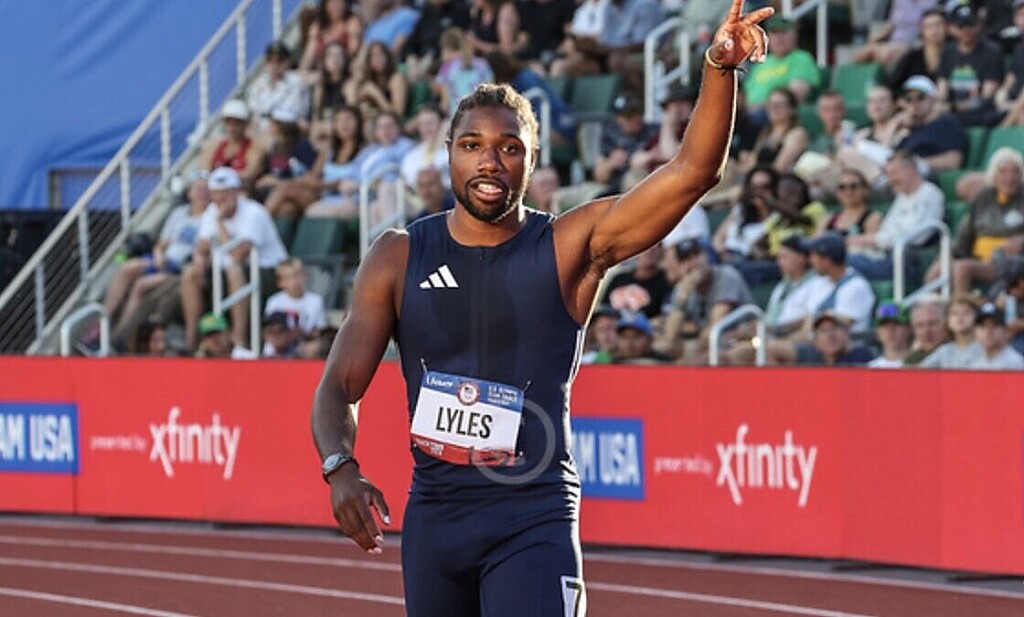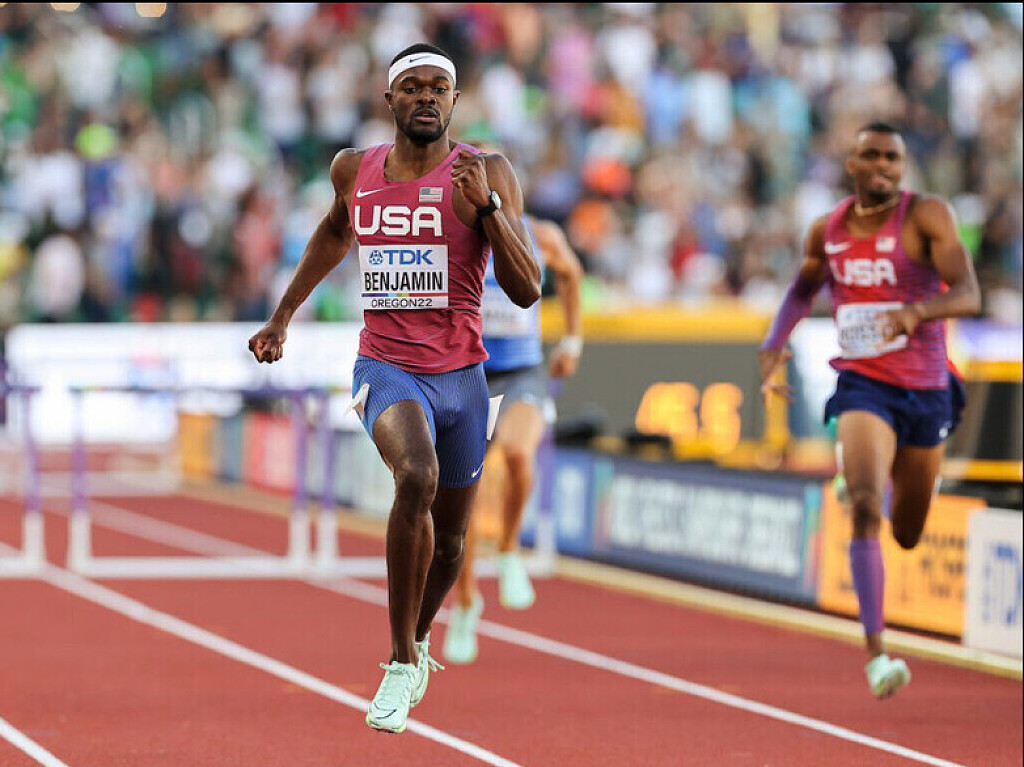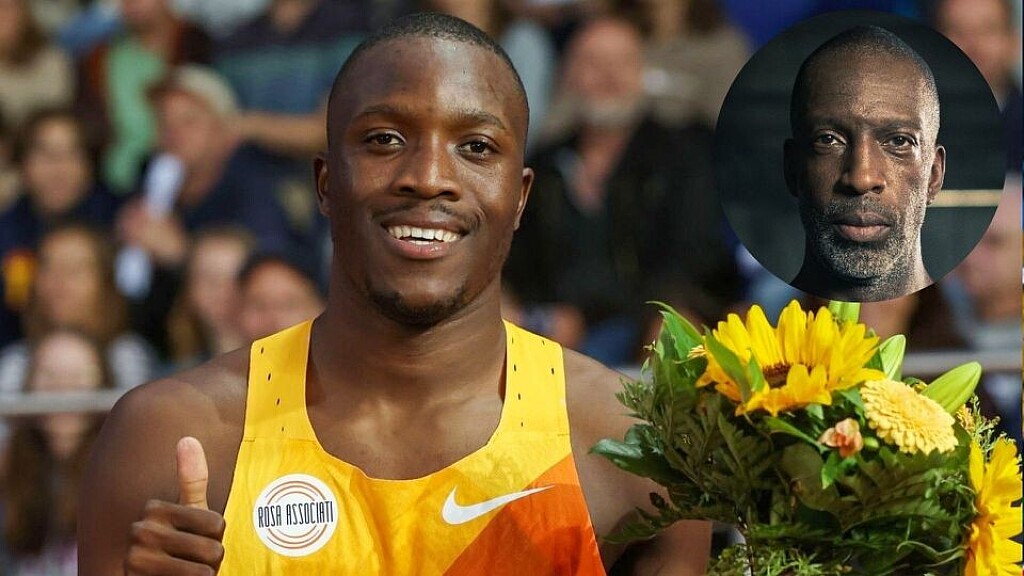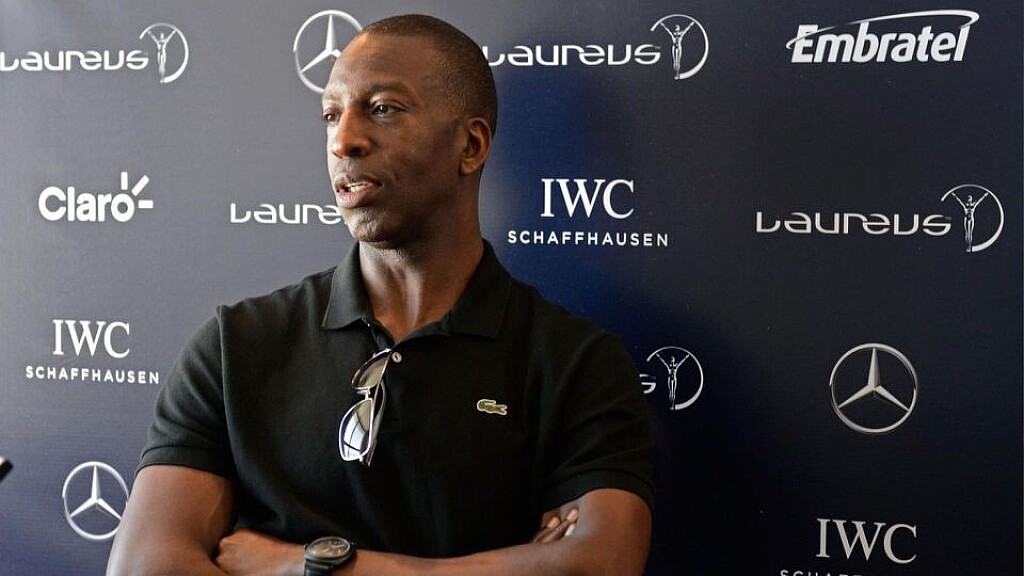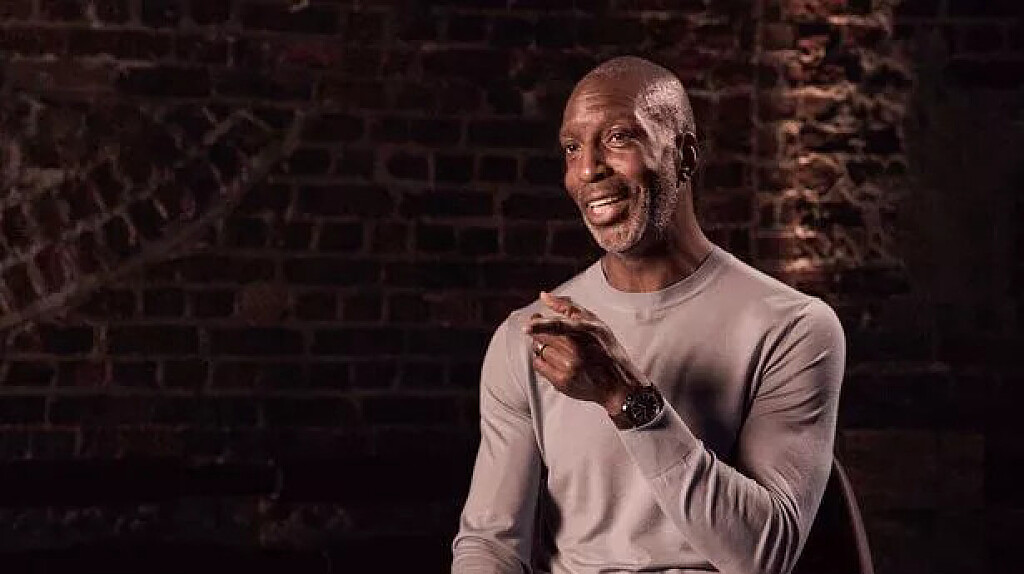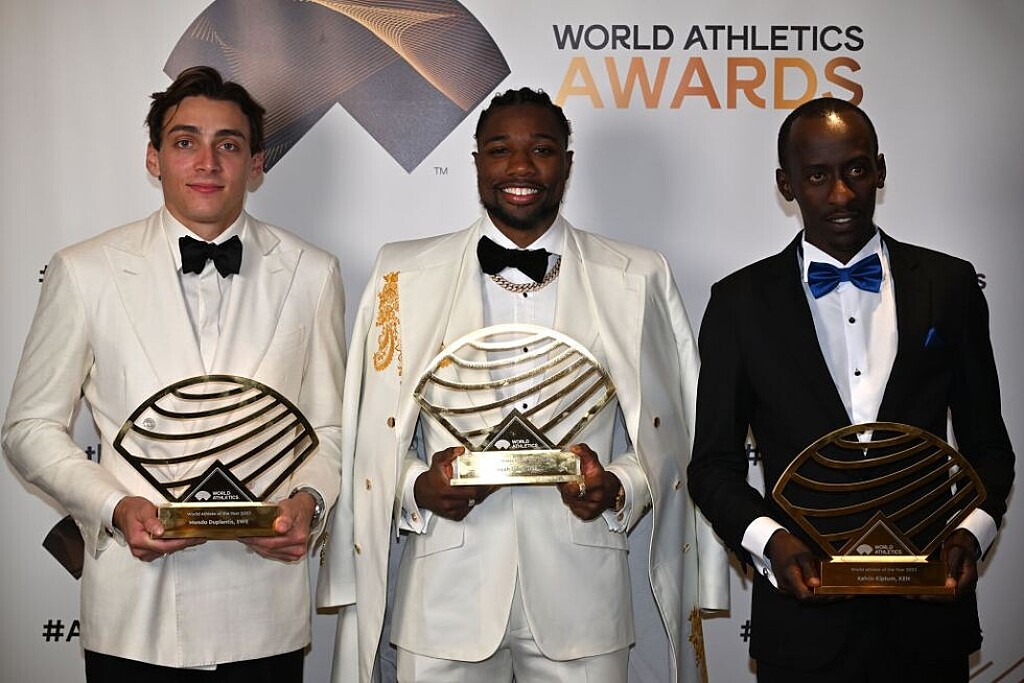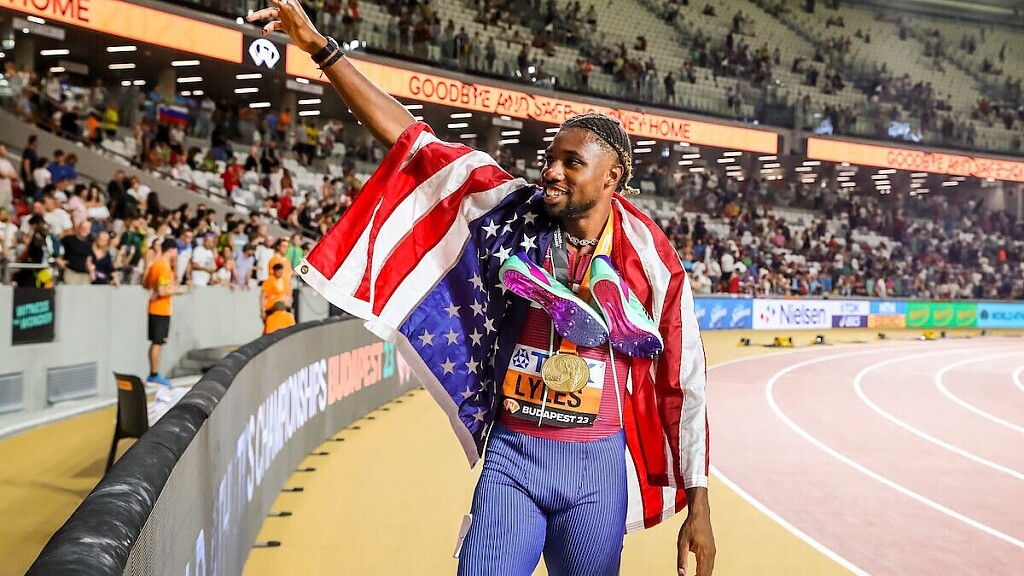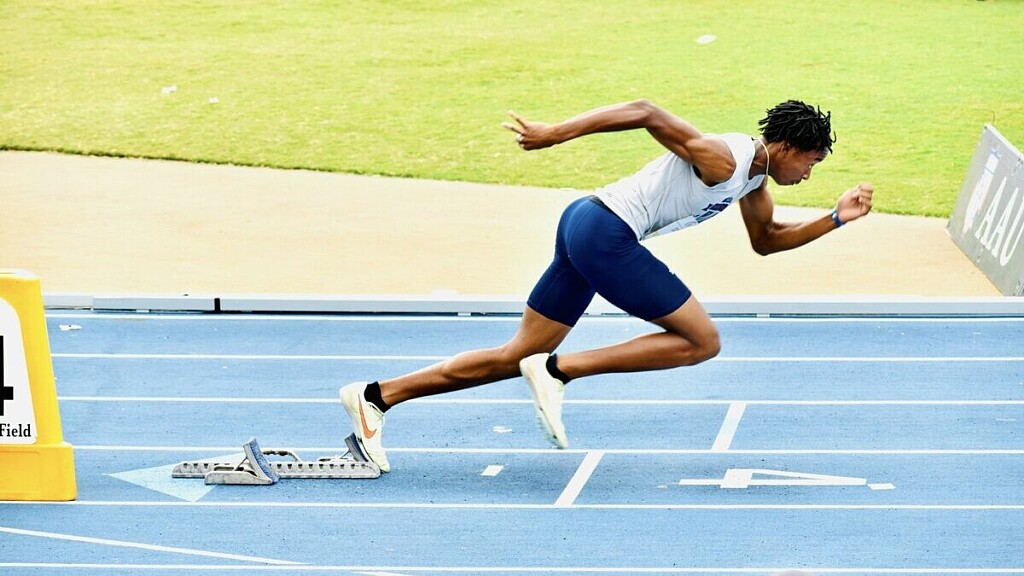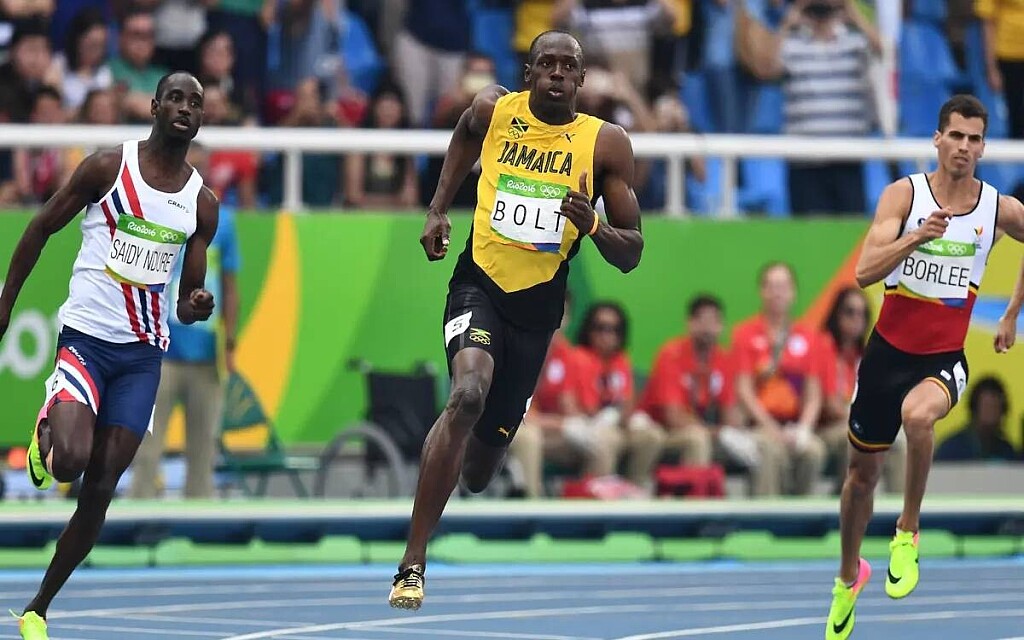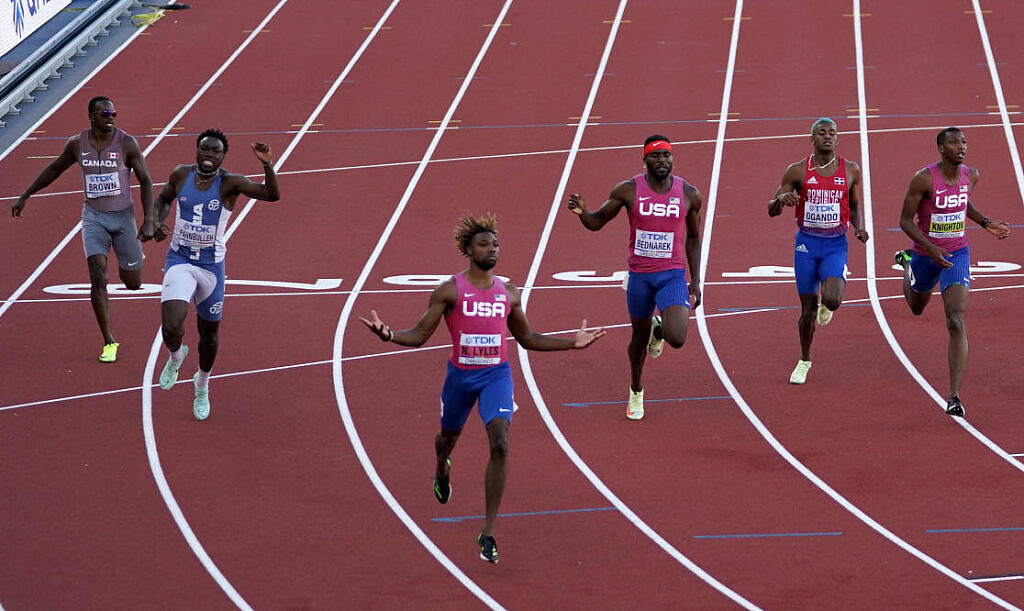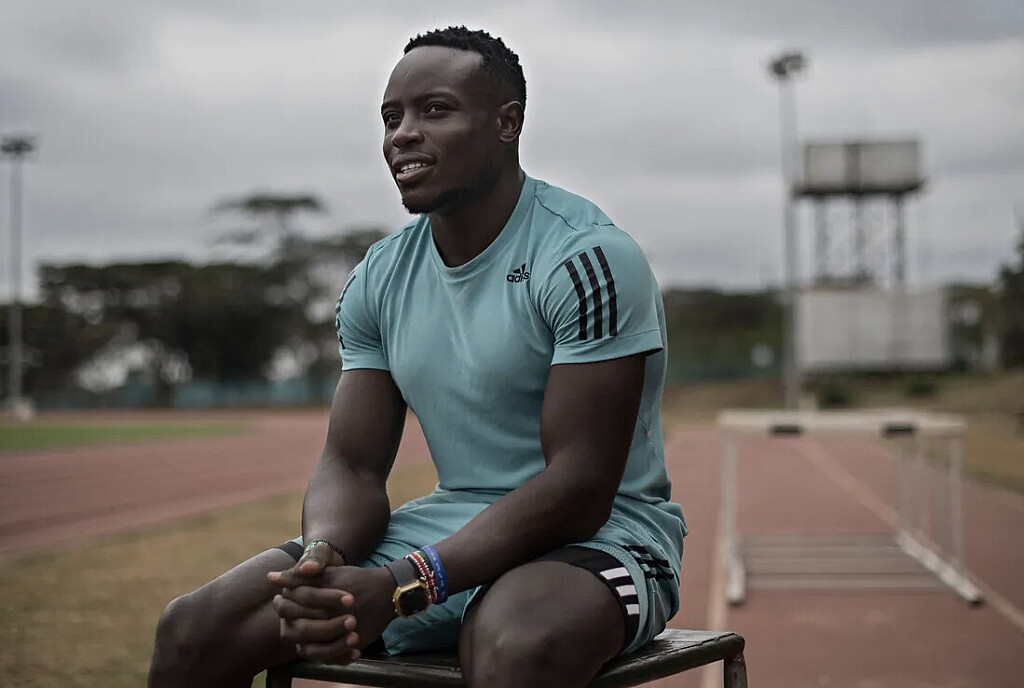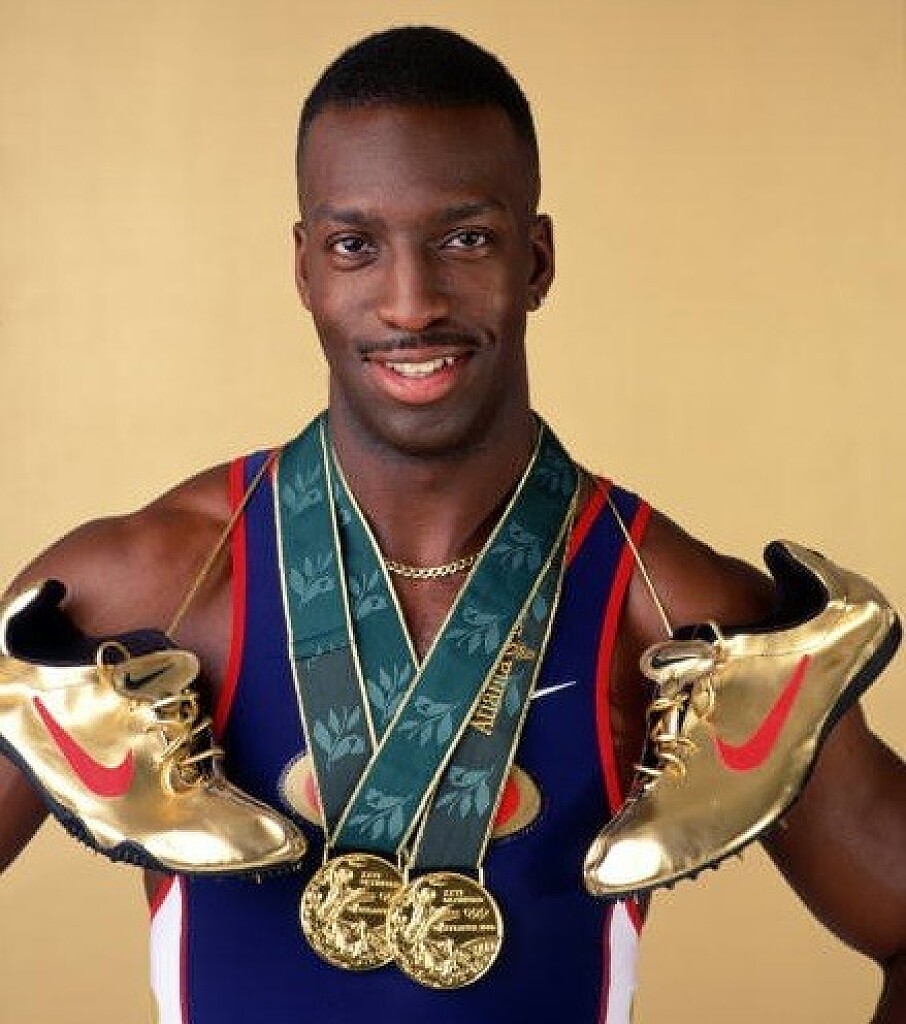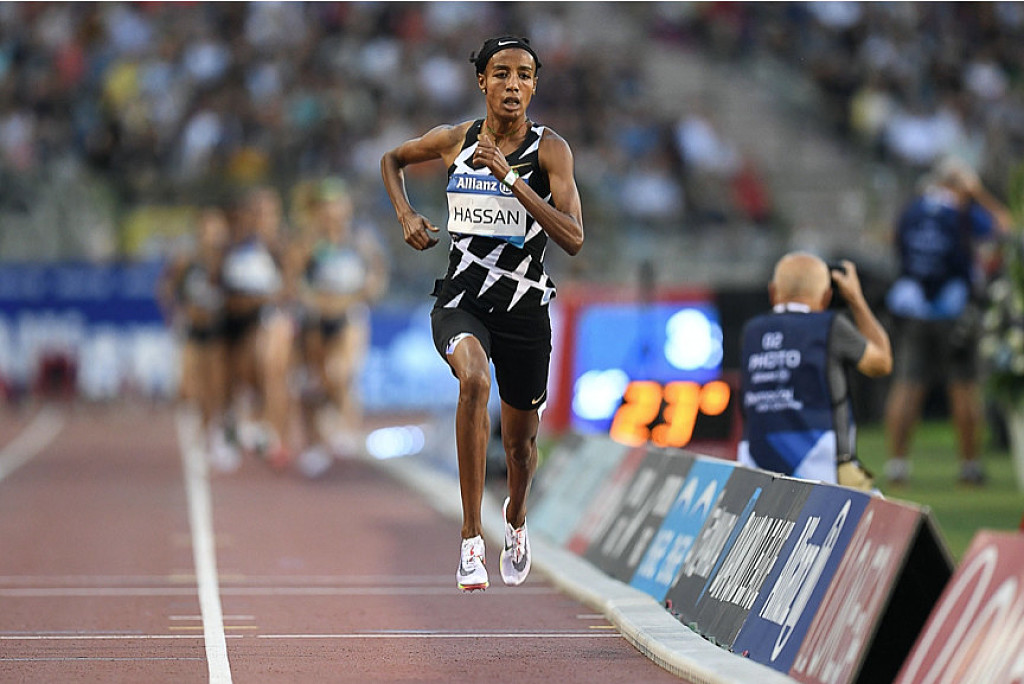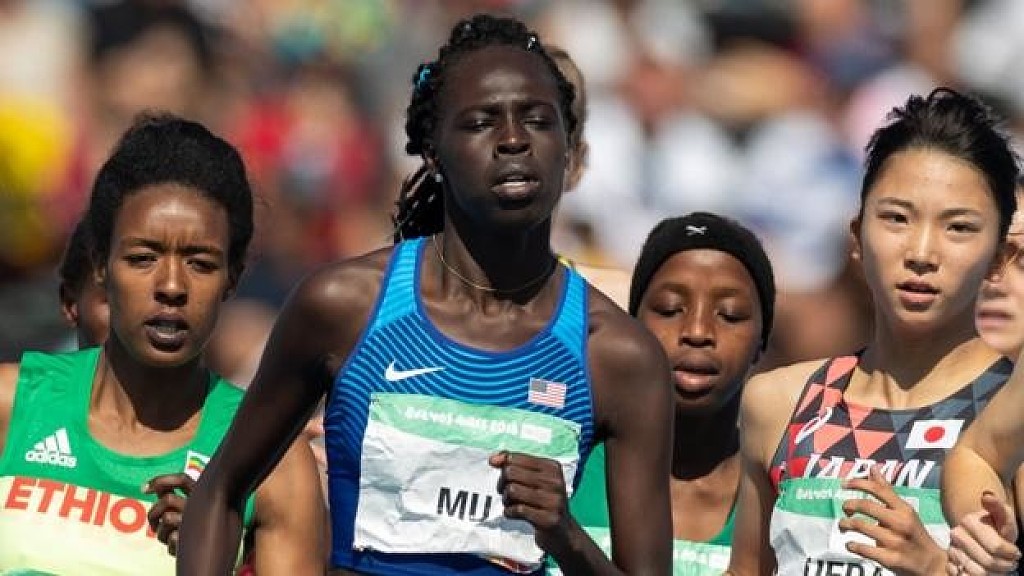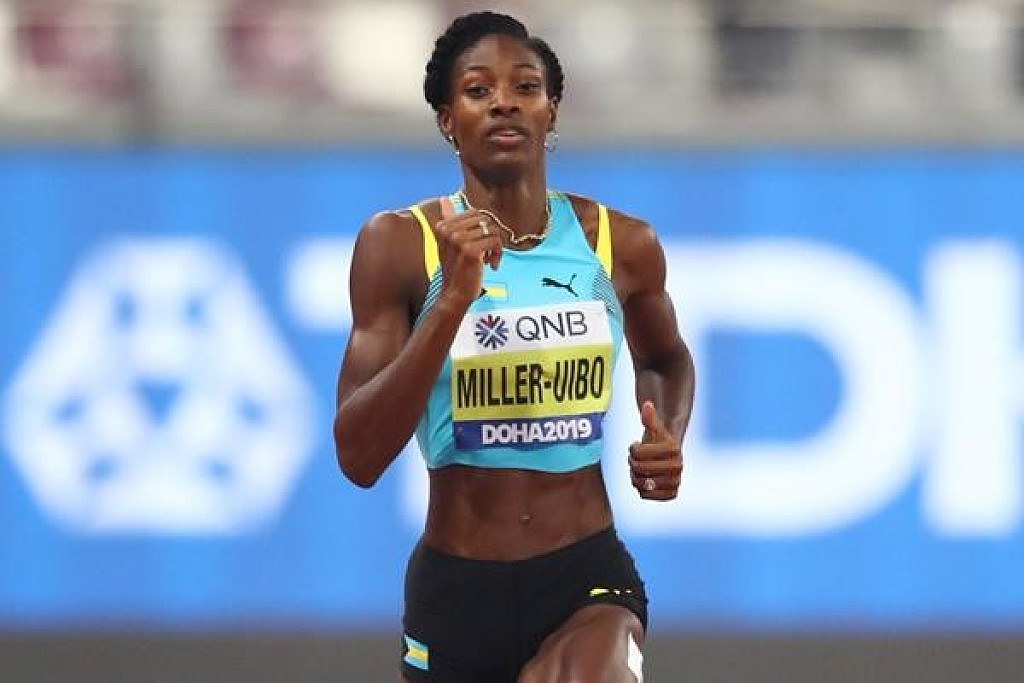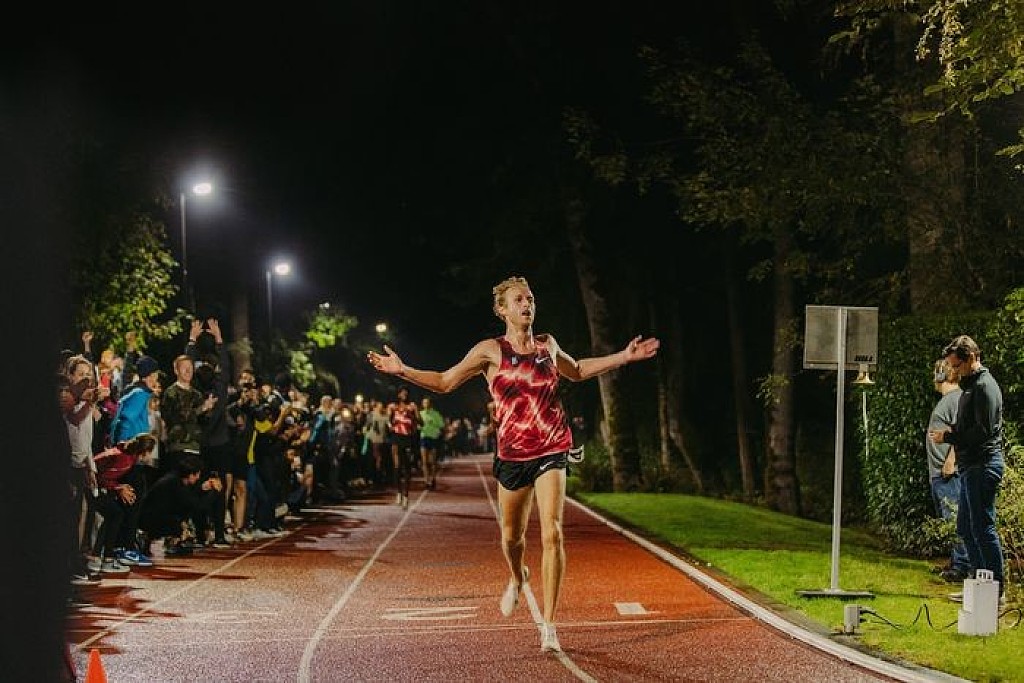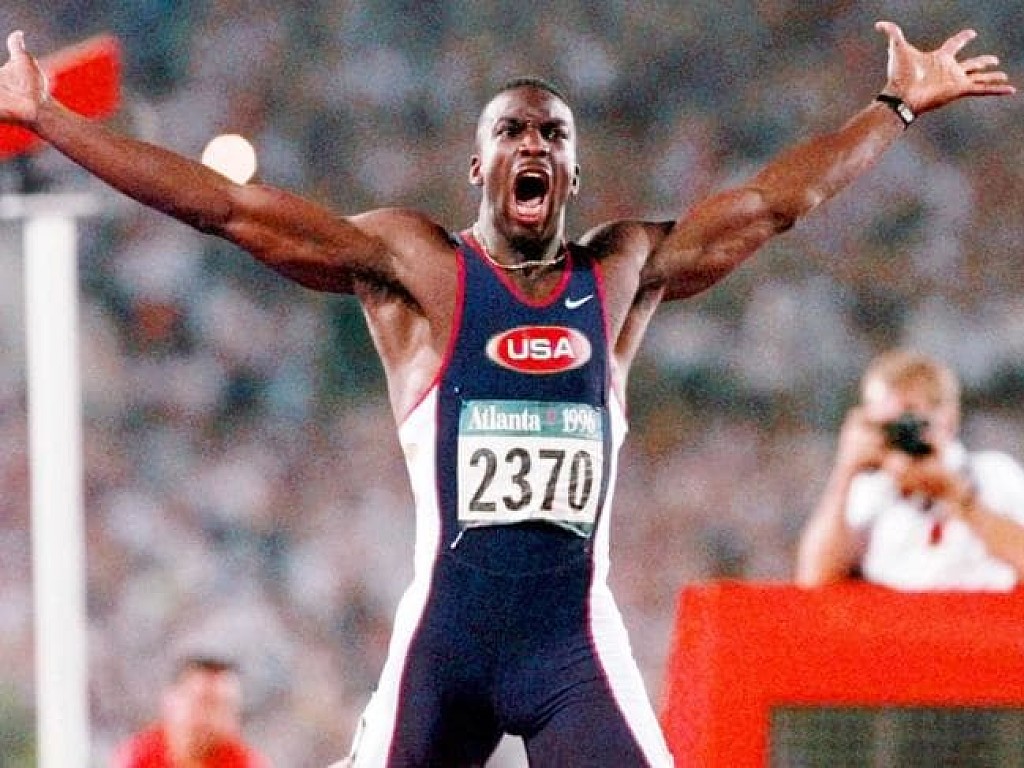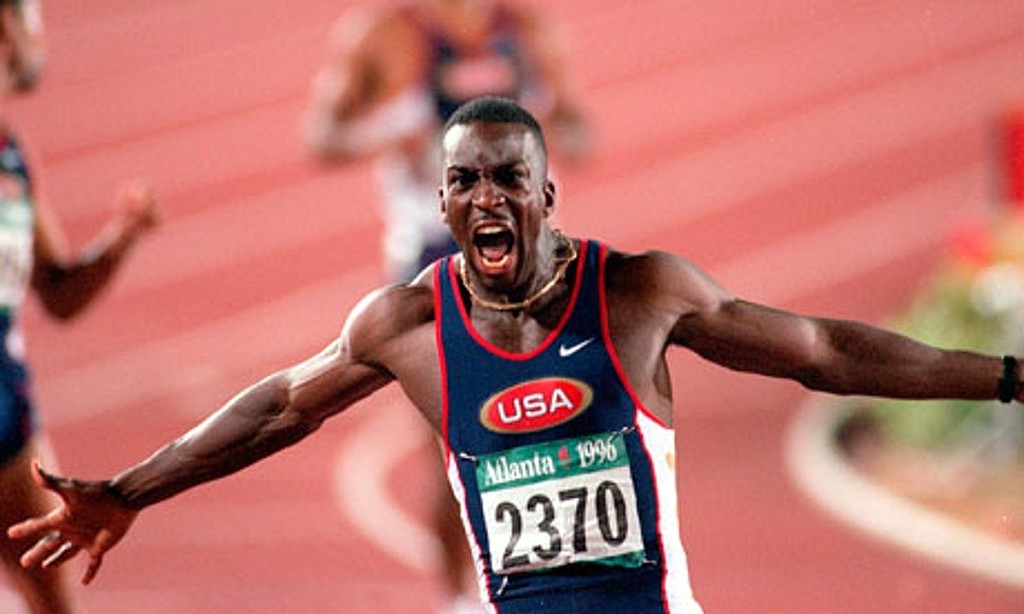Running News Daily
Running News Daily is edited by Bob Anderson. Send your news items to bob@mybestruns.com Advertising opportunities available. Train the Kenyan Way at KATA Kenya and Portugal owned and operated by Bob Anderson. Be sure to catch our movie A Long Run the movie KATA Running Camps and KATA Potato Farms - 31 now open in Kenya! https://kata.ke/
Index to Daily Posts · Sign Up For Updates · Run The World Feed
Articles tagged #Michael Johnson
Today's Running News
Michael Johnson’s Grand Slam Track Faces $13M Crisis After Investor Fallout
Michael Johnson’s ambitious new track and field league, Grand Slam Track, is facing a major financial crisis after a key investor backed out of their funding commitment, leaving the startup owing athletes and vendors over $13 million.
Launched in early 2025 with the goal of transforming the economics of elite track competition, Grand Slam Track promised unprecedented prize money across four high-profile meets. Athletes were told they could earn up to $100,000 per event, far surpassing the standard payouts in the sport.
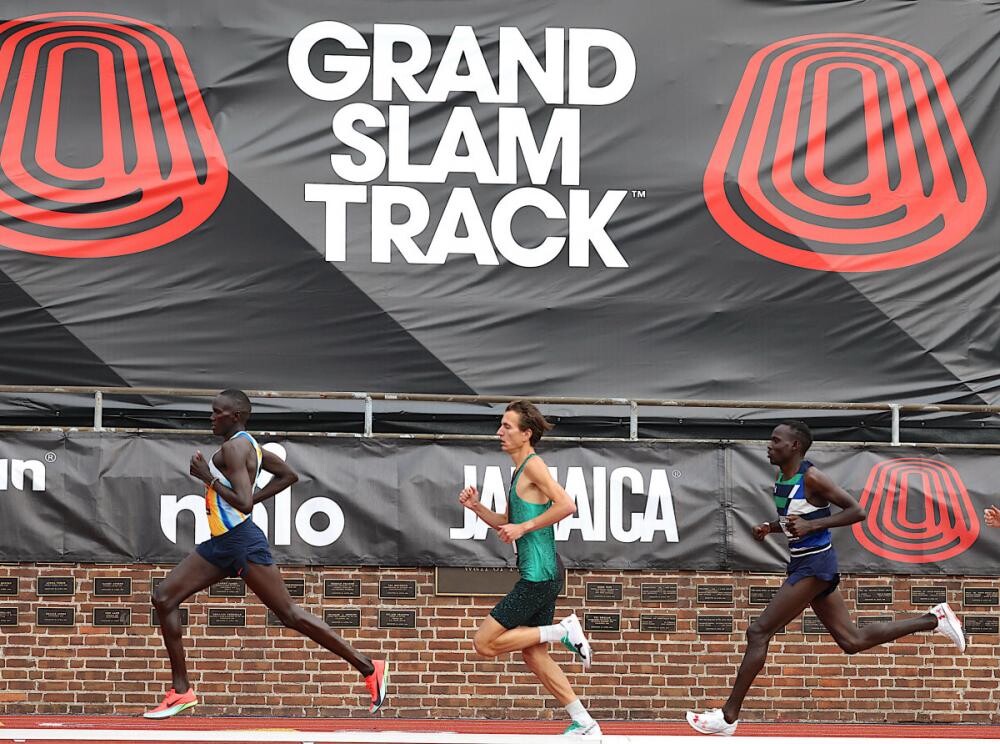
But just months into its debut season, the reality behind the scenes has shifted dramatically.
“A major investor failed to fulfill their full commitment,” Johnson told Front Office Sports. “That put us in a major, major cash flow issue.”
Millions Owed to Athletes
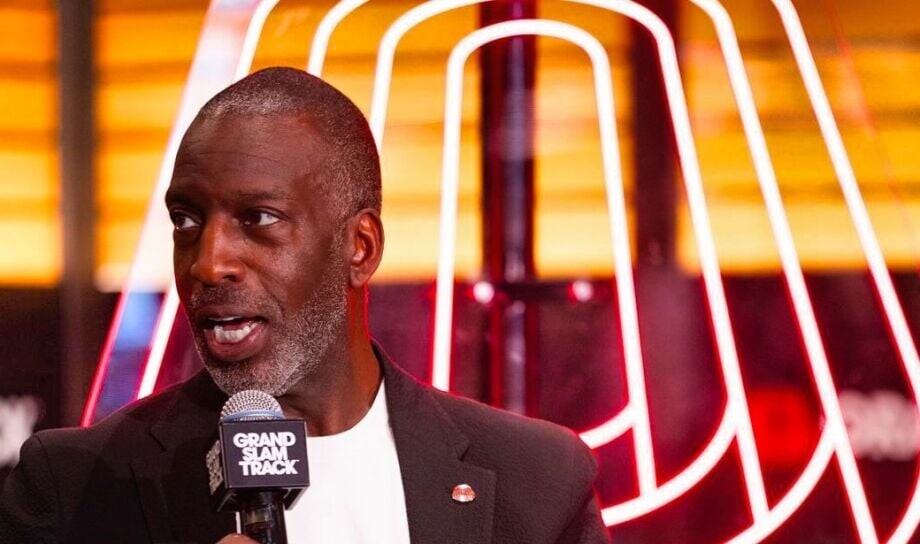
Only appearance fees from the opening event in Kingston, Jamaica have been paid out. Payments for subsequent events in Miami and Philadelphia are still pending, and no compensation was issued for the Los Angeles event, which was ultimately canceled.
In total, Grand Slam Track now owes at least $13 million to athletes, plus an undisclosed amount to vendors and venues. The startup also defaulted on payments to key partners, including approximately $78,000 owed to the Ansin Sports Complex in Florida.
Athletes have voiced their frustration publicly. Sprinter Gabby Thomas and British star Zharnel Hughes are among those still awaiting payments. The company has informed agents that Kingston prize money will be paid by end of July, with all other dues—including from the canceled LA meet—settled by September.
World Athletics Steps In
The growing controversy has caught the attention of World Athletics President Sebastian Coe, who said the organization is “monitoring the situation closely.” In recent interviews, Coe cautioned against “vanity projects” that are heavy on promise but light on execution, adding that athletes and agents have raised formal concerns with the global governing body.
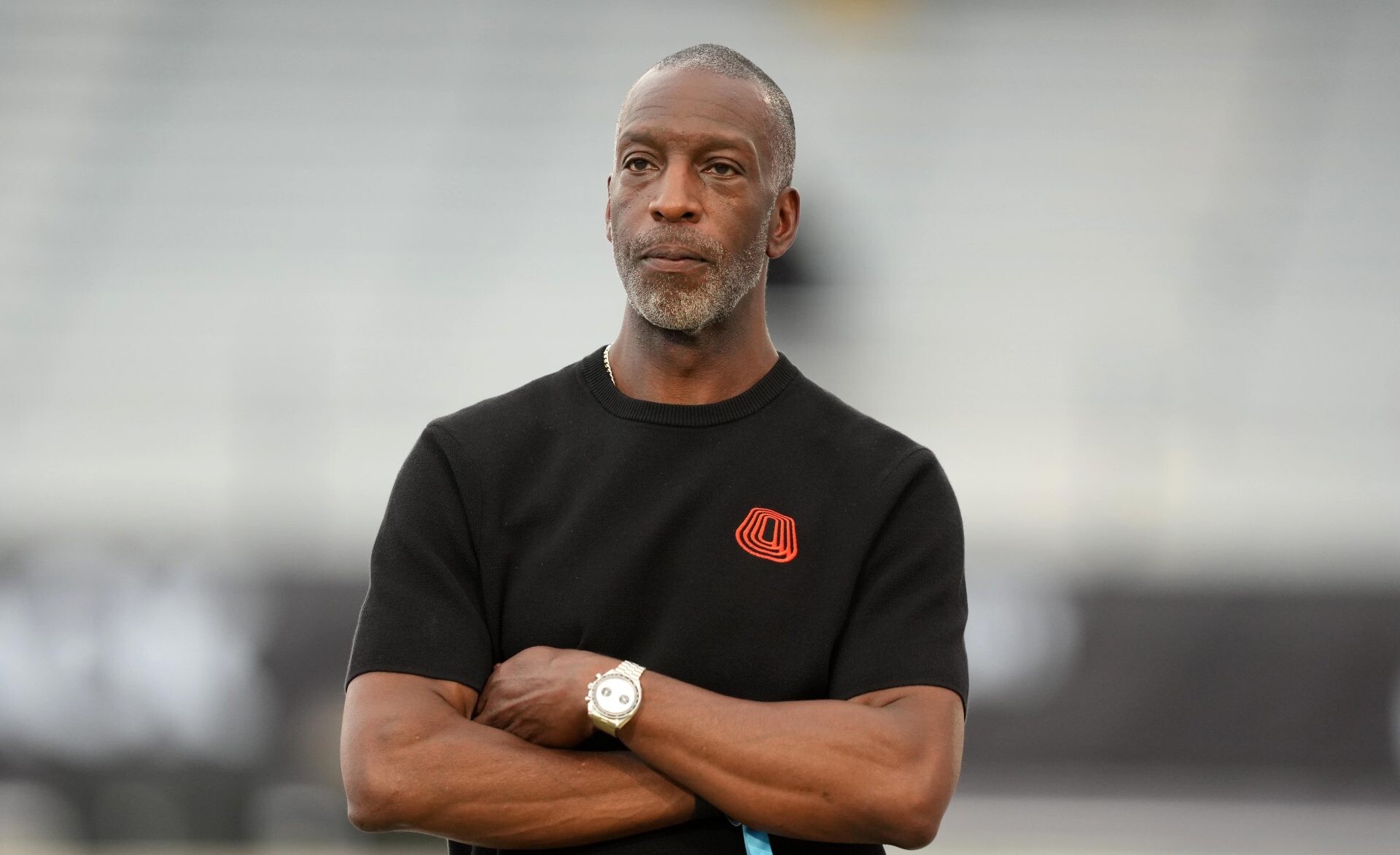
“We have been in discussions with the Association of Athletics Managers,” Coe said, “and we are aware of the growing tension.”
Who Backed Out?
Johnson has so far declined to name the investor who reneged on their funding, but according to sources, the pullout happened days after the Kingston event. The investor allegedly redirected their capital elsewhere due to shifting global financial conditions, including tariff changes.
Can GST Recover?
Despite the turmoil, Johnson says the mission of Grand Slam Track is far from over. A new investor—reportedly Vista Equity’s Robert Smith—joined prior to the Philadelphia event, and Johnson insists the team is working “around the clock” to secure additional capital.
“We’ve got to get this right,” he said. “Our priority is to make sure our athletes and vendors are paid before we even think about next season.”
As of now, all 2025 payments remain outstanding, and the 2026 season hangs in the balance.
by Boris Baron
Login to leave a comment
Grand Slam Track Series Faces Scrutiny Over Delayed Athlete Payments
The inaugural Grand Slam Track (GST) series launched with high hopes and bold promises—top-tier venues, world-class athletes, and massive prize money. But just months after its first leg in Kingston, Jamaica, the glitter is beginning to tarnish as frustration mounts over unpaid prize money and appearance fees.
From Olympic gold medallists to world record holders, dozens of elite athletes are still waiting to be compensated for their performances. Middle-distance star Emmanuel Wanyonyi is owed $100,000 (approximately Ksh12.9 million) after topping the men’s short-distance leaderboard. American sprint sensation Gabby Thomas and 400m hurdles world record holder Sydney McLaughlin-Levrone are among others reportedly awaiting their payouts.
The issue extends beyond prize money. Appearance fees—typically paid prior to or shortly after competition—have also not been delivered. In contrast, athletes competing on the Diamond League circuit often receive payments within two to three weeks. The GST delay now stretches months, leaving agents, athletes, and federations scrambling for answers.
Organizers claim the delay is due to “economic challenges,” the same reason cited by GST founder Michael Johnson when he abruptly canceled the final series meet scheduled for Los Angeles. That announcement, made during an emergency Zoom call with athletes, raised immediate red flags about the financial health of the operation.
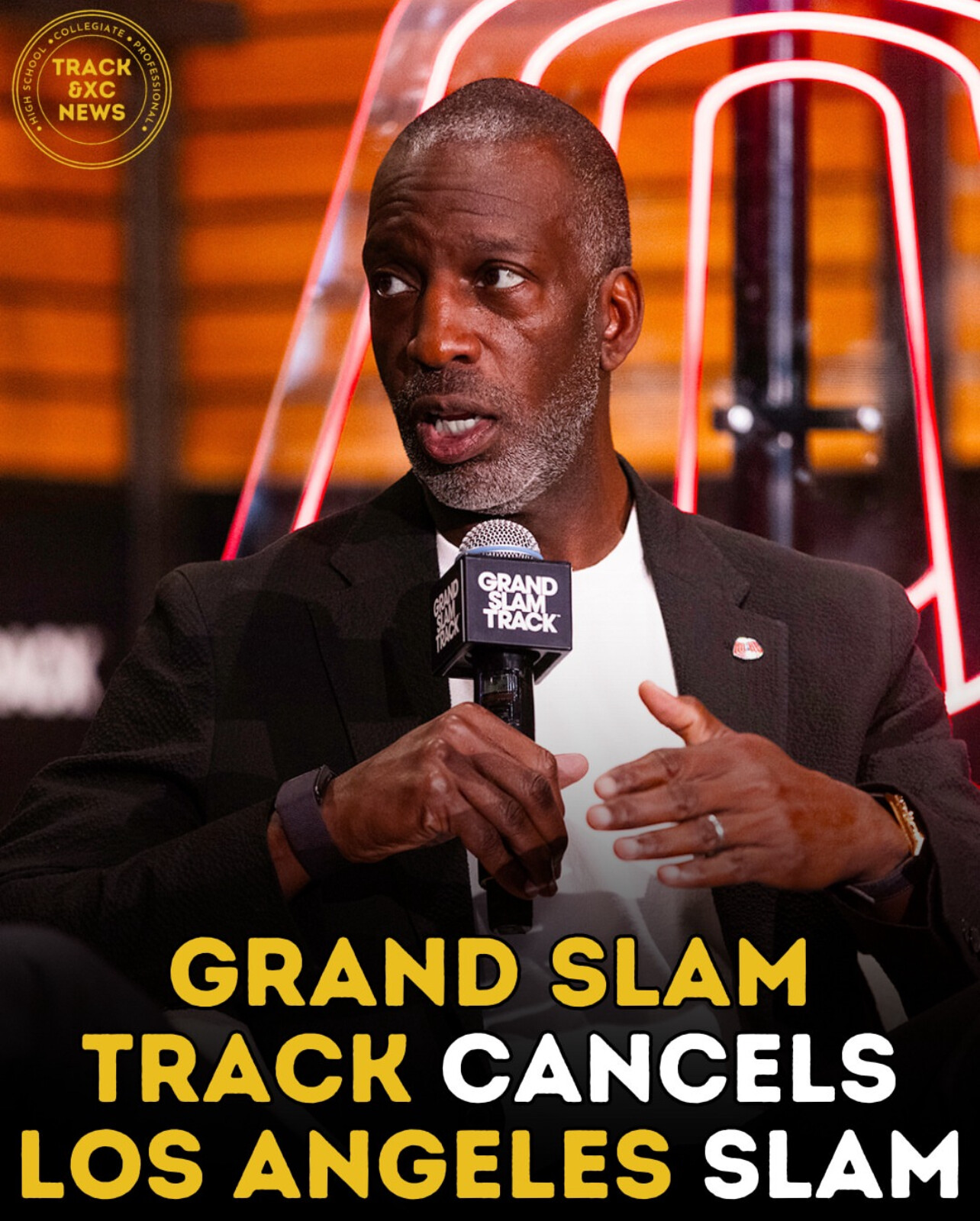
GST executive Kyle Merber recently attempted to ease concerns by emailing athlete representatives with a tentative payment plan. According to the message, prize money from Kingston will be paid by the end of July, with all other outstanding payments—including those for the canceled Los Angeles leg—expected by the end of September.
But skepticism remains. “It is still a bit vague,” one top agent told The Times. “If they have the money, why can’t they pay it now? For some of these athletes, we are talking hundreds of thousands of dollars.”
Reports of internal staff layoffs at GST have only added to the uncertainty.
Athlete managers and associations are now getting involved, demanding transparency and accountability. The Association of Athletics Managers recently held a meeting with Johnson to seek clarification, but sources say no firm dates or guarantees were given.
As the dust settles from what was supposed to be a revolutionary series for the sport, key questions remain unanswered:
• How much money was actually collected by GST?
• Have any athletes received their payments in full?
• What safeguards will be put in place to protect athletes moving forward?
"Big promises but I don't think GST set out to scam anyone," says Bob Anderson, " but those of us that have been around athletics for decades know that track and field is a hard sell. I hope the athletes involved will be paid but they should not count on it."
With millions promised and reputations on the line, the success—or collapse—of GST could set a precedent for future independent track series. For now, the running world waits.
by Boris Baron
Login to leave a comment
Grand Slam Track Stumbles After Strong Start, Leaving Top Athletes Asking: Where’s the Money?
When Olympic legend Michael Johnson launched Grand Slam Track (GST), the vision was bold: reinvent the sport with an athlete-first approach, big prize purses, and a reimagined global format. With a $30 million launch budget and promises to reward performance like never before, GST quickly gained traction. But after the abrupt cancellation of its final event in Los Angeles, questions are swirling—and athletes are asking where their promised money is.
The LA meet, originally scheduled for June 28–29, was expected to close out GST’s four-meet pilot season. Instead, the cancellation reportedly saved the organization upwards of $3 million, and left some top athletes publicly wondering when—or if—they’ll get paid.
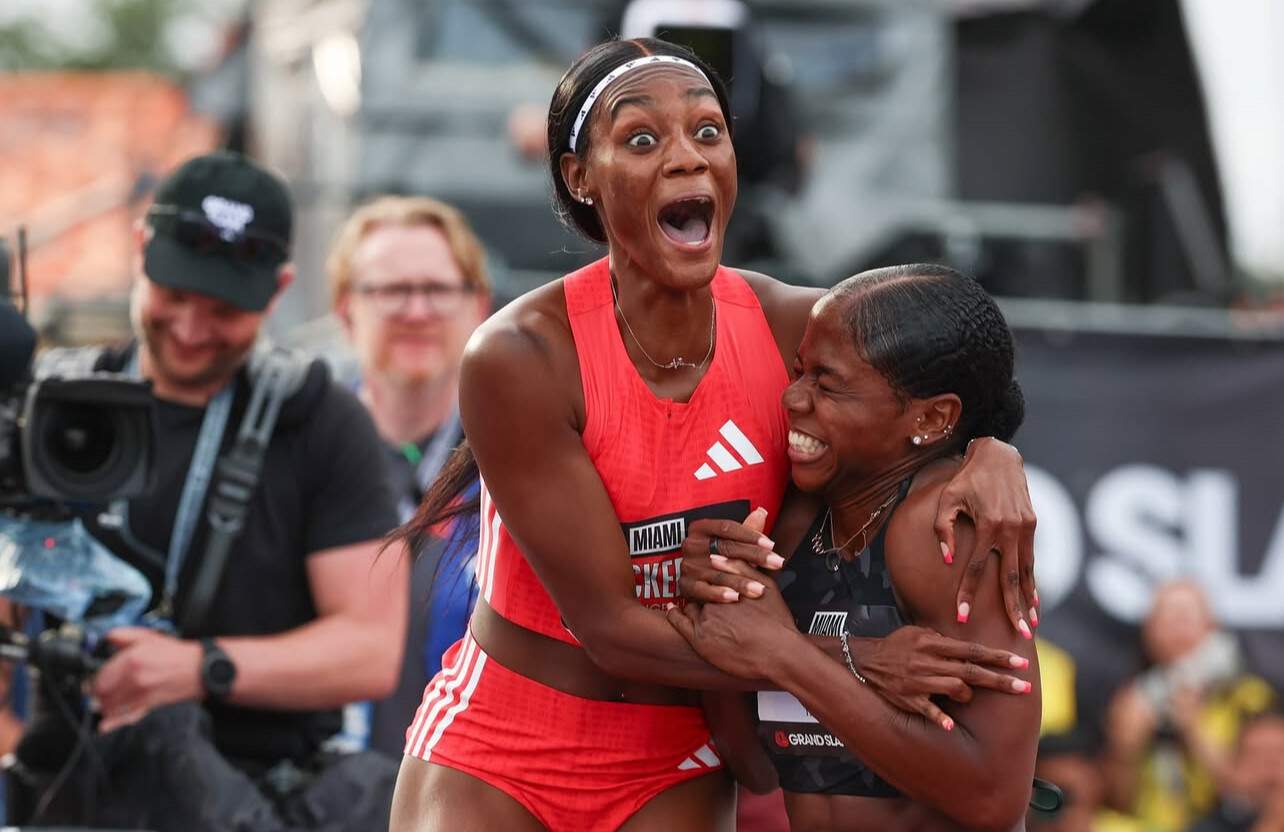
Brazil’s Alison dos Santos, the 2022 world champion in the 400m hurdles, told Norwegian outlet NRKthat he is still waiting on his $250,000 prize check. He said the cancellation came as a surprise but remains hopeful that the money will arrive later this year.
Others were more skeptical. Emmanuel Wanyonyi, Kenya’s Olympic 800m champion and winner of the short-distance event at GST Kingston, admitted after his victory at the Bislett Games that he hadn’t been paid either. “It might come. Why shouldn’t it come?” he said. “They have to pay us. I’ll be patient and wait.”
American distance phenom Nico Young, who won the 3,000m at the Philadelphia Slam and followed that performance with a U.S. record in the 5,000m (12:45.27) in Oslo, offered a more cautious response: “I don’t know if I’m supposed to say anything about it. We’re working on it.”
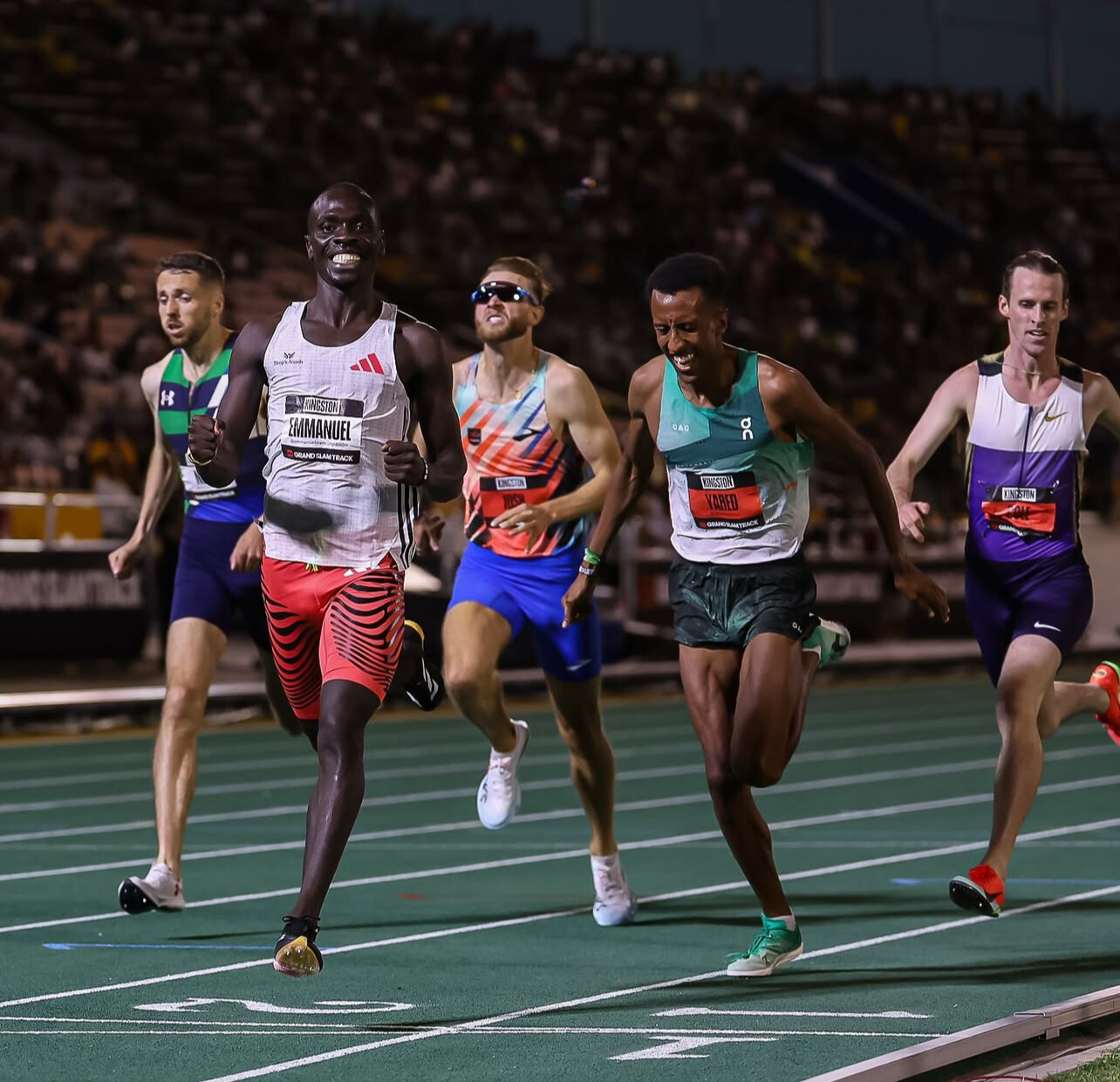
Even those with positive experiences are waiting. Charles Philibert-Thiboutot, a two-time Olympian for Canada, praised GST after competing in Kingston. “Grand Slam Track was one of the best experiences I’ve had as a pro,” he told Canadian Running. “I’m sad to see it struggle, because I do think that’s the way athletes should be treated at the highest level.” Still, he acknowledged he hasn’t been paid yet—but was told the money is on the way.
An agent representing multiple GST athletes confirmed that only half of the prize money from Kingston has been paid, and that winners from Miami and Philadelphia are still waiting. Delays in payout aren’t uncommon in professional track, with 6–12 week lags the norm—but with Kingston now 11 weeks in the rearview, patience is thinning.
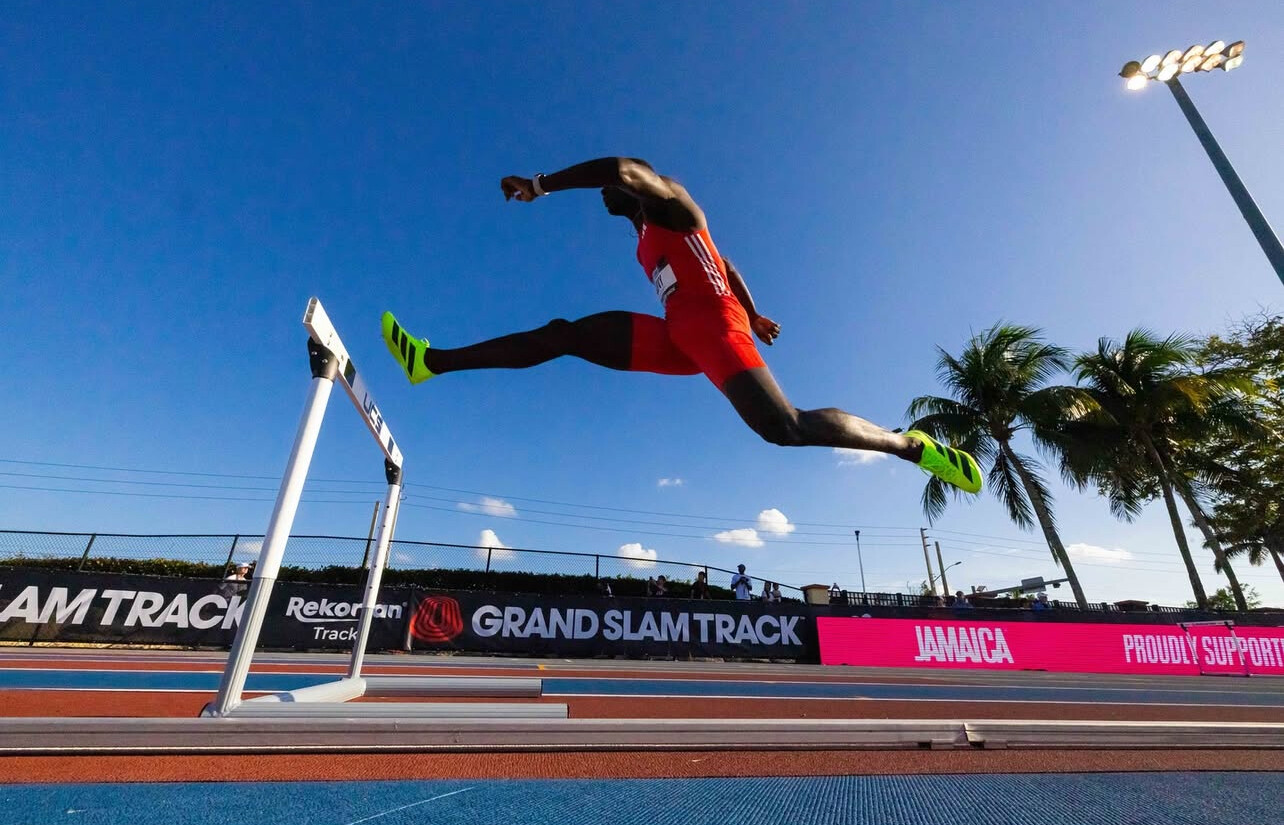
GST was originally backed by a $30 million budget, with $12.6 million earmarked for prize money—$3.15 million per event. The league also supported athlete contracts and high-end production values across its three completed events in Kingston, Miami, and Philadelphia.
In an email to NRK, GST spokesperson Callum Squires cited poor financial conditions at the LA venue as the reason for the cancellation. “The success of our three previous events has led us to make the difficult choice to end the pilot season and set our sights on 2026,” he wrote. “We will announce investors and new partnerships next week.”
Whether Grand Slam Track can recover and return stronger in 2026 may hinge on what happens next—and especially whether the league delivers on its most essential promise: paying the athletes who brought their best to the track.
by Boris Baron
Login to leave a comment
LA Grand Slam Track Meet Canceled, Casting Uncertainty Over Series Finale
The highly anticipated LA Grand Slam Track meet, scheduled for June 28–29 at UCLA’s Drake Stadium, has officially been canceled, marking an abrupt and disappointing end to the inaugural season of Michael Johnson’s ambitious new professional track league.
The cancellation, confirmed via athlete emails and an internal league meeting held shortly after the Oslo Diamond League, follows a string of logistical and financial setbacks that have shadowed the 2025 Grand Slam Track series.
Why Was the LA Meet Canceled?
Multiple factors contributed to the league’s decision to call off its final stop:
• Venue costs: UCLA’s Drake Stadium lease proved to be prohibitively expensive, and cost-benefit analysis showed the meet could not be held sustainably under current terms.
• Market saturation: The earlier cancellation of the LA Grand Prix by USA Track & Field, citing overlap with Grand Slam Track, signaled underlying concerns about the local track market.
• Attendance and revenue: Despite high-profile athletes and large prize purses, audience turnout and ticket sales in previous meets (notably Kingston and Miami) fell short of expectations.
• Operational strain: The Philadelphia Slam was also shortened from three days to two, reflecting broader constraints in the league’s first year.
Recapping the 2025 Grand Slam Track Series
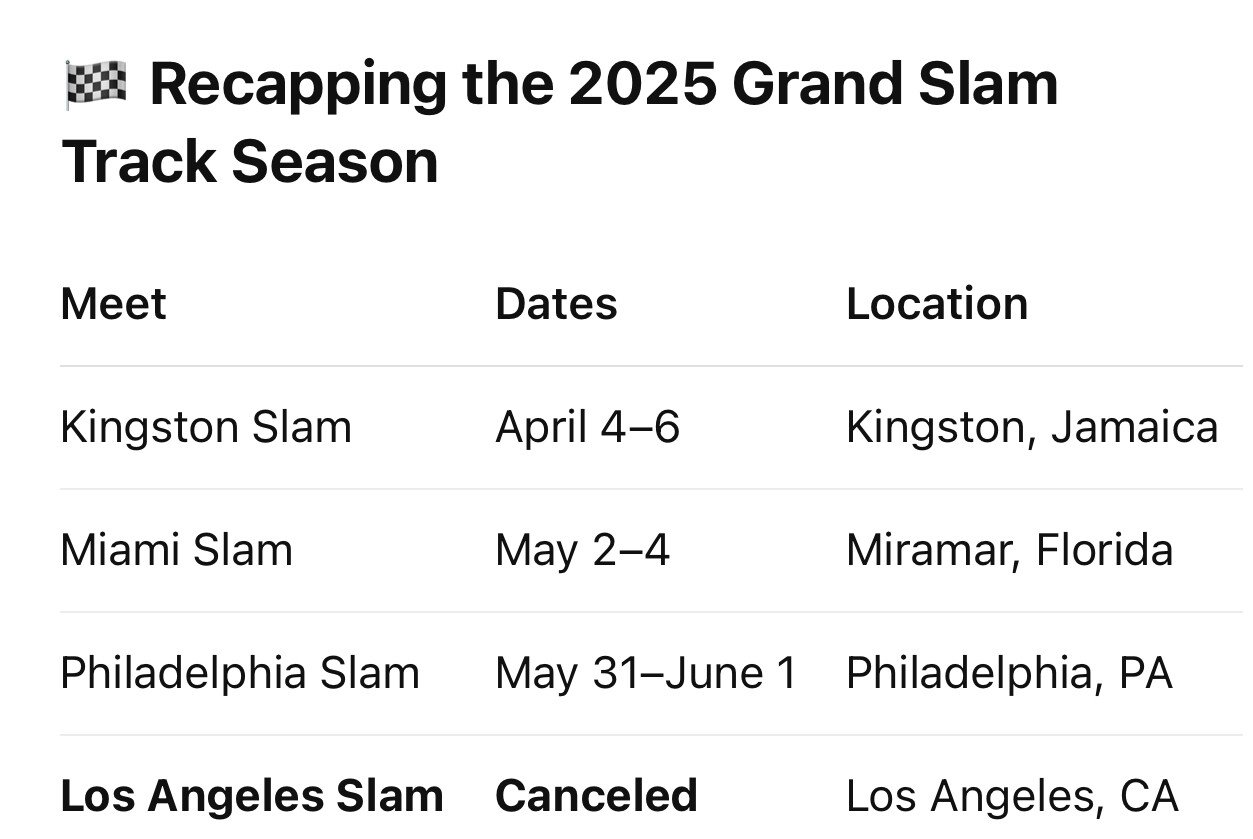
Each meet featured world-class fields and a $100,000 winner’s prize per event—part of a $12.6 million total purse. The series received coverage on Peacock and The CW, and was positioned as a bold alternative to the Diamond League.
What’s Next for Grand Slam Track?
Despite the disappointing end, founder Michael Johnson insists the pilot season met its objectives: proving that a high-stakes, athlete-first, fan-centered pro track league can attract global attention.
The league now shifts its focus to 2026, aiming to:
• Secure new strategic partners and sponsorships
• Optimize venue selection and fan engagement
• Revise its financial model for long-term sustainability
While the LA cancellation raises questions about viability, there is still optimism that Grand Slam Track will return, stronger and more refined, in season two.
The cancellation of the LA meet is a setback—but not a death blow. Grand Slam Track managed to draw eyes, deliver compelling performances, and push the conversation forward in pro track and field. Whether it can evolve into a sustainable, annual series remains to be seen—but the world will be watching.
by Boris Baron
Login to leave a comment
Day 3 Recap: Grand Slam Track Miami Delivers High Drama and Big Payouts
The final day of the Grand Slam Track meet in Miami concluded with thrilling performances and significant prize money awarded to top athletes. Held at the Ansin Sports Complex from May 2–4, this event marked the second stop in the inaugural Grand Slam Track series, founded by Olympic legend Michael Johnson.
Top Performers and Prize Money Winners
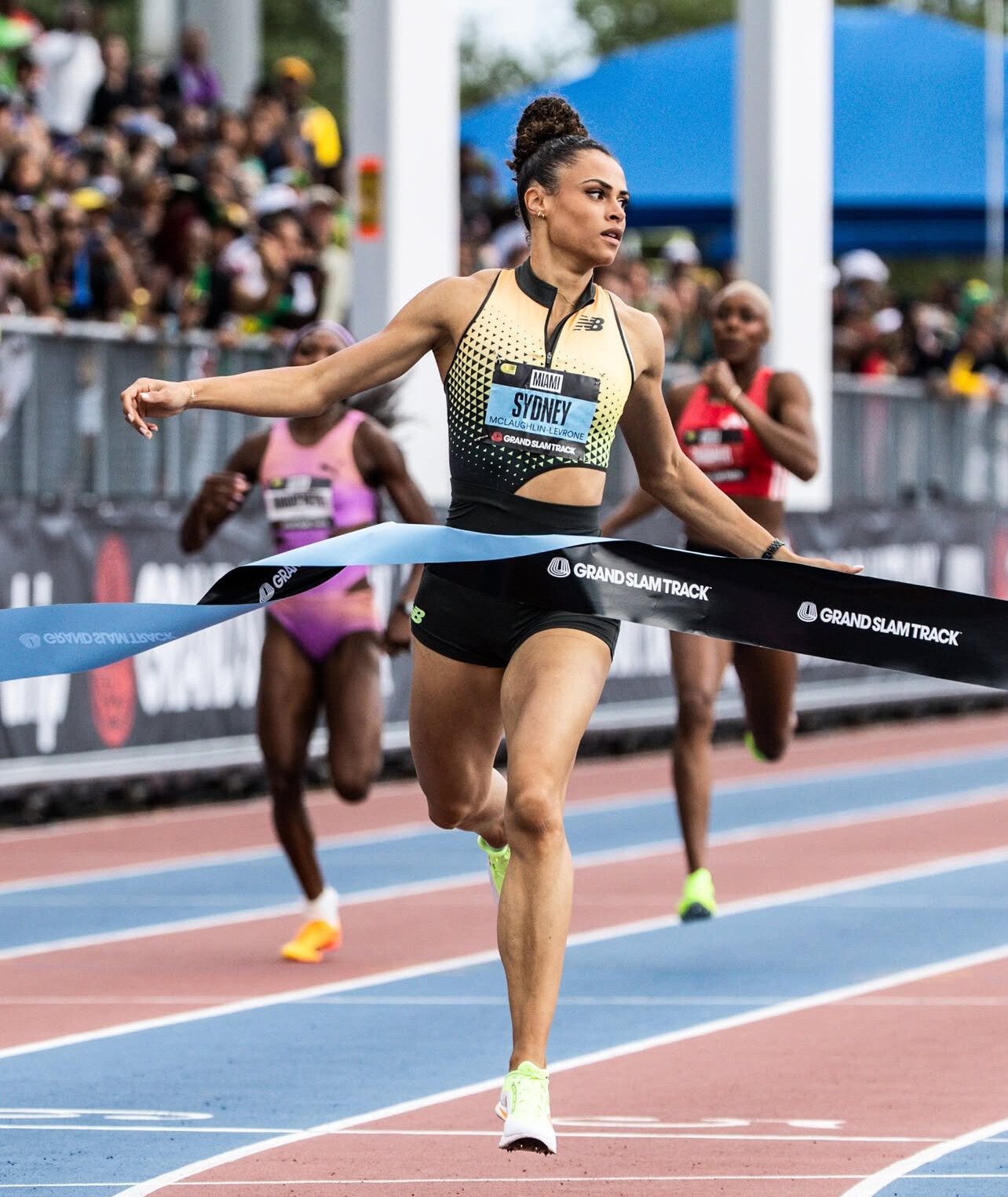
The Grand Slam Track series features six event groups, each comprising two disciplines. Athletes accumulate points across both events, with the highest total determining the group champion. Winners receive $100,000, with payouts extending to the eighth place at $10,000.
Men’s Short Sprints (100m & 200m):
Kenny Bednarek secured victories in both the 100m (9.79 seconds, wind-aided) and 200m (19.84 seconds), earning the maximum 24 points and the $100,000 prize.

Women’s Long Hurdles (400m Hurdles & 400m):
Sydney McLaughlin-Levrone dominated her events, including a 400m win in 49.69 seconds, clinching her second consecutive Grand Slam title and $100,000.
Men’s Short Distance (800m & 1500m):
Josh Kerr won the 1500m in 3:34.51 and placed fifth in the 800m with a personal best of 1:45.01, accumulating 16 points to secure the group title and $100,000.
Women’s Short Sprints (100m & 200m):
Melissa Jefferson-Wooden became the first athlete to win back-to-back Grand Slam titles, winning the 100m in 10.75 seconds and placing third in the 200m, totaling 18 points and earning $100,000.
Men’s Long Distance (3000m & 5000m):
Grant Fisher won the 5000m, securing enough points to top the long-distance group and take home $100,000.
“I need to be ready to win in a lot of different scenarios,” said Grant Fisher after his dominant performance in the men’s 5000m at the Grand Slam Track meet in Miami. The U.S. star closed with a blistering 3:57.58 over the final 1600 meters, showcasing both tactical patience and lethal finishing speed en route to his 13:40.32 victory over 12.5 laps.
Women’s Long Distance (3000m & 5000m):
Agnes Jebet Ngetich won the 5000m with a time of 14:25.80, setting a course record and claiming the group title and $100,000.
Prize Money Structure
The Grand Slam Track series offers substantial financial incentives:
First-place finishers in each event group receive $100,000. Second place earns $50,000, third place takes home $30,000, and fourth place is awarded $25,000. Fifth through eighth places receive $20,000, $15,000, $12,500, and $10,000 respectively. This structure ensures that all finalists receive compensation, promoting competitive participation across the board.
Emerging Stars and Notable Performances
Several athletes delivered standout performances:
• Andrew Coscoran: The Irish runner won the 3000m in 8:17.56, marking the biggest victory of his career.
• Masai Russell: Set a new American record in the 100m hurdles with a time of 12.17 seconds, the second-fastest in history.
• Peter Bol: The Australian middle-distance runner earned $30,000 in his Grand Slam Track debut, showcasing his potential in the league.
Looking Ahead
With two events completed, the Grand Slam Track series moves to Philadelphia and Los Angeles. Athletes will continue to compete for significant prize money and the coveted “Racer of the Year” title, awarded to the top male and female athletes based on cumulative points across all four Slams.
by Boris Baron
Login to leave a comment
George Mills and Amon Kemboi Set for Grand Slam Track Debuts at Miami Slam
The Grand Slam Track league returns this weekend with its second meet of the season, the Miami Slam, taking place from May 2–4 at the Ansin Sports Complex in Miramar, Florida. Among the anticipated debuts is British middle-distance runner George Mills, who will compete in both the 3000m and 5000m events. Joining him is Kenyan long-distance runner Amon Kemboi, also making his Grand Slam Track debut in the same events.
George Mills (second photo):British Record-Holder Steps onto Grand Slam Stage
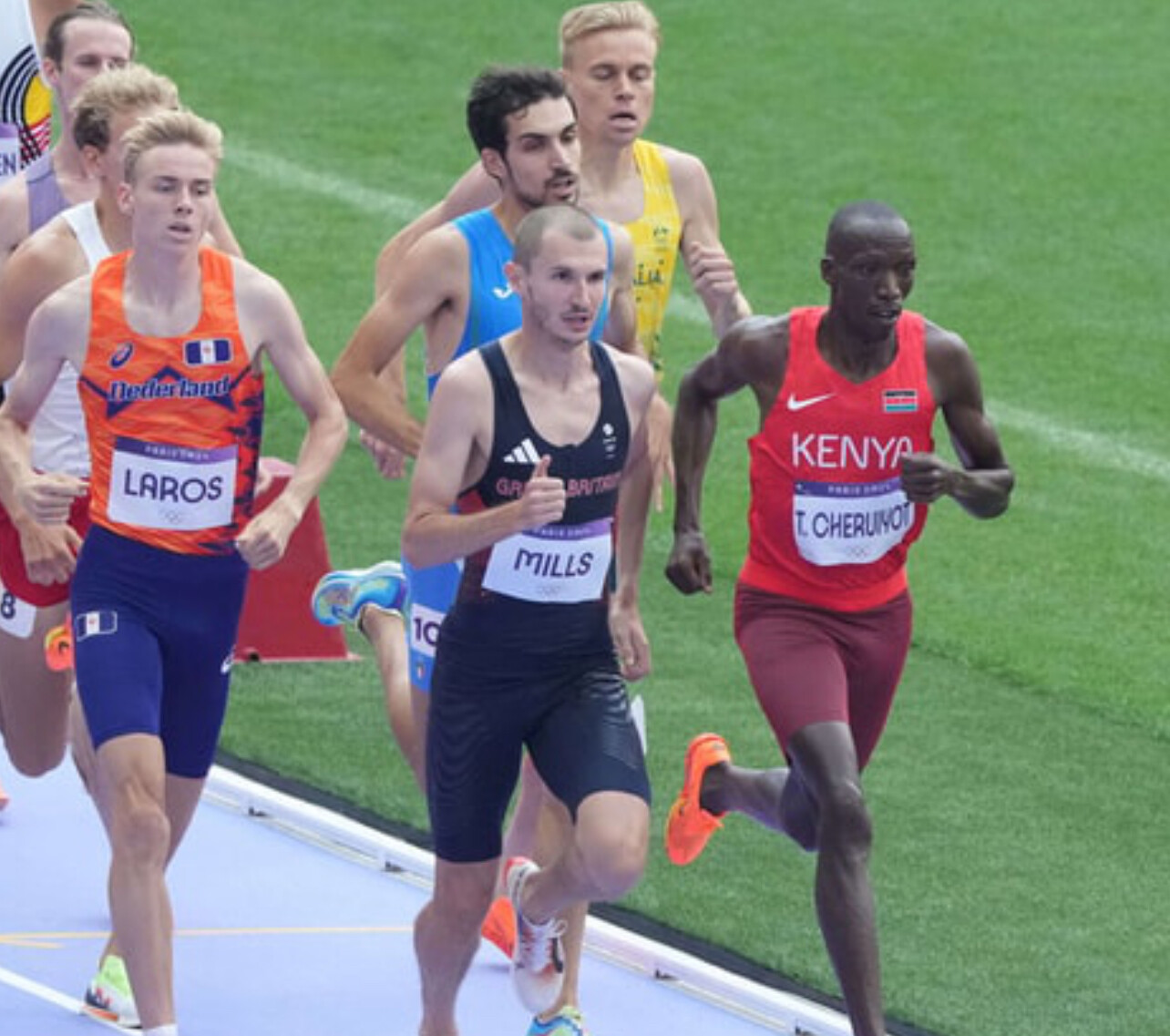
George Mills enters the Miami Slam with impressive credentials. Earlier this year, he set a new British indoor record in the 3000m with a time of 7:27.92, surpassing the previous record held by Josh Kerr. In the 5000m, Mills clocked an impressive 12:58.68, meeting the Olympic standard and showcasing his prowess over longer distances.

“It fits well right now to run a 3,000m and 5,000m double, and then we can tailor the rest of the year how we need to,” Mills stated ahead of the meet.
Amon Kemboi (first photo): Kenyan Star Makes Grand Slam Debut
Kenyan runner Amon Kemboi is also set to make his Grand Slam Track debut in Miami. Kemboi boasts personal bests of 7:38.99 in the 3000m and 13:06.30 in the 5000m. His participation adds depth to the long-distance field and introduces another formidable competitor to the Grand Slam Track series.
Grand Slam Track: A New Era for Track and Field
Founded by Olympic legend Michael Johnson, Grand Slam Track is revolutionizing professional track and field with a format inspired by Formula 1 and tennis. Each of the four “Slams” in the inaugural 2025 season—Kingston, Miami, Philadelphia, and Los Angeles—features 48 elite “Racers” competing head-to-head with 48 “Challengers” across sprint, hurdle, and distance events. Athletes race twice per weekend, earning points toward a $100,000 Slam title and a shot at the season-long championship.
Miami Slam Schedule Highlights (All Times ET)
• Friday, May 2:
• 5:42 PM – Women’s 100m Hurdles
• 5:51 PM – Men’s 1500m
• 6:16 PM – Women’s 5000m
• 7:01 PM – Men’s 3000m
• Saturday, May 3:
• 5:42 PM – Women’s 400m Hurdles
• 6:22 PM – Women’s 1500m
• 7:05 PM – Men’s 800m
• Sunday, May 4:
• 3:42 PM – Women’s 800m
• 4:04 PM – Women’s 3000m
• 4:44 PM – Men’s 5000m
How to Watch
• Streaming: Peacock will provide live coverage of all events.
• Broadcast: The CW Network will air live coverage on Saturday and Sunday.
As George Mills and Amon Kemboi make their Grand Slam Track debuts, fans can anticipate thrilling performances in the long-distance events. Their participation not only adds excitement to the Miami Slam but also underscores the global appeal and competitive spirit of this innovative track and field series.
by Boris Baron
Login to leave a comment
Grand Slam Track Bold Start Amidst Challenges
The inaugural Grand Slam Track event, held from April 4–6, 2025, at Jamaica’s National Stadium in Kingston, marked a transformative moment in professional track and field. Spearheaded by Olympic legend Michael Johnson, the series aims to revitalize the sport by offering substantial prize money and a unique competition format.
Innovative Competition Format
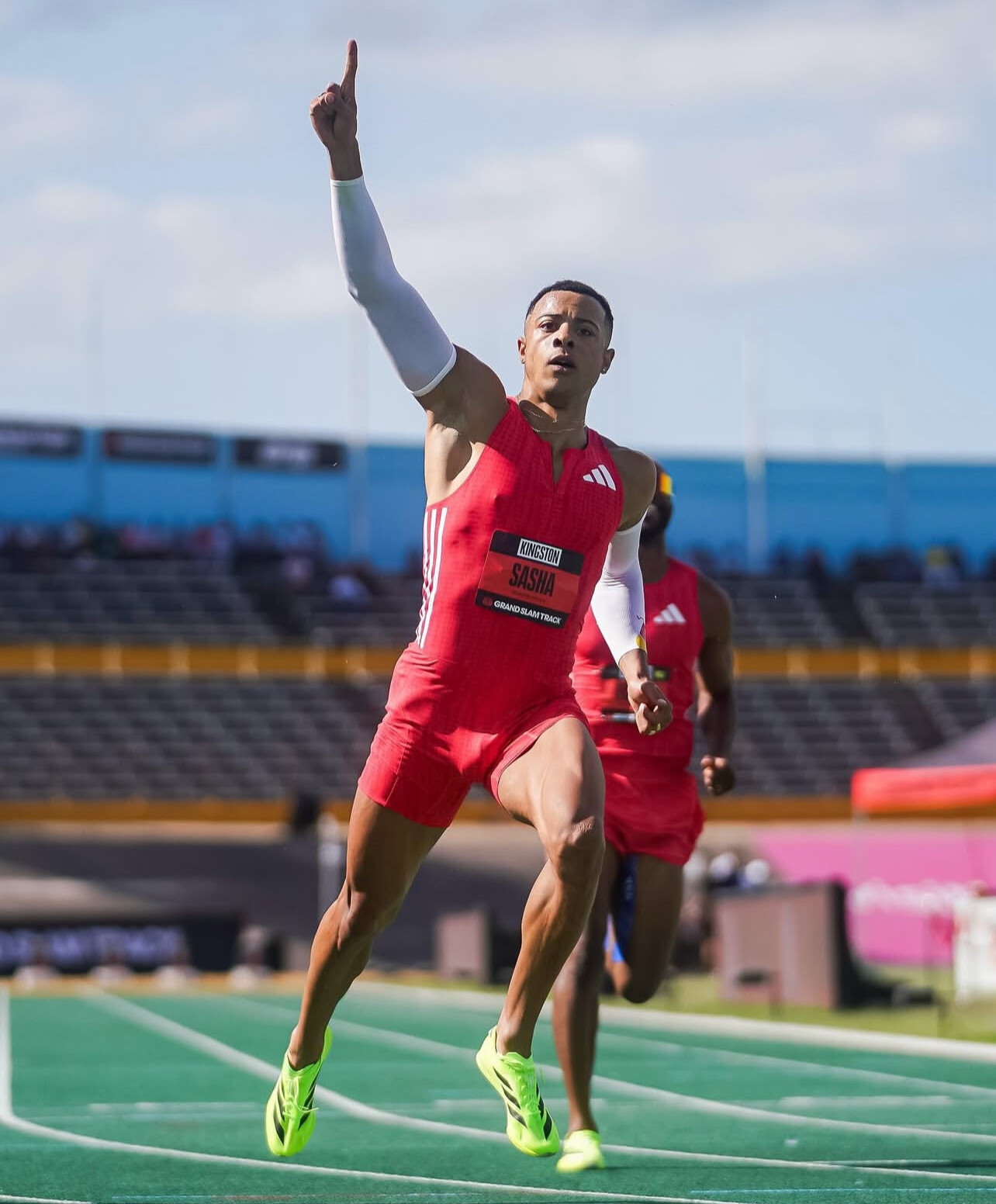
Grand Slam Track introduces a fresh approach to track and field competitions. Athletes are divided into 12 event groups—six for men and six for women—each comprising two disciplines:

• Short Sprints: 100m and 200m
• Long Sprints: 200m and 400m
• Short Hurdles: 100m hurdles (women), 110m hurdles (men)
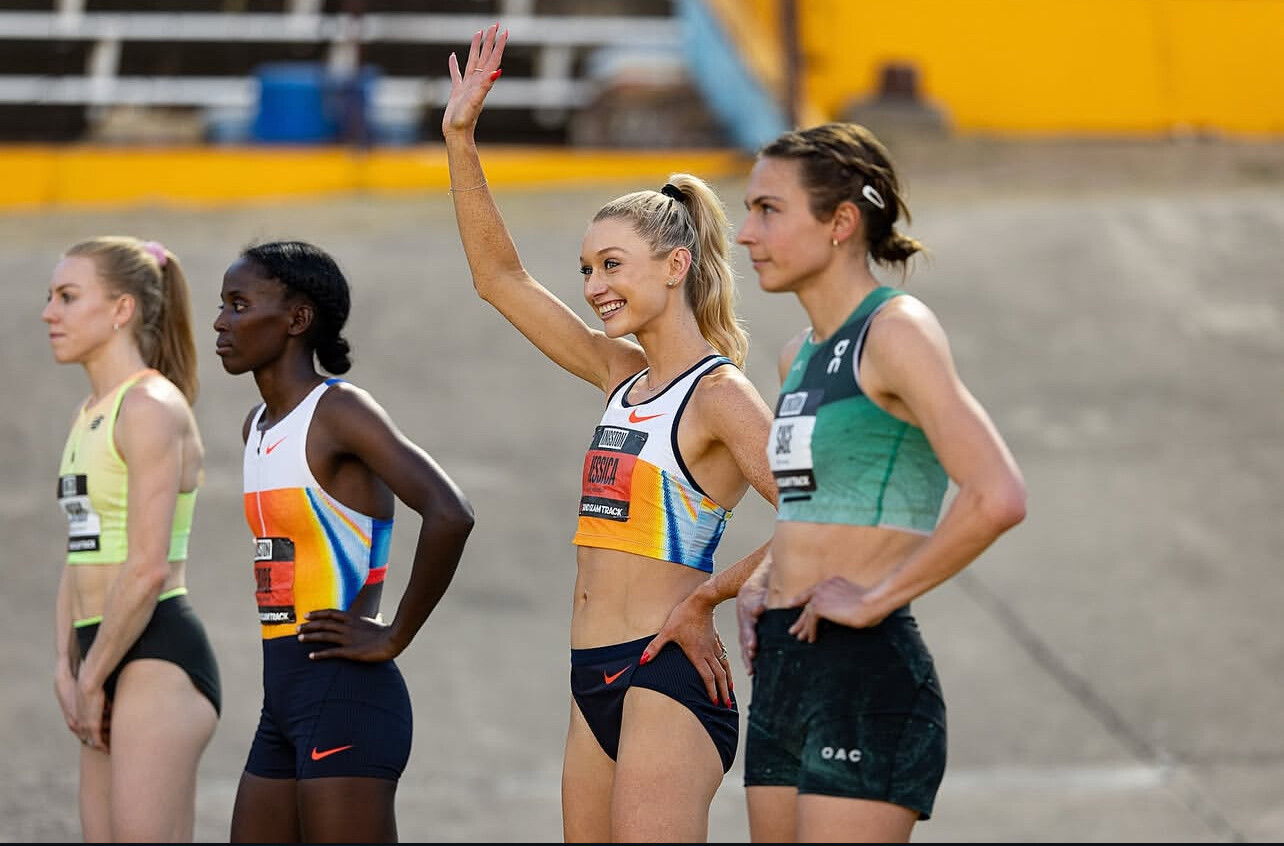
• Long Hurdles: 400m hurdles and 400m
• Short Distance: 800m and 1500m
• Long Distance: 3000m and 5000m
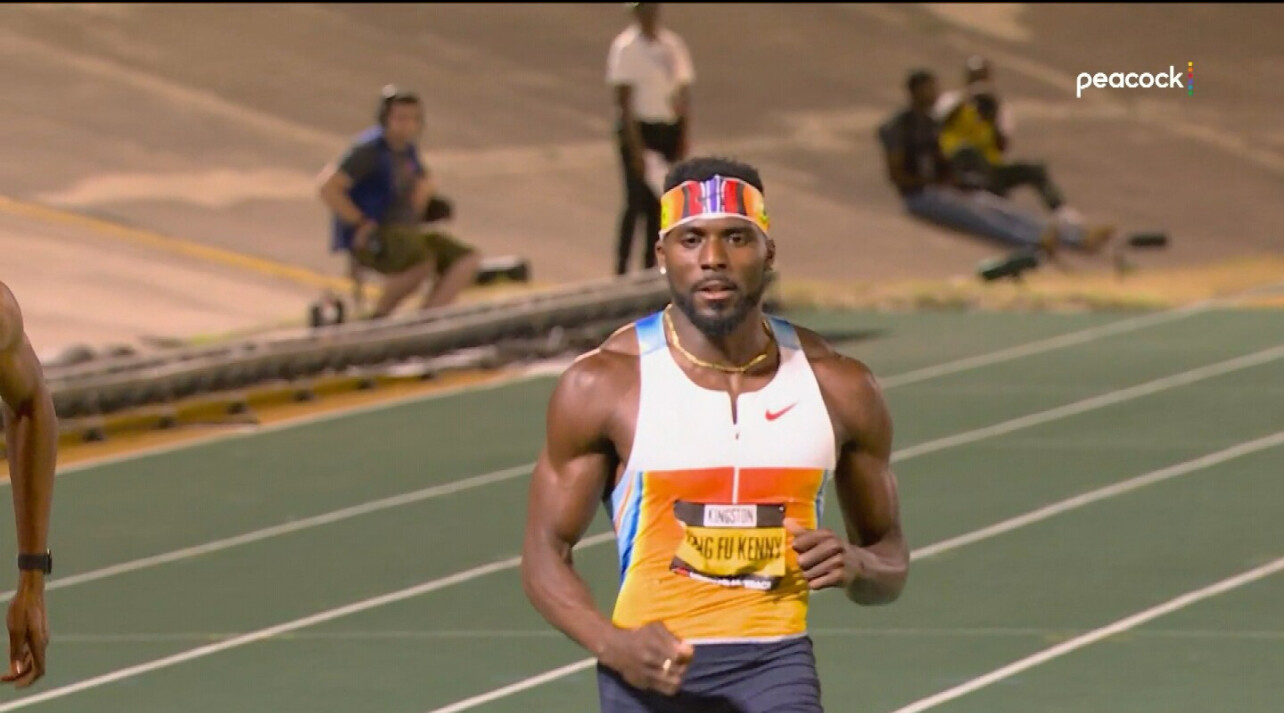
Over three days, competitors face off in both events within their group, earning points based on their performances. Points are awarded as follows:
• 1st place: 12 points
• 2nd place: 8 points
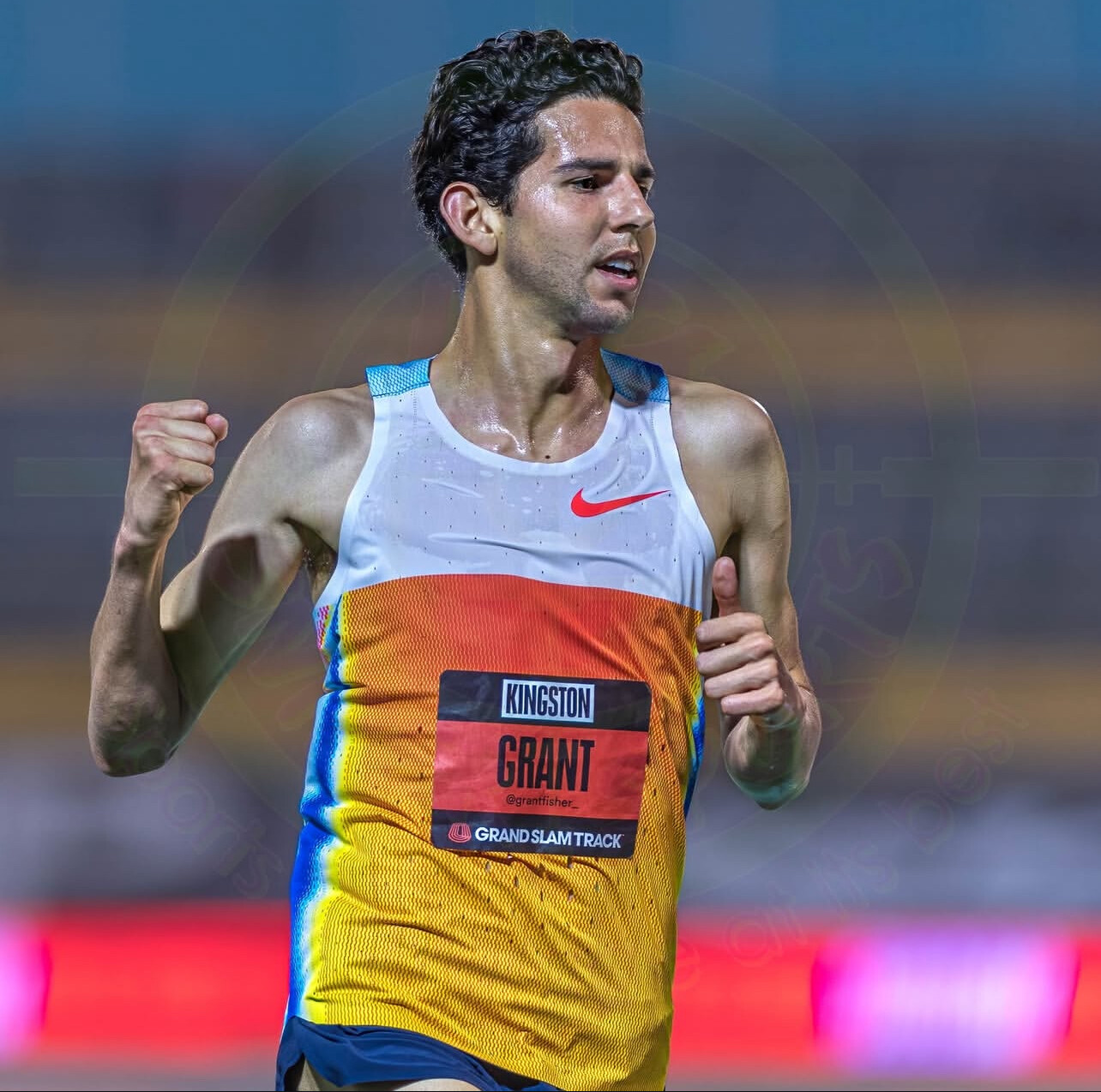
• 3rd place: 6 points
• 4th place: 5 points
• 5th place: 4 points
• 6th place: 3 points
• 7th place: 2 points
• 8th place: 1 point
The athlete with the highest combined score in each group is crowned the “Slam Champion” and awarded a $100,000 prize. In total, $1.2 million was distributed among the 12 group winners in Kingston, contributing to the event’s overall prize pool of $3.15 million.
Standout Performances
• Grant Fisher: The American distance runner secured the men’s long-distance Slam Champion title. Fisher won the 5000m in 14:39.14 and placed third in the 3000m with a time of 8:03.85, accumulating the highest points in his group and earning $100,000.
• Kenny Bednarek: Bednarek dominated the men’s short sprints, winning both the 100m in 10.07 seconds and 200m in 20.07 seconds. His flawless performance earned him the maximum 24 points and the $100,000 prize.
• Gabby Thomas: Thomas showcased her versatility by winning the women’s 200m in 22.62 seconds and finishing second in the 400m with a personal best of 49.14 seconds. Her combined results secured her the women’s long sprints title and a $100,000 award.
Challenges in Attracting Top Talent
Despite the substantial prize money and innovative format, the Grand Slam Track series has faced challenges in attracting some of the sport’s top athletes. Notably absent from the Kingston event were Olympic 100m champion Noah Lyles and double Olympic champion Jakob Ingebrigtsen. Lyles had previously indicated he would only participate if the league secured a broadcast partner, which it now has with deals on The CW and Peacock. However, he has yet to join the roster. Ingebrigtsen, on the other hand, reportedly declined participation due to the format requiring athletes to compete in two corresponding disciplines within an event category, which may not align with his specialization.
Financial and Attendance Concerns
The Kingston event, while successful in terms of athlete performances, struggled with low attendance. Reports indicate that the main grandstands never reached 50% capacity on any of the three days, with other sections remaining largely empty. Limited on-site parking and inadequate local marketing were cited as contributing factors to the sparse turnout. Financially, while the league has secured over $30 million in commitments from investors and strategic partners, the inaugural event’s low attendance and high operational costs suggest that it may have operated at a loss. However, organizers view this as a long-term investment in the sport’s revitalization.
Historical Context
Grand Slam Track is not the first attempt to establish a professional track and field league. The International Track Association (ITA), which operated from 1972 to 1976, initially attracted many top athletes but ultimately folded due to a lack of television revenue and difficulties in sustaining athlete participation. Similarly, the American Track League, founded more recently, has struggled to gain significant traction. These historical precedents highlight the challenges inherent in creating a sustainable professional track and field league.
Looking Ahead
The Grand Slam Track series continues with upcoming events in Miami (May 2–4), Philadelphia (May 30–June 1), and Los Angeles (June 20–22). Each meet follows the same format, offering athletes the opportunity to compete for significant prize money and fans the chance to witness high-stakes, head-to-head competition.
by Boris Baron
Login to leave a comment
Grand Slam Track League Aims to Revolutionize Track and Field
In an ambitious move to elevate professional track and field, sprinting legend Michael Johnson has launched the Grand Slam Track league. This innovative series promises athletes regular, high-stakes competitions against top-tier rivals, coupled with unprecedented financial incentives.
Unprecedented Financial Incentives
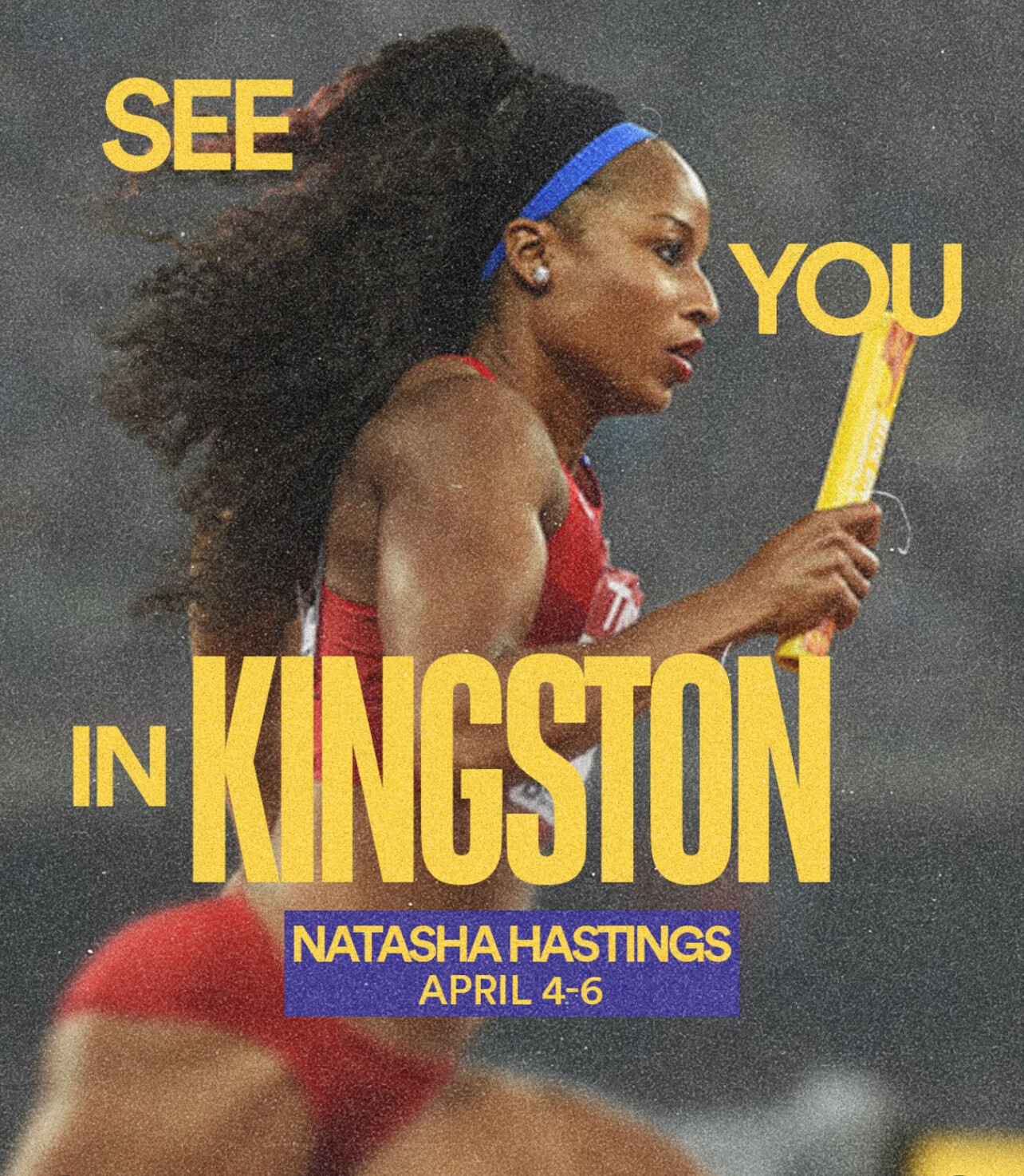
Grand Slam Track offers a substantial $12.6 million in prize money for its inaugural season. Athletes will compete in four major meets, with prize distributions as follows:
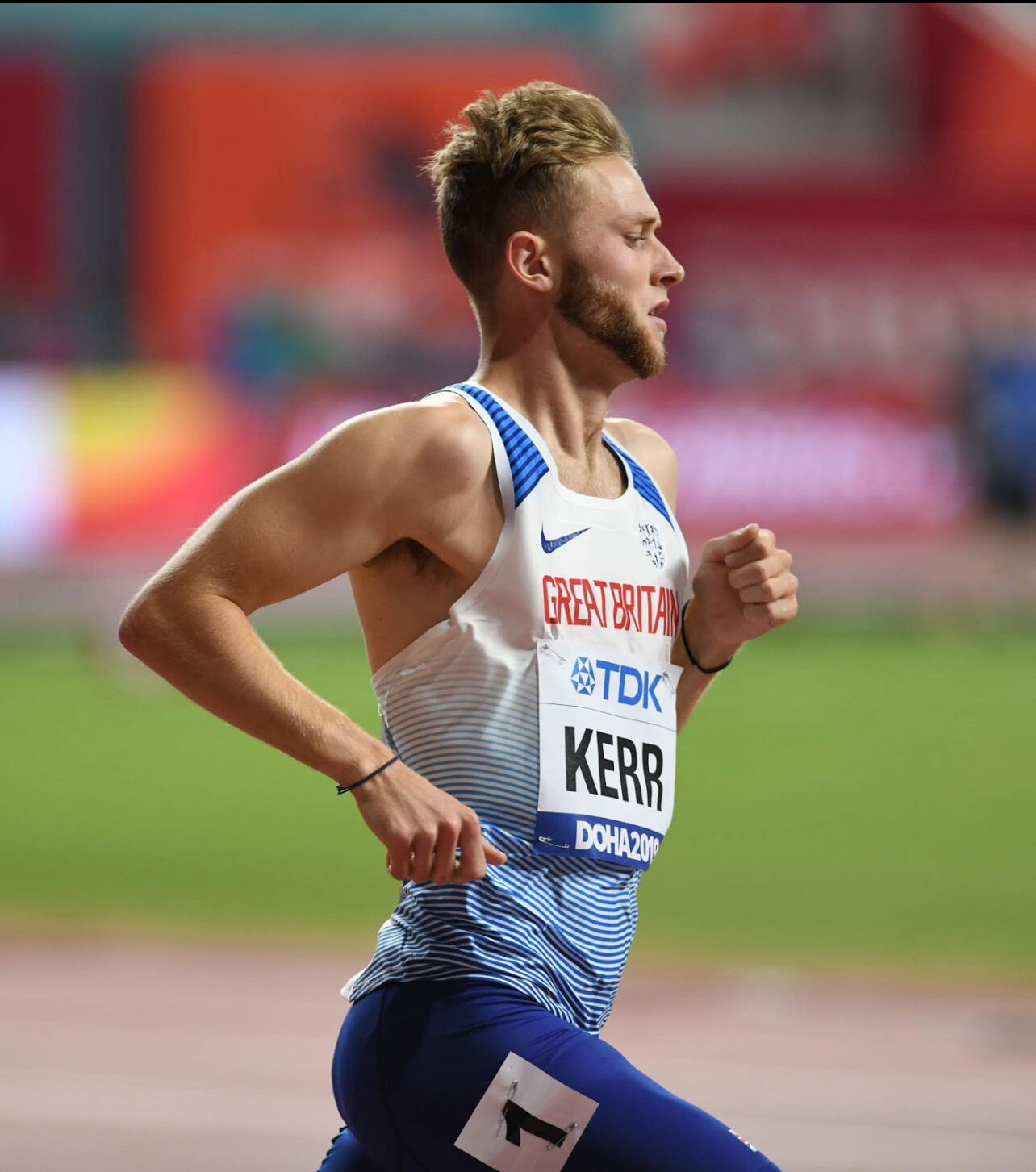
• 1st Place: $100,000
• 2nd Place: $50,000
• 3rd Place: $30,000
• 4th Place: $25,000
• 5th Place: $20,000
• 6th Place: $15,000
• 7th Place: $12,500
• 8th Place: $10,000
In contrast, the established Diamond League offers $10,000 for event winners and $1,000 for eighth place, highlighting Grand Slam Track’s commitment to elevating athlete compensation.
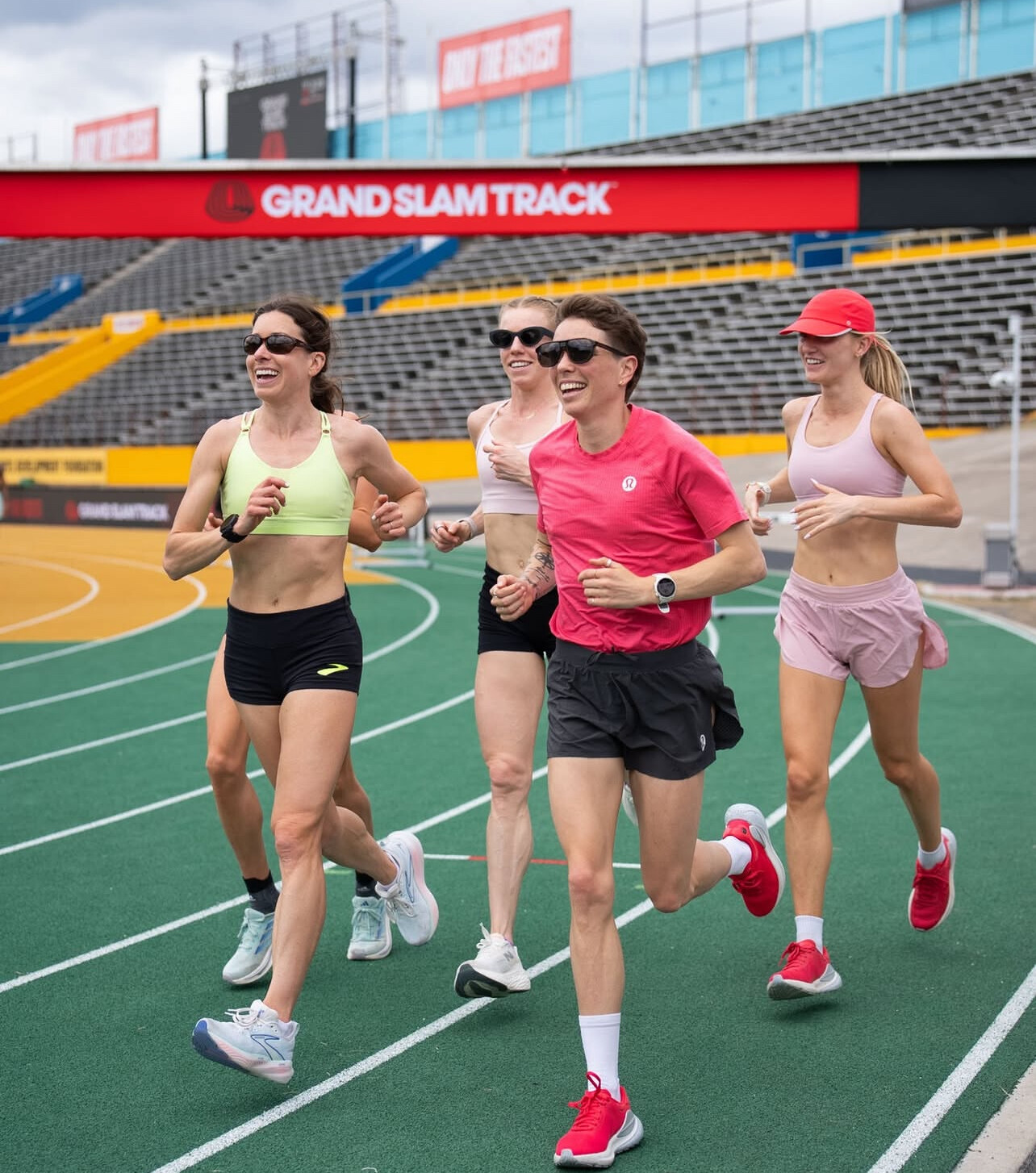
Season Schedule and Venues
The 2025 season features four high-profile meets:
1. Kingston, Jamaica – Independence Park: April 4–6
2. Miami, USA – Ansin Sports Complex: May 2–4
3. Philadelphia, USA – Franklin Field: May 30–June 1
4. Los Angeles, USA – Drake Stadium: June 27–29

These venues have been strategically selected to maximize global engagement and showcase the sport’s premier talents.
Elite Athlete Participation
The league has successfully attracted 48 elite athletes, known as “Grand Slam Racers,” who are contracted to compete in all four events. Notable participants include:
• Sydney McLaughlin-Levrone: Double Olympic champion in the 400m hurdles.
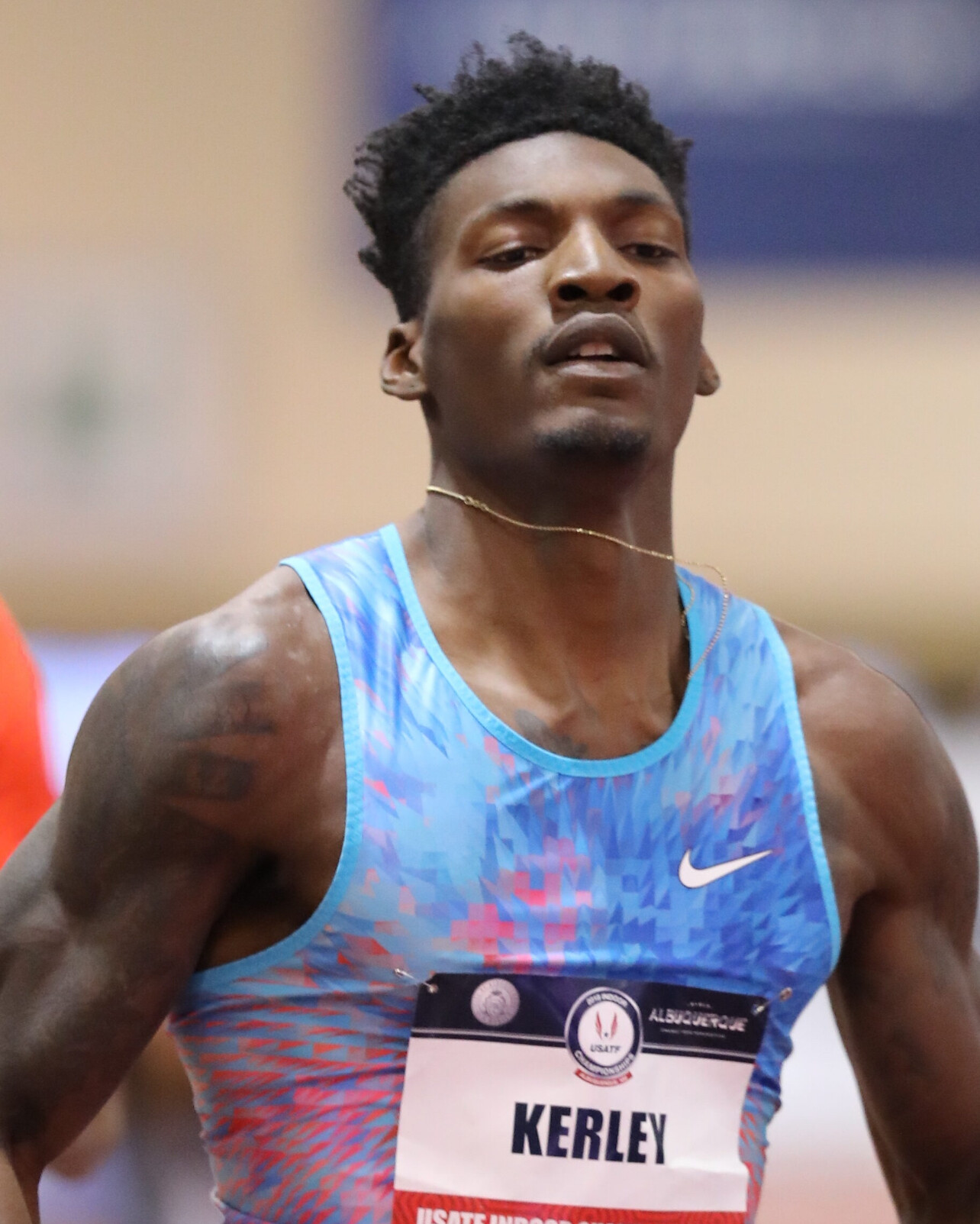
• Josh Kerr: 2023 world champion and 2024 Olympic silver medalist in the 1500m.
• Fred Kerley: World-renowned sprinter and Olympic medalist.
• Emmanuel Wanyonyi: Prominent middle-distance runner.
These athletes are poised to deliver thrilling head-to-head competitions, enhancing the sport’s appeal.
Visionary Leadership and Funding
Michael Johnson, a four-time Olympic gold medalist, spearheads the Grand Slam Track league. His vision is to create a platform that offers consistent, high-quality competitions and substantial financial rewards, addressing long-standing challenges in track and field.
The league has secured over $30 million in funding from private investments and strategic partnerships, including media rights deals with The CW Network and NBC Sports, ensuring extensive coverage and robust financial backing.
Broadcasting and Global Reach
Grand Slam Track has established broadcasting agreements with The CW Network and Peacock in the United States. Every event of each three-day meet will stream live on Peacock, with exclusive coverage of each Friday’s races, while The CW will air weekend coverage. NBC, whose parent company owns Peacock, will also air highlight specials.
The global broadcast team will be led by Steve Cram, Carrie Tollefson, and Anson Henry, with reporting from Radzi Chinyanganya and Taliyah Brooks. These collaborations aim to bring track and field to a broader audience, revitalizing interest in the sport.
With its innovative approach, substantial financial incentives, and commitment to showcasing elite talent, Grand Slam Track is set to redefine the landscape of professional track and field.
by Boris Baron
Login to leave a comment
‘Look out’ - Michael Johnson makes bold prediction about Sifan Hassan as she eyes marathon history
US sprint legend Michael Johnson is among those who cannot wait to see what Sifan Hassan will do next after the Dutch legend’s recent promise to break new marathon barriers.
American sprint legend Michale Johnson believes Sifan Hassan’s determination will carry her to another historic performance following her promise to run a sub 2:10 marathon.
Hassan is one of the greatest long-distance runners and had a highly successful 2024 season when she won bronze in both 5,000m and 10,000m before crowning it with gold in marathon.
Her gold medal win came just 37 hours after her 10,000m race, showing her remarkable levels of energy and perseverance, and heading into the 2025 season, she wants to become the second woman in history to dip under 2:10, following in the footsteps of Kenya’s Ruth Chepng’etich.
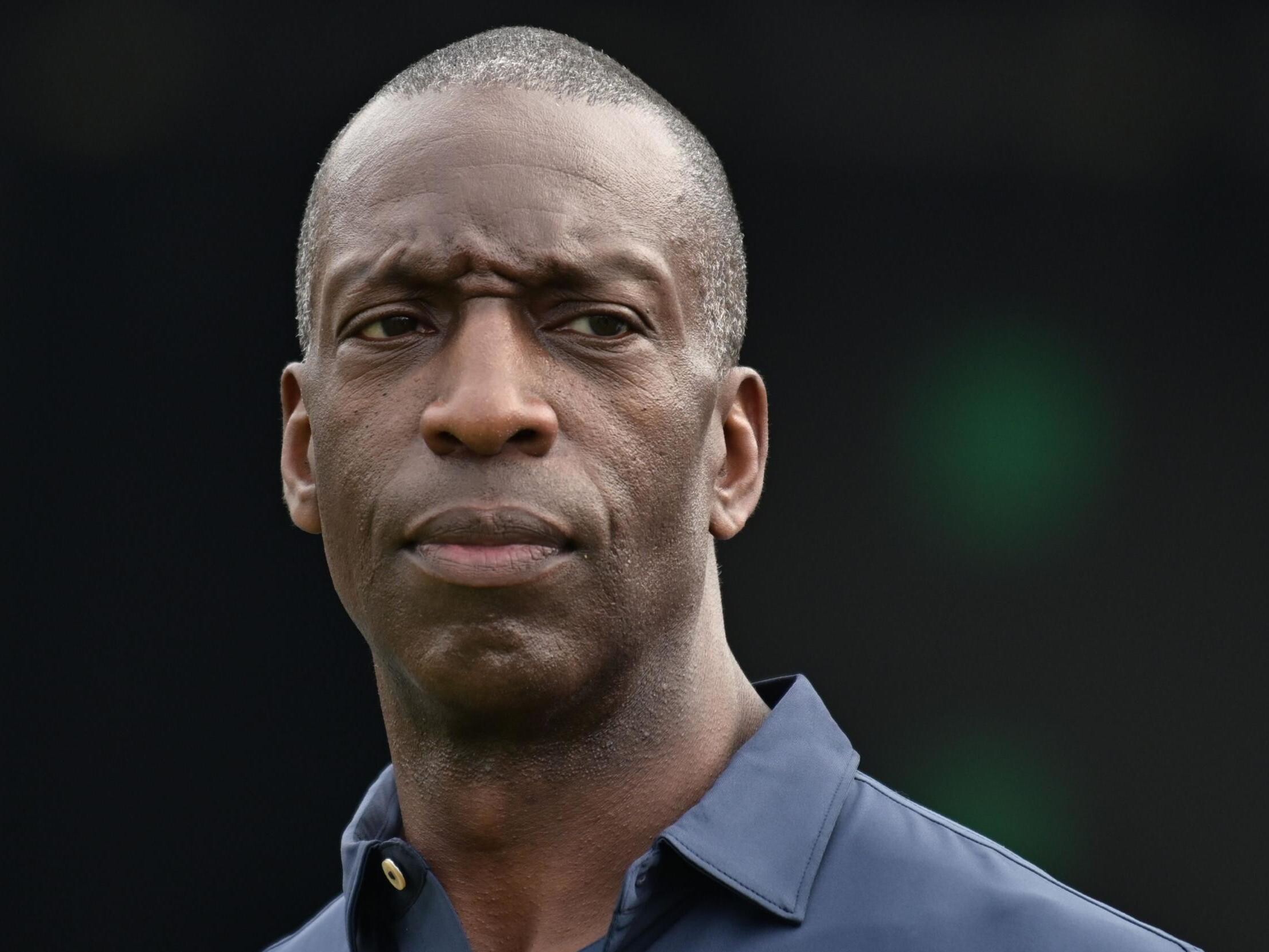
Chepg’entich became the first woman to achieve the feat, previously seen as impossible, when she ran 2:09:56 at last year’s Chicago Marathon, to set a new world record, after breaking Tigist Assefa’s mark of 2:11:53 set in Berlin in 2023.
“Maybe it takes me longer to work hard to achieve it [the sub 2:10 marathon],” Hassan said in a recent interview with Athletics Weekly. “But Ruth Chepng’etich [the reigning world record holder] has shown me it’s possible.”
It is that assurance that makes Johnson, a former world record holder, believe that Hassan could be the next to make marathon history given her determination and ability to take on and succeed in various challenges.
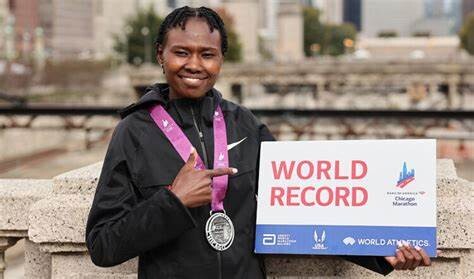
“When Sifan gets curious about something, look out,” Johnson posted on X.
Few can bet against Hassan doing it given what she has shown before, having claimed the London and Chicago marathons in 2023 before her rare hat-trick at the Olympics last year.
Hassan holds the third fastest time in marathon history of 2:13:44, clocked in Chicago two years ago, but that is nearly four minutes away from the world record, meaning she has her work cut out if she has to reach Cheng’etich’s levels.
“I want to see how far females can go. To see what is inside me and what I can do,” Hassan added during the interview.
After such a big year when she was crowned World Athlete of the Year, Hassan will be among the marathoners to beat in 2025 but whether that includes a world record is something fans will have to wait and see.
by Joel Omotto
Login to leave a comment
'I'm hitting numbers I've never hit before'- British sprint star happy with progress after injury ruined his 2024 season
The world 100m bronze medalist has fired warnings to Noah Lyles, Letsile Tebogo and Kishane Thompson.
Great Britain’s fastest man Zharnel Hughes has resumed training and things are looking up as far as getting into the right shape is concerned.
Zharnel Hughes suffered an injury in 2024, a setback that denied him an opportunity to compete more often and he was not ready by the time the Olympic Games were approaching.
The Olympic 100m bronze medalist was eliminated from the semifinal, being forced to continue his hunt for an individual medal from the Olympic Games.
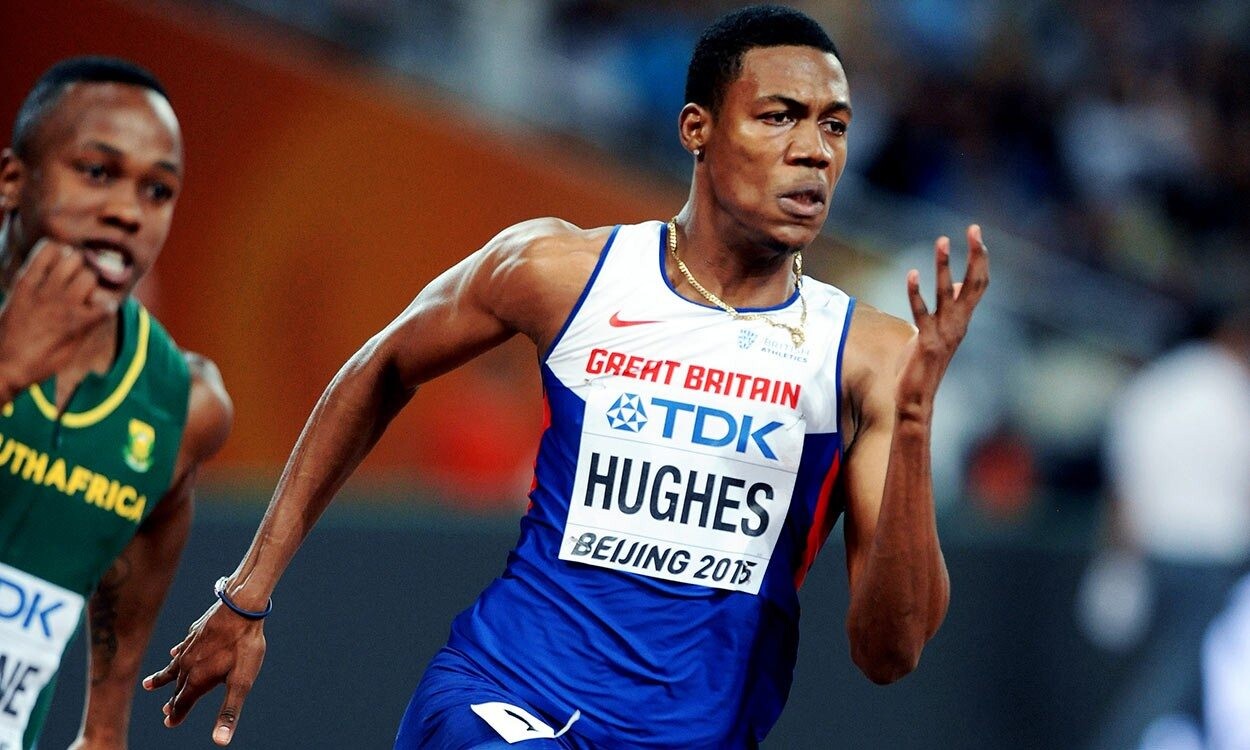
He was fortunate enough not leave the French capital without a medal as he claimed an Olympic bronze medal from the men’s 4x100m relay. However, Hughes was forced to withdraw from the 200m to ensure he does not cause more impact on his injury.
He did not compete after the Olympics and jetted back to Jamaica for treatment. Hughes then started light training immediately after getting a bit better and so far, he admitted that he is hitting new heights.

In an exclusive interview with Athletics Weekly, Hughes predicted that his 2025 season will be much different from 2024, noting that he is much confident now in his abilities and will be looking to stop the likes of Noah Lyles, Letsile Tebogo and Kishane Thompson from continuing their winning ways.
“From there, we have taken it day by day. I have been doing more strength work and have made a change to my strength and conditioning in the gym, and by doing that, I can feel a difference. I am hitting more personal bests in the gym already, I am hitting numbers I have never hit before,” Zharnel Hughes said.
“I am looking forward to seeing how I can execute throughout the season. I am feeling pretty confident with how my body is feeling and I just need to ensure that I am resting and recovering properly. You can do all the training but if you are not recovering properly then it can always hit the fan.”
His major focus will be on getting into shape for the 2025 World Championships in Tokyo, Japan and he hopes to attain that by competing at Michael Johnson’s Grand Slam Track League. Hughes also has eyes on the 100m and 200m national records.
by Abigael Wafula
Login to leave a comment
Olympic 800m champion refuses to sign with Grand Slam Track
Olympic 800m champion Keely Hodgkinson has expressed her lack of interest in signing with Grand Slam Track (GST), the new, lucrative rival to the Diamond League, according to The Standard. The British athlete plans to focus on running fast times and winning medals in 2025, choosing to forgo the chance to compete for the enormous US$400,000 prize purse awarded for winning all four GST meetings.
Hodgkinson still hopes to participate in the circuit as one of the four Challengers invited to compete. (Signed athletes are referred to as Racers). Michael Johnson, the creator of GST, plans to select these athletes based on their speed and popularity, while aiming to fuel existing rivalries. Challengers have one shot at the US$100,000 prize offered at each Slam, whereas Racers, who are already guaranteed base compensation upon signing, compete for the generous purse four times.
“I think it’s great what [Johnson’s] doing, I just don’t feel like it’s for me next year,” Hodgkinson said. “I guess we’ll see where the league goes after that. But I look forward to hopefully doing one.”

Hodgkinson would be slated to race against her frequent rival, 2023 world champion and 600m world record holder Mary Moraa. She would also face Olympic 1,500m silver medalist Jessica Hull and American mile record holder Nikki Hiltz, who round out the short-distance event roster.
Required to (almost) double her distance
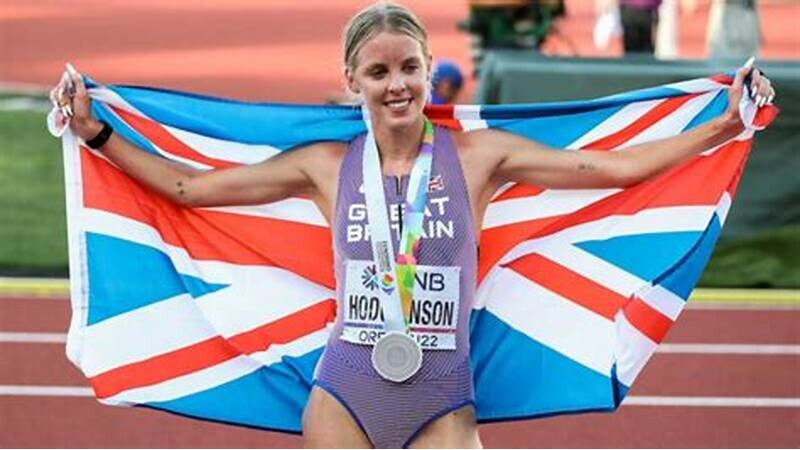
The league requires each athlete to participate in two events at each Slam; falling into the short distance category, Hodgkinson would race the 800m and 1,500m. While the Brit is less familiar with the latter, she would need to race the three-and-three-quarter-lap event four times during GST’s inaugural season.
An obligation to race eight times over four weekends and splitting her focus between two events doesn’t line up with Hodgkinson’s stated 2025 season goals. Although she called her season early due to an injury after winning gold in Paris, Hodgkinson already has her eyes on beating her personal best and earning more gold hardware from next year’s indoor European championships, and indoor and outdoor world championships
“It takes a special race”
“I do think the 1:53 is possible,” Hodgkinson, who holds a personal best of 1:54.61, told The Standard. “I think we’re so close to getting down there, but obviously it takes a special race. You’ve got to be in perfect shape, perfect conditions, the right race for all that to come together. I will definitely put myself in the best position to do so.”
Other major names missing from the GST roster include Jakob Ingebrigtsen, Noah Lyles and Sha’Carri Richardson. Currently, 43 of 48 athletes have signed with the league as Racers.
by Cameron Ormond
Login to leave a comment
'Taking my spikes off for the final time' – American sprinter Morolake Akinosun announces retirement at 30
Olympic gold medalist Morolake Akinosun announces her retirement at 30 after an illustrious career in track and field.
American sprinter Morolake Akinosun has announced her retirement from professional track and field at the age of 30.
The 2016 Olympic gold medalist and World Champion in the 4x100 meter relay bids farewell to a sport in which she has thrived for over a decade, leaving behind a legacy filled with victories, resilience, and a clear sense of purpose for her next chapter in life.
Akinosun, who earned international acclaim as part of Team USA's winning relay squad in the Rio 2016 Olympics, took to social media to confirm the news.
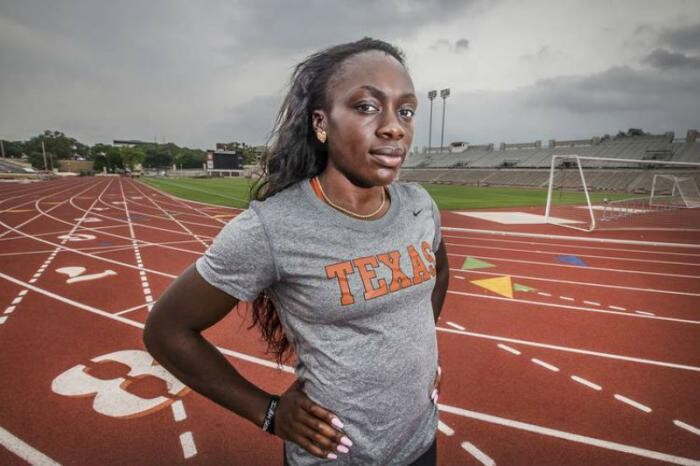
Akinosun, who earned international acclaim as part of Team USA's winning relay squad in the Rio 2016 Olympics, took to social media to confirm the news.
In a candid reflection on her career and her decision to retire, Akinosun shared that she felt a deep sense of peace about her decision following the 2024 Olympic Trials.
"Following the 2024 Olympic Trials, I had an overwhelming feeling and sensation immediately after that I was done. It felt so clear to me," she said as quoted by Citius Mag.
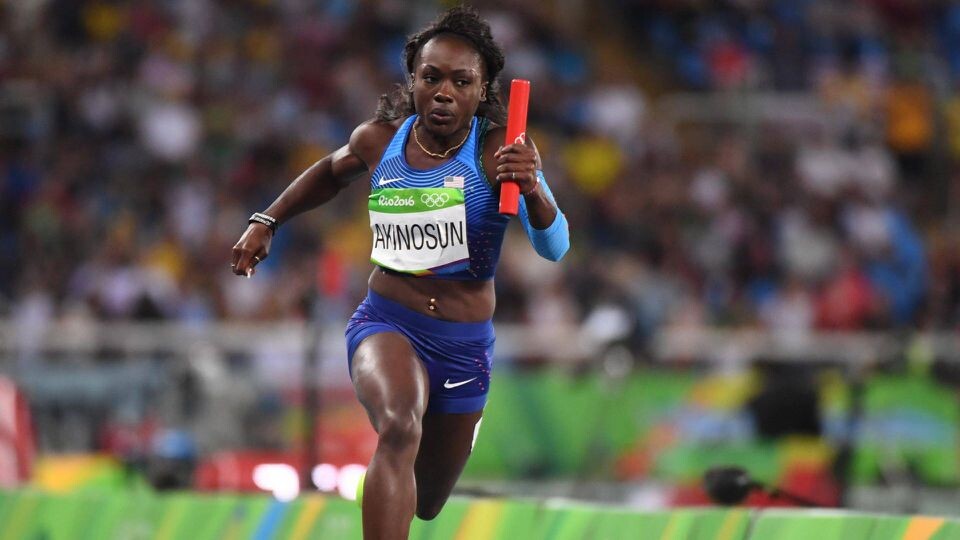
The Nigerian-born sprinter revealed that she prayed for clarity and soon found herself on a new path, meeting influential figures like Michael Johnson and Steve Gera.
Just a month later, she was headed to Paris to work as a consultant with Grand Slam Track and soon after joined the company full-time.
Akinosun’s track journey began with success at a young age, clinching gold medals in the 100 meters and 200 meters events at the 2011 AAU Junior Olympics.
She then ascended to the national stage as the 2013 USA Junior Champion in the 100 meters and silver medalist in the 200 meters.
Her collegiate career was equally groundbreaking, as she became only the second woman in history to score in four events at the NCAA Outdoor Championships in consecutive seasons.
Akinosun's true breakout on the global stage came when she won gold at the 2015 Pan-American Games in Toronto, setting the stage for her Olympic glory in 2016 and her World Championship triumphs.
She was part of the victorious 4x100m relay team at the 2017 World Championships in London and added a bronze medal from the 2019 World Championships in Doha to her extensive medal haul.
Despite her incredible success, Akinosun recognized early on the need to plan for life after track.
Outside of her athletic career she has already made a mark in the world of media and event management.
“I don’t know if anyone ever knows exactly what they want to do when they’re done,” Akinosun admitted.
“But I did start dabbling in other things to figure out what life could possibly look like for me post-track and field.”
by Festus Chuma
Login to leave a comment
50 laps and then a marathon: Sifan Hassan chases the ‘impossible’ dream at Paris Olympics
The Olympics is a time to marvel at the incredible but the sheer size of the opportunity should ensure an element of caution among athletes.
Not so for Sifan Hassan, the Dutch middle and long distance runner, after she announced her bid to pull off a historic treble at the Paris Olympics when she will compete in the 5,000m, 10,000m and marathon events.
The Olympic champion in Tokyo over 5,000m and 10,000m, Hassan had entered the 1,500m, too, before dropping that event on Wednesday.
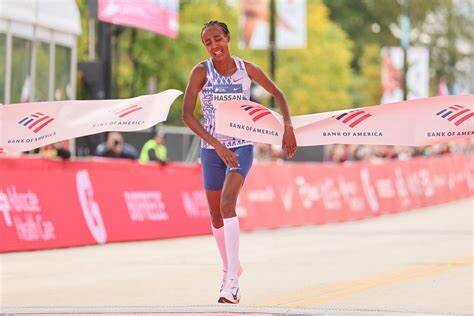
Hassan provoked excitement in the sport three years ago when she attempted an exhausting Tokyo treble.
She would add bronze to her two golds in Tokyo when she rallied in the 1,500m heats after falling over, before settling for bronze in the final after a fierce battle with Faith Kipyegon and Laura Muir.
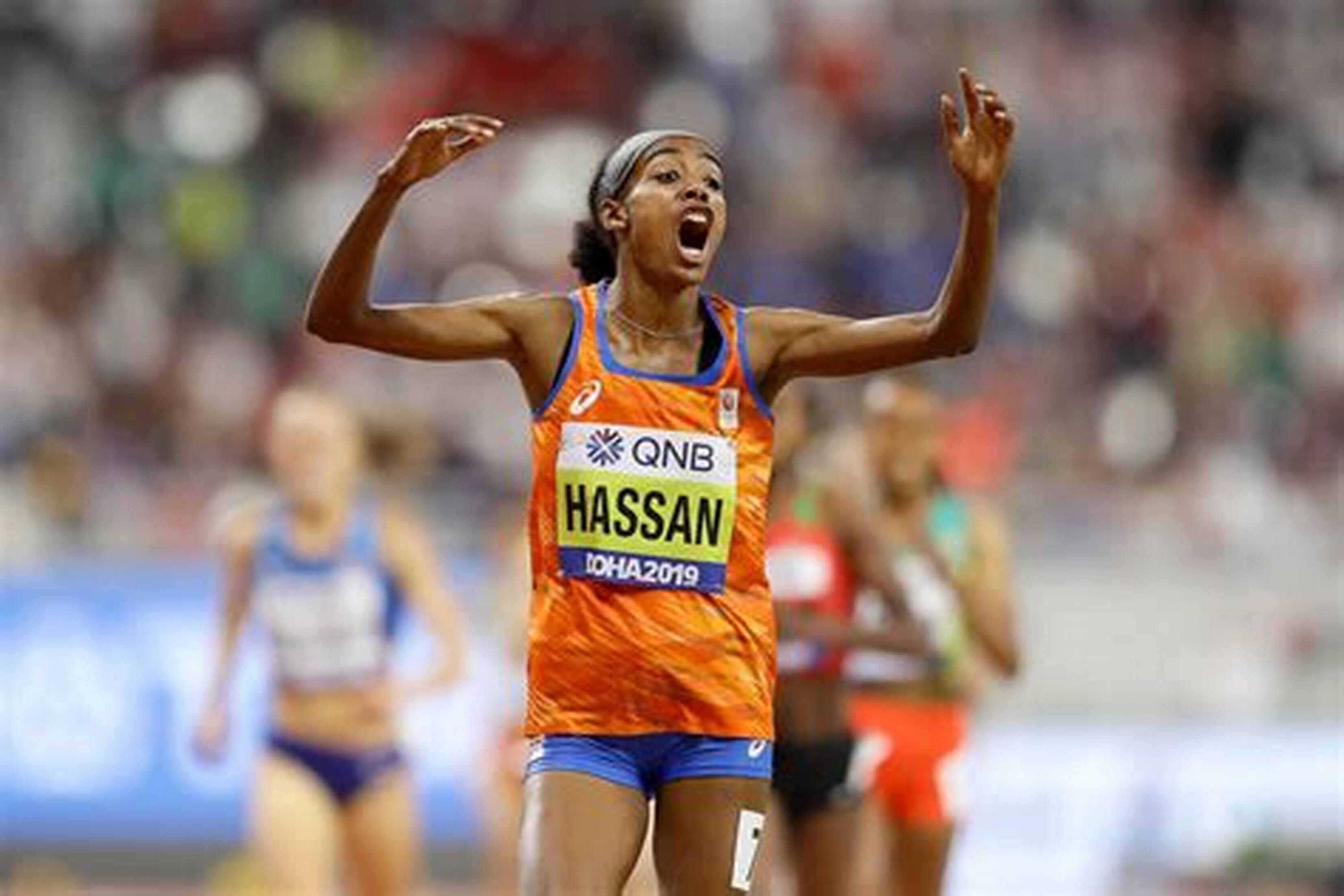
That bronze, while adding a dash of disappointment in the Tokyo rush for three golds, was a gift to the sport in hindsight. It delivered a shove, compelling Hassan to roll the dice and taste 26.2 miles on the roads.
The marathon and the roads bring acclaim and fortunes rarely afforded on the track and the hope was that Hassan, with her formidable track speed, would graduate in time. Yet her transition was seamless: She made her debut in London last year, pulling off one of the most staggering comebacks.
Hunched over and stationary in the middle of the race at 19km, Hassan desperately stretched to rid her aching body of lactic acid. Not only did it vanish, but she found a spring to outkick Alemu Megertu and win by a mere four seconds in two hours, 18 mins and 33secs.
More was to come, with victory and the second-fastest women's marathon of all time (2:13.44) in Chicago, before a respectable fourth in Tokyo this year. It begs the question as to why Hassan would risk scuppering hopes of marathon gold by subjecting her legs to 20km (the 5,000m has two rounds) on the track. Notably, the marathon course will present a number of hills, which could see each race unfold into a tactical affair with the opportunity for a sprint finish.
Even with 4mins 4.08secs in the 1,500m this year, Hassan would revel in the opportunity to test Ethiopian world record holder Tigst Assefa (2:11:53) and Kenyan trio Peres Jepchirchir, Helen Obiri and Sharon Lokedi over a late dash.
But the 31-year-old, whose face can be seen across many of the metro stations in Paris for an eye-catching Nike campaign, insists the attempt is nothing more than intrigue. And for that. she should be praised, in a sport where so many play it safe.
“I’m a very curious person,” she remarked. “Is life all about a gold medal? I'm very curious to do many events. I think it's impossible. So I want to see if it is, so I have to try. In Tokyo, it was successful after the three events. I discovered myself, also.
“Curiosity, when I try new things, is actually what keeps me going in my career. My journey is more important, the other things come after. I love the journey as much as the challenge.
“Did I balance speed on the track with enough endurance in the marathon? Let’s find out together. It’s not easy to face the unknown but my curiosity has driven all my training towards this goal. I will try my best to succeed.”
Hassan starts her campaign in Paris in the 5,000m opening round on Friday and will return on Monday for the final, should she qualify.
The 10,000m final is set for 9 August, meaning less than 48 hours of rest before lining up for the marathon.
“For anyone else this would be insane!” American track legend Michael Johnson wrote on social media. “I don't believe there's ever been an athlete who enjoys racing more than Sifan Hassan.”
And her attempt has left many of her fellow athletes in awe, with 1,500m world champion Josh Kerr impressed by her versatility.
“I don't think I could do that on the women’s side... to do a triple like that, the training is so gruelling for the marathon,” said Kerr. “She’s so well rounded that being able to have enough speed in the rank to do track races, it’s two rounds in the five, she’ll be out there having fun. Very impressive.”
“It's good sometimes when I'm nervous ... I do better,” Hassan laughed. Her rivals will hope she is not.
by Jack Rathborn
Login to leave a comment
Paris 2024 Olympic Games
For this historic event, the City of Light is thinking big! Visitors will be able to watch events at top sporting venues in Paris and the Paris region, as well as at emblematic monuments in the capital visited by several millions of tourists each year. The promise of exceptional moments to experience in an exceptional setting! A great way to...
more...Sprint to success with these tips from a pro
Four-time Olympic gold medalist Michael Johnson wants you to pick up the pace.
With the Paris Olympics well under way, running enthusiasts and athletes alike are looking for ways to elevate their game. Here to help is Michael Johnson, one of the most decorated sprinters of all time. As reported in Men’s Health, Johnson, a four-time Olympic gold medalist and eight-time world champion, offers his expert insights into running a fast 400m and preparing for an all-out sprint. His tips cater to the unique needs of every athlete, helping you tailor his advice to your own training.
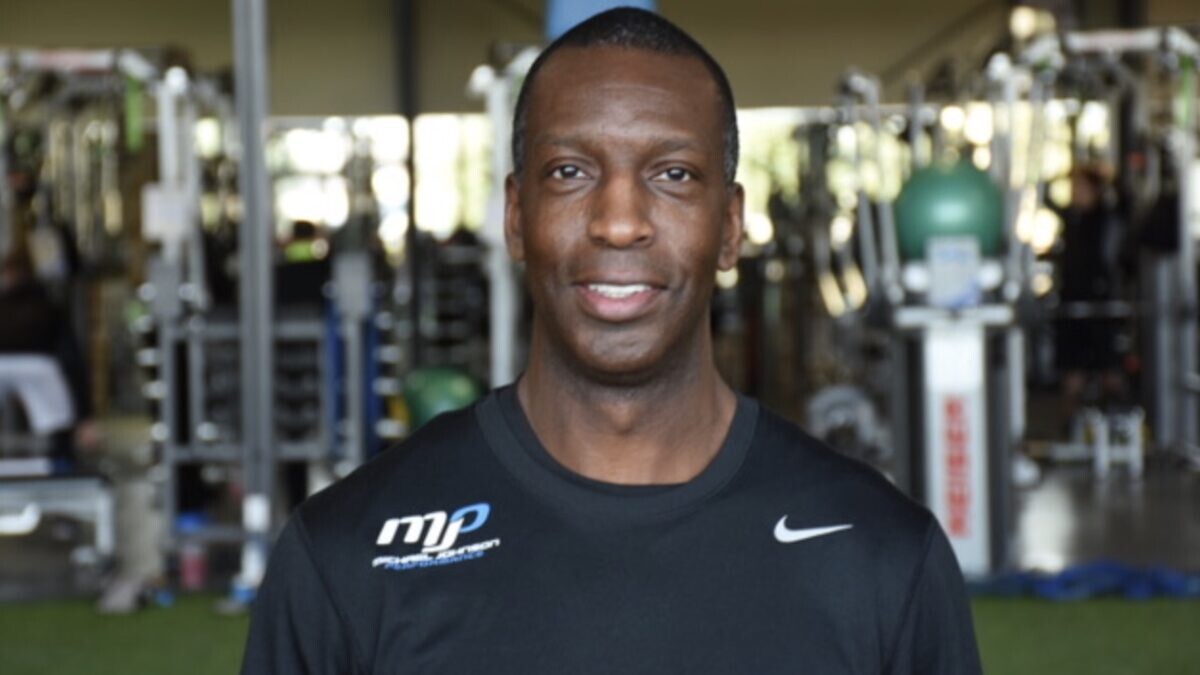
Short, fast training is for everyone
If you’re used to moderate-pace runs, incorporating sprints can be a game-changer. “The more you sprint and become accustomed to sprinting, your body becomes more powerful and stronger,” says Johnson. This power not only reduces the risk of injury in less strenuous runs but also improves your overall running technique, making you faster and more efficient.
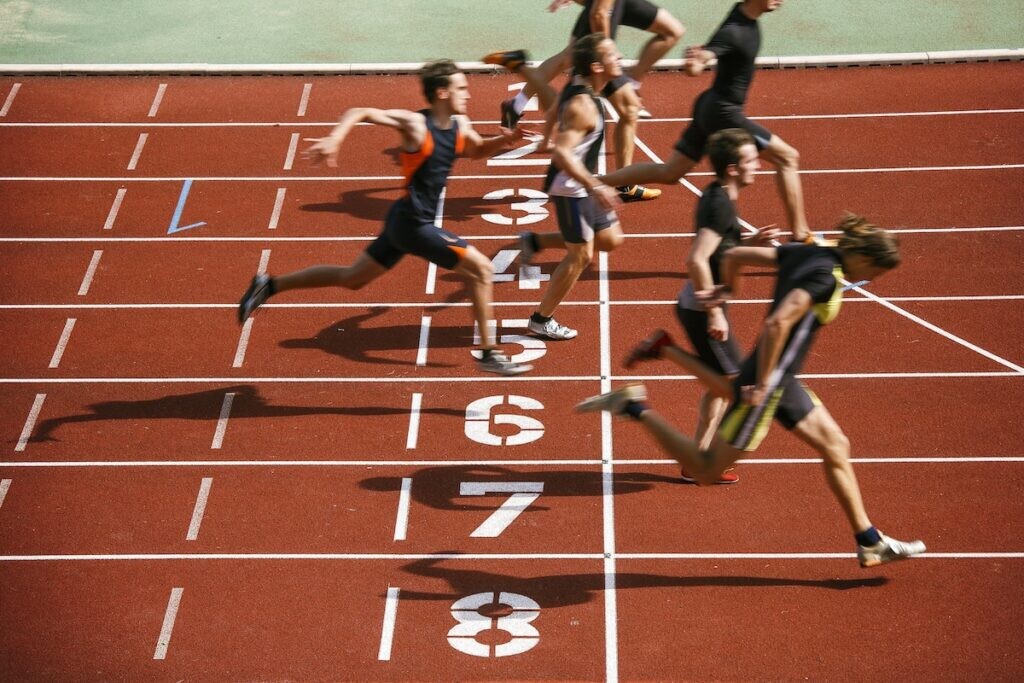
Tackling the 400m dash
Ready to hit the track? Johnson emphasizes the importance of easing into your sprint training. “Keep the volume of your sprinting light to start, allowing your body to progressively adapt,” he advises. Consistency is key—incorporating sprint work into your routine regularly is crucial. “You’re at higher risk of injury if you’re not sprinting often enough,” says Johnson, adding that sprint training should make up around 10 percent of your weekly workouts initially.
Good form is key
In sprinting, form is everything. Johnson stresses the importance of symmetry and efficiency in your movements. “If you go into a sprint session with poor form, it’s catastrophic,” he warns. Ensuring that your arm swing, stride and overall body positioning are balanced and efficient can make a significant difference in your performance.
Work on sustained speed
“The primary thing you’re training for as a 400-meter sprinter is sustaining speed for the longest period that you possibly can,” explains Johnson. This involves practicing running at a pace you can maintain throughout the race, rather than going all-out from the start. Johnson suggests a practice workout that involves running four rounds of 300 meres at 70 to 80 per cent of your max speed, with one-minute rests between rounds. This type of training builds the stamina needed to handle the final push during a race.
Race day tips
On race day, conserve your energy wisely. “The critical component to the 400-meter run is understanding that it’s an exercise in managing energy and speed around the entire sprint,” says Johnson. Focus on your mental game, as the ability to make quick, real-time decisions is essential for a successful race. You’ll be well on your way to smashing your 400-meter goals and elevation your overall running game.
by Keeley Milne
Login to leave a comment
American sprint legend reveals Olympic heartbreak from 1992 Barcelona food poisoning
Michael Johnson recalls a disappointing setback due to food poisoning during the 1992 Olympics, affecting his performance in the 200-meters
Before Usain Bolt rose to prominence, the world of track and field was dominated by Michael Johnson, a sprinter who dazzled the athletics scene with his speed and charisma.
Johnson, who captured four Olympic gold medals across three different Games, recently spoke about what he considers the most disappointing moment in his illustrious career.
The incident in question traces back to the 1992 Barcelona Olympics, a time when Johnson was at the pinnacle of his form.

Fresh off a gold medal win at the 1991 World Championship in Tokyo, Johnson was the favorite to clinch the 200-meter race at the upcoming Olympics.
However, an unforeseen bout of food poisoning just days before his first race jeopardized his chances.
“I had gotten food poisoning. So I was world champion, ranked number one in the world for two years, undefeated, and you know, a huge favorite to win the 200 meters at the Olympics,” Johnson recalled on High Performance podcast.

His condition arose shortly after a near world-record performance at the Olympic trials, where he had felt in the best shape of his life.
“It was about or so before I was competing," Johnson explained.
During this period, athletes typically reduce the intensity of their training to fine-tune their performance, a phase known as tapering.
"You’re in a taper mode where you’re basically just working on starts and very technical things,” he added.
When the Olympic races began, Johnson thought he had recovered, feeling fine at the starting blocks.
However, the reality of his condition became apparent as soon as the race started.
“Usually in a first round, I can just sort of run the first 100 meters of that 200 meters and I'm just kind of out," he said.
But this time, he found himself struggling unexpectedly, feeling as if he were "running in someone else’s body."
Despite winning his initial heat, the effort took a severe toll on him.
“I’m extremely weak and it takes everything. I win that race but just barely, and it took everything in me, and I knew immediately something's wrong,” he said.
His performance deteriorated further in the subsequent rounds and he ultimately failed to make the final.
Reflecting on the ordeal, Johnson described the experience as both disappointing and embarrassing.
“I knew of athletes who were world record holders, world champions that had the butt. That’s the one thing missing at that point," he lamented.
The Olympic gold in the 200-meters, which many had anticipated would be a mere formality for Johnson, remained elusive.
Johnson's resilience, however, is as legendary as his speed as he returned to win golds in later Olympics, including a memorable double victory in the 200 and 400 meters at the 1996 Atlanta Games.
Yet, the sting of Barcelona remains a significant chapter in his career.
Looking back, Johnson appreciates the rarity of Olympic opportunities.
“One thing you know as an Olympic athlete, because the Olympics is every four years, not every year, you may never get back there. Most people make it to one Olympics. I was fortunate to go to three, but that’s rare,” he reflected.
Through his trials and triumphs Johnson's legacy as a sprinter continues to inspire athletes around the world.
His story is a poignant reminder of how even the greatest champions can face hurdles that test their spirit and resolve.
by Festus Chuma
Login to leave a comment
Noah Lyles breaks U.S. Olympic Trials 200m record
The second (and final) weekend of the 2024 U.S. Olympic Trials, held at Hayward Field in Oregon, continued to be electrifying, with heart-stopping finishes and records broken.
On Saturday night, six-time world champion Noah Lyles kept his Olympic sprint double dreams alive by blazing through the 200m in 19.53 seconds—the fastest time in the world this year, adding to his 100m win from last weekend. Lyles wasn’t the only runner in contention for first place, only overtaking Kenny Bednarek in the final meters to secure the win. Erriyon Knighton finished third to make his second Olympic team; he received a no-fault violation from USADA in early June, after testing positive for a metabolite of trenbolone during an out-of-competition drug test in March, allowing him to compete at the U.S. Olympic Trials this week.
Lyles’s performance broke Michael Johnson’s long-standing U.S. Olympic Trials record of 19.66, set in 1996. Lyles will be hoping for redemption in Paris after a third-place finish at the Tokyo Olympics in 2021, his only loss in the 200m at a major meet. “You claim you’re gonna go out there and win four medals, so the goal had to be win the 100m and 200m,” Lyles told media post-race.“Job is accomplished. I’m right where I need to be.
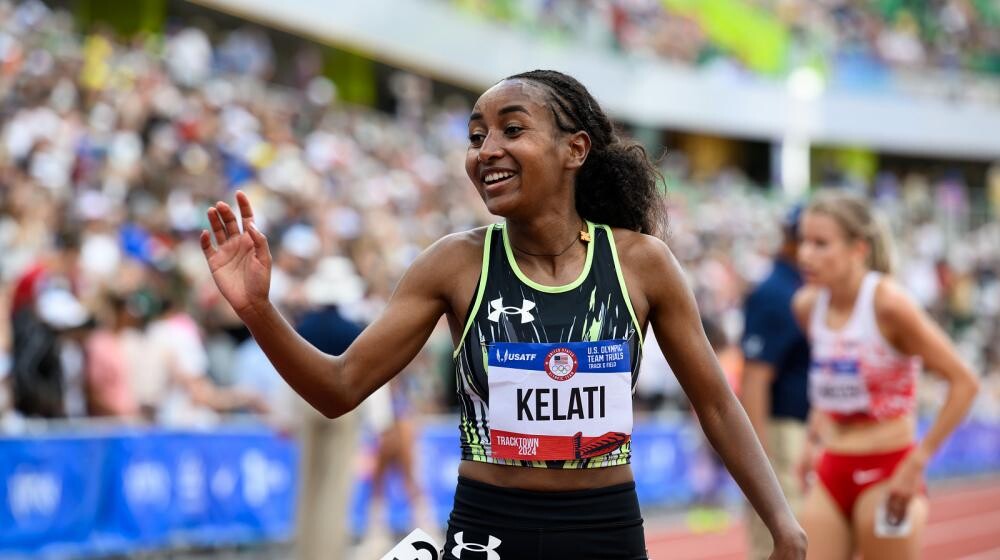
Kelati conquers the 10,000m
Weini Kelati secured her spot for the Paris Olympics by winning the women’s 10,000m in a thrilling, extremely close race on Saturday. Kelati, who was born in Eritrea but defected to the U.S. a decade ago to pursue a running career, showcased her strength and determination in a tight race that saw multiple lead changes in the final laps.
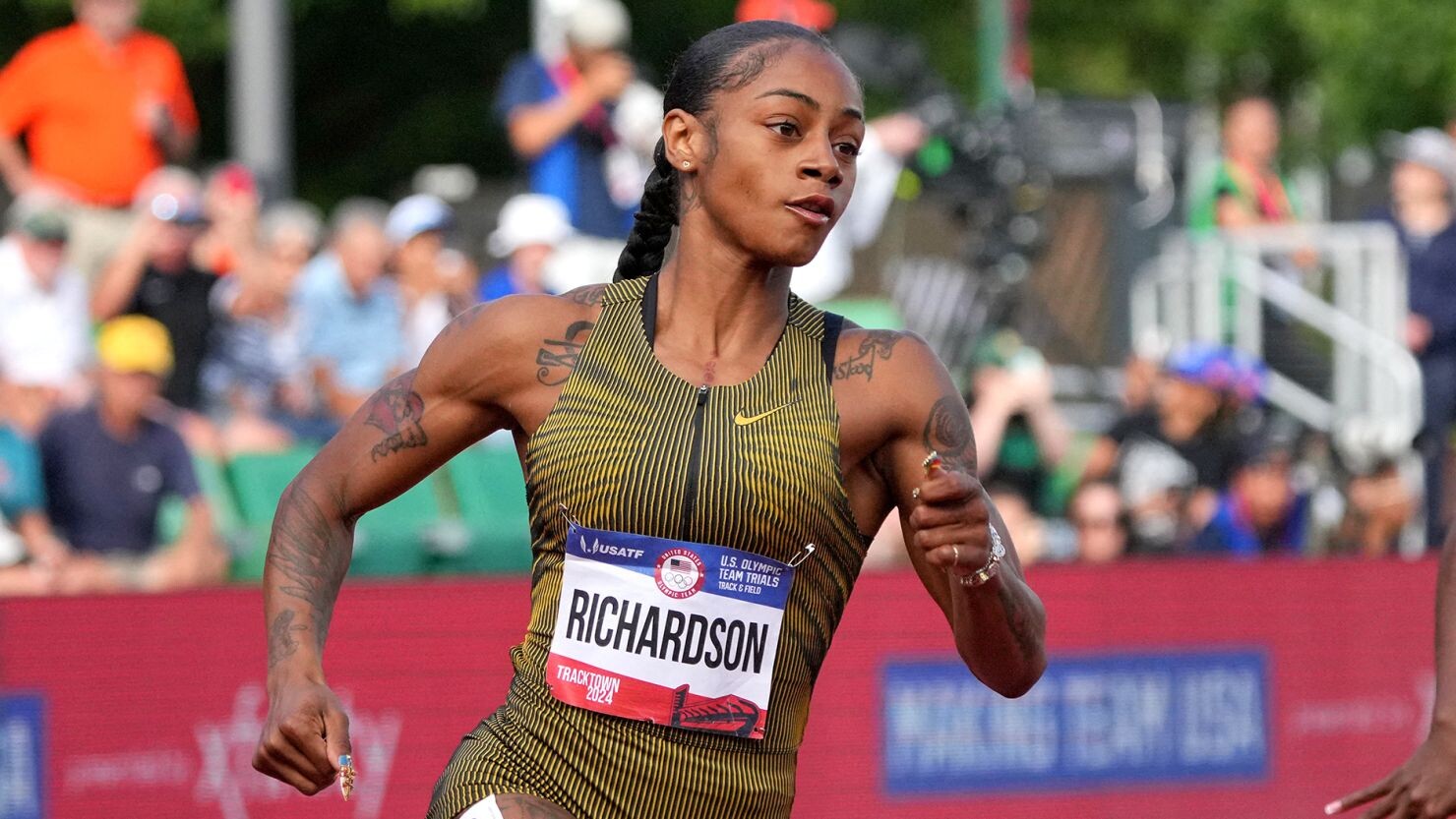
Kelati crossed the finish line first in 31:41.07, narrowly beating Parker Valby and Karissa Schweizer, who finished in 31:41.553 and 31:41.557 respectively. While Kelati has already run the Olympic standard of 31:40:00 and has clinched her place on the team, Valby and Schweizer will have to hope their performances were enough to get them to the Olympics through World Athletics rankings, a decision that won’t be finalized until June 7th.
Richardson doesn’t make the 200m cut
Sha’Carri Richardson’s bid for a sprint double in Paris ended with a fourth-place finish in the women’s 200m. Despite a strong start, Richardson was unable to maintain her speed in the final stretch, finishing behind Gabby Thomas, Brittany Brown and McKenzie Long.
Thomas, a bronze medalist in Tokyo and silver medalist at last year’s world championships in Budapest, crossed the line in 21.81 seconds. Richardson, secured her place in the 100m for the Olympics last weekend, when she won the women’s final in a new world-leading time of 10.71 seconds. In 2021, Richardson also won the 100m at the U.S. Olympic Trials, but tested positive for marijuana shortly after and was not allowed to compete; she’ll now make her much anticipated Olympic debut exclusively in the 100m, where she remains a favorite for gold.
by Keeley Milne
Login to leave a comment
U.S. Olympic Team Trials Track And Field
Eugene, Oregon has been awarded the 2024 U.S. Olympic Team Trials - Track & Field, USA Track & Field and the U.S. Olympic & Paralympic Committee announced today. From June 21 to 30, Hayward Field at the University of Oregon will be home to one of the biggest track and field competitions in the country, as the U.S. Olympic Team...
more...This U.S Olympic medallist is boycotting race bibs for the 2024 season
An American hurdler is creating buzz in the track and field world in an unconventional way by boycotting race bibs for the 2024 track and field season. The Olympic silver medallist in the 400m hurdles, Rai Benjamin, has not worn a bib in either of his races to start the season, and plans to continue.
After winning the 400m hurdles event at the USATF Los Angeles Grand Prix over the weekend in 46.64 seconds, Benjamin told Citius Mag in a post-race interview that he considered the use of bibs a waste of money and felt they ruined the appearance of the uniform. “I’m not wearing that thing. It’s a waste of money and the uniform looks too good to wear a bib, so I’m continuing my no-bib campaign here today,” said Benjamin.

Benjamin is not the only professional athlete to speak out against wearing race bibs. Former U.S. Olympic champion Michael Johnson was quoted by The New York Times in 2023 as having similar beliefs: “When an athlete is trying to focus on performing at their best, the bibs are a distraction. The fastest, most efficient athletes in the world compete with a piece of paper safety-pinned on. It just reeks of amateurism.”
Race bibs are a mandatory staple of every runner’s race-day attire. While their main purposes are live-tracking and identifying runners, they also generate significant race-day revenue through sponsorships.
Per World Athletics competition rules, all athletes competing at a World Athletics sanctioned meet are required to wear a race bib. According to technical competition rules 5.8-9, “no athlete shall be allowed to take part in any competition without displaying the appropriate bib(s) and/or identification. These bibs must be worn as issued and may not be cut, folded or obscured in any way. If any aspect of Rule 5 of the technical rules is not followed, a disqualification may follow.”
Benjamin’s first two races of the season have been at low-key events; it will be interesting to see if race officials will follow the World Athletics rulebook and disqualify him at future events like the U.S. Olympic Trials in late June and the Olympic Games in August if he does not comply.
The 26-year-old is one of the favourites to medal in the 400m hurdles event in Paris. He has medalled at the last four major championships in the event, dating back to the 2019 World Championships in Doha.
by Running Magazine
Login to leave a comment
The billions Michael Johnson has received ahead of launching his track league in 2025
Michael Johnson has received a financial boost of billions as he seeks to launch his track league next year, with more details concerning the same to be revealed in June.
American sprint legend Michael Johnson has received massive backing as he looks to launch a track league next year with more details concerning the same scheduled for June.
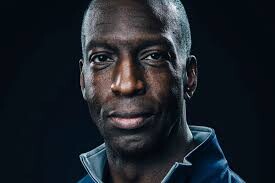
As per the Sports Business Journal, Johnson has so far secured more than Ksh 4 billion (about $30 million) from investors and strategic partners who plan to support his initiative for the track league.
Expressing his elation on his X (Twitter) handle, Johnson said: “Working to change the game for athletes and fans! League details coming this June.”
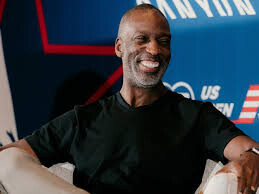
arlier this year, the four-time Olympic champion announced his partnership with Winners Alliance, the for-profit arm of the Professional Tennis Players Association. The Alliance was the lead investor and will be the league's operating partner.
During the partnership announcement, the American announced that they have a plan to launch a track series in 2025 aimed at promoting the sport meeting the needs of all track and field athletes, and bringing back the spark.
The league is set to include a series of events from April to September and will have a limited number of athletes and offer very lucrative prize money. It will also aim to renew rivalries between them while catering to fan interests.
As preparations ramp up, the league has also hired Doubleday & Cartwright, a creative studio that specializes in sports, music, art, and culture. The agency has a proven track record, having worked with the world’s leading brands including Apple and Nike among others.
Johnson's league has also signed Two Circles and SRK Strategies, a data-driven sports marketing agency. Two Circles has worked with World Athletics and the International Olympic Committee. The firm will advise the league on how to generate new fans and motivate the existing ones in support of the league.
by Abigael Wuafula
Login to leave a comment
Michael Johnson gives Letsile Tebogo 400m advise after hitting Olympics qualifying time
American sprint legend Michael Johnson has told Botswana sensation Letsile Tebogo what to do at the Olympics after he hit the 400m qualifying time for the Paris Games.
American sprint legend Michael Johnson has advised Botswana sensation Letsile Tebogo against signing up for the 400m at the Paris 2024 Olympics.
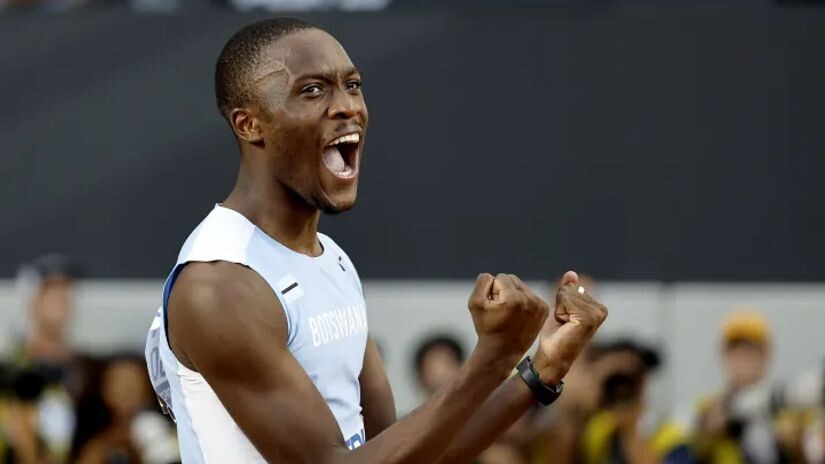
Tebogo hit the Olympic qualifying mark in 400m when he lowered his personal best to post an impressive 44.29 at the ASA Grand Prix in Pretoria, South Africa on Monday.
That has got many wondering if the world 100m silver and 200m bronze medalist will add the 400m onto his Olympics programme but Johnson, a two-time Olympic champion and record holder over the 400m, feels it would be a bad idea to do that this year.
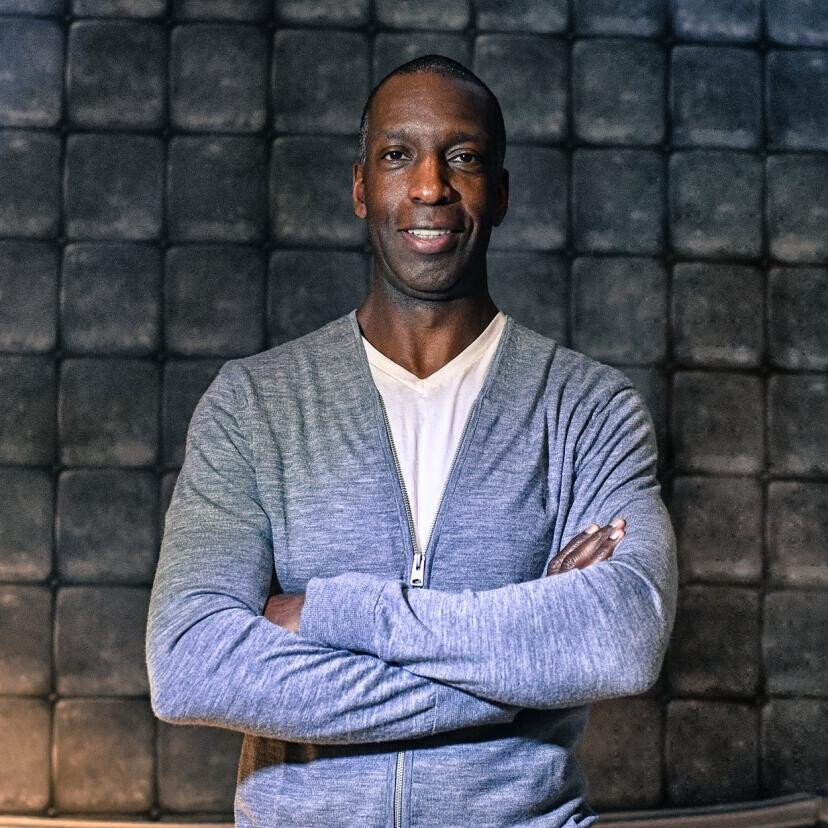
“100/200 or 200/400 double? Already a 100/200 world champs medalist, may be foolish to switch in an Olympic year,” Johnson posted on X.
While Johnson recognizes that the men’s 400m is not as strong now, he thinks 20-year-old Tebogo still has plenty of time to hone his skills over the distance before he makes a competitive attempt.
“Men’s 400 a bit weak recently but his training must change to run even low 44 in a final after rounds. At only 20, plenty of time to move to 400. 100/200 for Paris,” added Johnson, while advising Tebogo to stick to 100m and 200m at the Paris Olympics.
Johnson’s sentiments come days after reports in Botswana also suggested Tebogo does not intend to compete in 400m at the Paris Olympics and was just using the race to test his endurance.
Tebogo has been in fine form, smashing the 300m world record by running 30.69 in Pretoria in February, before the 44.29 in 400m in the same South African city this week.
"My plan is to rest for a week or two. My performance [on Monday] shows that the speed is there,” said Tebogo after Monday’s race.
“Everything is going according to plan. I want to compete in Diamond League Meets so that I get used to other top athletes. That will also assist me to be confident when I meet them at the Olympics.”
World champion Noah Lyles is seen as the favorite to claim gold in both 100m and 200m at the Olympics but 20-year-old Tebogo is among a host of rivals set to give him a run for his money, with the Botswanan not a pushover given his remarkable form and consistency.
by Joel Omotto
Login to leave a comment
Paris 2024 Olympic Games
For this historic event, the City of Light is thinking big! Visitors will be able to watch events at top sporting venues in Paris and the Paris region, as well as at emblematic monuments in the capital visited by several millions of tourists each year. The promise of exceptional moments to experience in an exceptional setting! A great way to...
more...How change of shoes helped youngster Letsile Tebogo smash world record
Letsile Tebogo ran faster than Michael Johnson and Usain Bolt to set a new world 300m record but that would perhaps not have happened had he not changed his running shoes.
Botswana sprint sensation Letsile Tebogo is currently basking in the glory of his new world record after lowering the 300m mark last weekend.
Tebogo smashed the world 300m record following an incredible run at the Simbine Curro Classic in South Africa, running 30.71, to beat South African Wayde van Niekerk's mark of 30.81 set in Ostrava, Czech Republic in 2017.
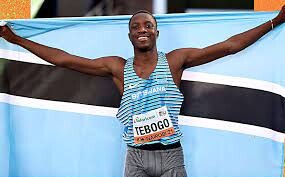
In what was a world lead and his personal best over the distance, the 20-year-old obliterated the field to take a giant lead, leaving a big gape between him and the chasing pack as he sprinted to the finish line.
It has now emerged that things would have perhaps been different had he not opted for a change of shoes, having decided to ditch his trainers for spikes ahead of the race.

Since sustaining an injury that locked him out of the Zurich Diamond League 200m finals, Tebogo has not used spikes and wore trainers in his season-opening race in January, but his coach Dose Mosimanyane advised him to use spikes in last Saturday’s race in Pretoria only to yield a world record.
“The world record was not in the plan. But I am not surprised. With his training partner, Bayapo Ndori and other athletes in the mix, I knew he would do something but this is not what we came here for,” Mosimanyane said.
The world 100m silver medallist did not just break the seven-year world record but his time was faster than that of American great Michael Johnson, who clocked 30.85 at the same venue in 2000, and Jamaican sprint legend Usain Bolt, who timed 30.97 in 2010.
The world 200m bronze medallist had an impressive 2023 season when he became the first African to win a medal at the World Championships in 100m and also the first from his country to achieve such a feat.
He is hoping to go one better this during the Paris 2024 Games in France where he is seeking to make history by winning his country’s first ever Olympics gold.
by Joel Omotto
Login to leave a comment
American sprint legend claims top athletes are avoiding each other at major meetings due to low pay
Sprint legend Michael Johnson feels top athletes have been skipping meetings pitting them against their bitter rivals because there is not enough incentive to entice them.
American sprint legend Michael Johnson believes top athletes would not be skipping meetings against their bitter rivals over some flimsy reasons if the pay was good.
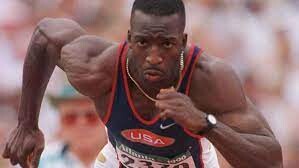
Johnson has been an advocate of better pay for athletes, calling on World Athletics to improve on their welfare, while also urging runners to speak out so that they can be taken seriously by the powers that be.
While commenting on sentiments made by multiple world champion Jakob Ingebrigtsen, who claimed he could beat his bitter rival Josh Kerr while blindfolded, a fan said it was highly unlikely that the two runners will clash any time soon because athletics authorities ‘do not like the idea.’
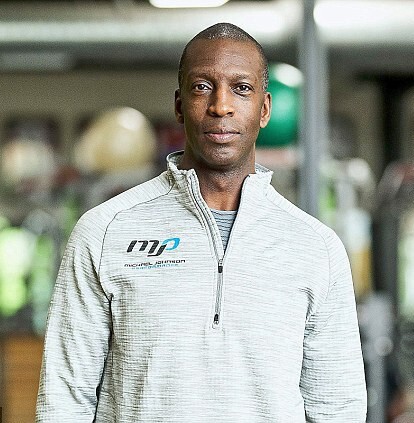
“One of them is definitely pulling out with an “injury” bc [because] there is no way we are going to get this good of a moment from the track and field gods,” said the fans.
Replying to the comment, Johnson said: “If the money goes up, the “injuries” will go down.”
It is another dig aimed at those in charge of the sport, ramping up the pressure on the need for athletes to get better pay so that fans have an opportunity to witness the best competing against each other.
Johnson, who won four Olympic Gold medals and eight World Championship titles, fired one of his many salvos last month when fans appeared to casually dismiss track and field athletes as amateurs.
“The number of people in the replies who think a track & field Olympic and World Champion is an amateur athlete is a major indictment of those in charge of the sport,” Johnson posted on social media after Pole vault Olympic and world champion Katie Moon had questioned why the Greater Cleveland Sports Commission had never nominated a female athlete for the Athlete of the Year award.
Ingebrigtsen stocked the fires on Friday when responding to Kerr’s impressive outing at the 2024 Millrose Games.
Kerr of Great Britain set a new indoor two-mile world record, running 8:00.67 to take down Mo Farah’s time of 8:03.40.
However, Ingebrigtsen seemed to dismiss his performance, claiming he could have beaten him in the two-mile “blindfolded” despite the fact that Kerr defeated him to claim 1,500m gold at the 2023 World Championships.
by Joel Omotto
Login to leave a comment
American legend Michael Johnson left puzzled by World Athletics’ Awards decision
Johnson is puzzled by the decision to name six different individuals as World Athletes of the Year for the first time in history.
American sprint legend Michael Johnson has criticised World Athletics’ decision to hand the Athlete of the Year award to six different individuals terming it “a bad idea”.

The organisation made an odd decision to have six different categories, rather than the usual holistic award given to the best athlete of the year in both the male and female categories regardless of specialty.
The adaptation of the World Athlete of the Year honours awarded this year follows feedback received during the voting process.

When it came to compiling the votes, athletes, fans and World Athletics Family members commented that it was incredibly hard to limit the vote to just one athlete, because of the various disciplines and the vast differences in skill sets required.
As a result, the 2023 World Athlete of the Year awards have been divided into three event categories: track, field, and out of stadia.
This has generated plenty of debate and division of opinions among many track and field runners, and Johnson, a four-time Olympic champion and eight-time world champion, remains puzzled by the decision.
“Am I the only person who thinks having six athletes of the year is a bad idea? Am I missing something?” Johnson wrote on X (formerly Twitter).
The 56-year-old has however admitted that there is some sense behind the decision having seen that the award recognises different categories.
“Just saw it is track, field, and out of stadia categories. So maybe it makes sense.”
Tigist Assefa, Mondo Duplantis, Kelvin Kiptum, Faith Kipyegon, Noah Lyles and Yulimar Rojas were the six individuals announced as World Athletes of the Year for 2023.
Assefa, Duplantis, Kiptum and Kipyegon set world records in their respective events in 2023, while all six World Athletes of the Year secured world titles or major marathon wins.
by Mark Kinyanjui
Login to leave a comment
World Athletics faces backlash for last-minute change to Athlete of the Year Awards
After months of discussion and voting on World Athletics’ social media pages for their prestigious World Athlete of the Year Award, the governing body of running/track and field did something no one could have predicted at the awards night on Monday in Monaco. For the first time in 35 years, the award was given to three men and three women, and fans across the sport are outraged.
Instead of giving out a men’s and women’s World Athlete of the Year award, as they’ve done in the past, they divided it into three categories: Track Athlete of the Year, Field Athlete of the Year, and Non-Stadia Athlete of the Year. Faith Kipyegon and Noah Lyles won the Track award, while pole vaulter Mondo Duplantis and triple jumper Yulimar Rojas won the Field award. Non-Stadia accolades went to the men’s and women’s new world record holders, Kelvin Kiptum and Tigist Assefa.
Online comments

The Internet was not impressed with World Athletics changing the format at the last minute (after the voting). Many thought deserving athletes like Kipyegon, Lyles and Kiptum were robbed of their glory and success. “What is the point of having finalists if everybody wins some category that wasn’t announced prior? It should have been clear you have categories from the start, not on the final day,” a fan tweeted.
“Such a useless ceremony,” tweeted another fan. Track and field sprint legend Michael Johnson even tweeted, “Am I the only person who thinks having six athletes of the year is a bad idea? Am I missing something?”
World Athletics’ reasoning

World Athletics said its decision to divide the award into three categories came from fans and council members, who commented that it was “incredibly hard” to limit the vote to just one athlete. That is what people say when they have a tough decision to make, meaning that World Athletics chose highly deserving finalists–not that they want to split the award. World Athletics president Sebastian Coe took it differently: “The depth of talent and the outstanding performances in our sport this year more than justify the expansion of the World Athletics Awards to recognize the accomplishments of these six athletes across a range of disciplines. It is only fitting that they be recognized as the athletes of the year in their respective fields,” Coe said in a press release.
Poor communication from World Athletics
When World Athletics named the 10 nominees for the award in late October, they did not indicate they were planning to divide the award three ways. Even when they narrowed it down to five finalists, there was no indication it would be split. Most fans would have been OK with three AOTY awards if they had known during the voting process that that would be the case.
In a sport that is always looking to grow and garner more attention, going against the grain of the community and fan votes is not a way to attract new people to the sport, especially heading into an Olympic year. Although it’s easy to understand World Athletics’ reasoning for splitting the award–it’s hard to compare athletes of different disciplines, especially since a pole vaulter like world champion Duplantis can only win accolades in one discipline, whereas Lyles or Kipyegon could win medals in two or three events. Still, World Athletics had three opportunities to inform the public they would be splitting the awards this year, and I am sure fewer fans would be disappointed in the outcome.
Imagine watching the Super Bowl and seeing them hand out an offensive, defensive and special teams MVP. It would make the award meaningless.
by Marley Dickinson
Login to leave a comment
American legend Michael Johnson shares how athletes can change the sport and earn more from it
The former 200m and 400m world and Olympic record holder has offered an advise to athletes on how they can change the sport for the better after years of earning low amounts
American sprint legend Michael Johnson has advised prominent athletes to lead from the front if they have to change the status of athletics and earn more from it.
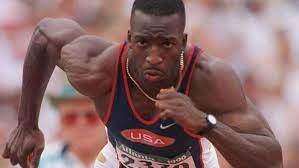
Johnson, who has been vocal about the ‘low amounts’ athletes earn from various events, shared how he had to ensure he earned what he deserved against strong resistance and thinks athletes are currently getting the short end of the stick because they do not speak out.
“My first exposure to pro track was Summer 1989 competing in Europe while still a college athlete,” Johnson pointed out on X.

“Remember seeing Carl Lewis treated much better than everyone else. 1990 my first year as a pro I’m the top athlete in the sport. My appearance fee was skyrocketing and I’m being paid literally in cash. Customs was stressful! Had to eventually force meets to wire my funds.”
Johnson then explained how he had to fight to get paid in cash when IAAF (now World Athletics) decided to reward athletes cars for winning at the World Championships.
“1993 IAAF (World Athletics) finally decide to offer a prize for winning World Champs. But not cash. A Mercedes 190 ($30K value). Myself, Butch Reynolds, Mike Powell, Gwen Torrance, and Mike Conley tried to organize a boycott if they didn’t offer cash,” he added.
“Many athletes refused and wanted the car. So, my agent and I negotiated my own deal. After ‘96 I’m a global superstar and meets allow their sponsors kids access to the warmup area to ask me for autographs while I’m warming up and preparing to race.
“Had to ask them to stop it and organize proper autograph sessions for me to meet fans. One meet organizer tried to shame me in the media saying I didn’t appreciate fans.”
The former 200m and 400m world and Olympic record holder went on about how he, Carl Lewis and Usain Bolt forced the sport to change for them to earn what is right, something he feels the current crop of athletes can realize if they speak out strongly.
“My fee kept rising. Meets colluded and agreed none would pay me above $100K. They each violated their own agreement. Carl before me did his own thing, I did mine, and Bolt did his thing,” said Johnson.
“Each of [us] forced the sport to change for us, but neither of us were able to change the sport. Until a critical mass of prominent athletes work together there will be no change.”
Johnson has been a critic of World Athletics and the amounts they pay athletes from various competitions, saying not much has changed since he started running three decades ago.
by Joel Omotto
Login to leave a comment
World champion Noah Lyles wins award for best U.S. track and field athlete for third time
The world 100m and 200m champion is only the second U.S. athlete to win the Jesse Owens Award three times.
The 2023 season has been one to remember for double sprint world champion, Noah Lyles, who became the first sprinter since the renowned Usain Bolt in 2015 to win both the 100m and 200m events at a World Athletics Championships. On Wednesday, he added one more award to his impressive list of accolades, winning the 2023 Jesse Owens Award for the best U.S. male track and field athlete.
This is Lyles’s third time winning the prestigious award given annually by the U.S.A. Track and Field (USATF), putting him in elite company with only Michael Johnson as the only other athlete to win the award three times.

Lyles was the most dominant sprinter in the world this year, winning gold medals in the 100m, 200m and 4x100m relay this past summer at the 2023 World Athletics Championships in Budapest. The three world titles were added to the previous three he won at the 2022 World Athletics Championships in the 200m and in 2019 in the 200m and 4x100m relay.
“It’s an honor to receive my third Jesse Owens Award and to be associated with such a legendary athlete,” said Lyles in his acceptance speech. “I want to thank USATF for this award, as well as my coach, Lance Brauman, my family and everyone who supported me on this historic season. I couldn’t have done this alone and I can’t wait to pick up right where we left off for 2024.”

The Jackie Joyner-Kersee Award was also awarded by the USATF to the top female athlete of the year, which went to newly-crowned world 100m champion Sha’Carri Richardson. Richardson is the first female 100m sprinter to win the Jackie Joyner-Kersee Award since Carmelita Jeter in 2011.
Richardson and Lyles were both nominees for World Athletics’ Athlete of the Year. Lyles was announced as one of the five finalists for the award earlier this week.
by Marley Dickinson
Login to leave a comment
16-year-old Texas sprinter breaks ridiculous record for 400m
While most 16-year-olds are learning to drive and being pressured by their parents to figure out their career path, Jonathan Simms of Allen, Texas, shattered a near three-decade junior world record in the men’s 400m at the AAU Junior Olympic Games on Saturday.
Simms ran a new personal record to win the 15-16-year-old boys’ championship in a U16 world record of 45.12 seconds.
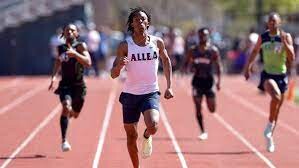
Simms entered the race as the U.S. national champion with a 46.09-second run at the Nike Outdoor Nationals in June, but his personal best was 45.90, set at the Texas state championships earlier in the season. Simms won the race handily by two and a half seconds and followed up his win with a gold medal in the 4x400m relay later where he split 44.76.
His new record time eclipses Obea Moore’s previous mark of 45.14 from 1995 as the U16 world record. Moore held the record in this event for 28 years. He was expected to be the next great American quarter-miler, to follow the great Michael Johnson, but he never lived up to expectations.
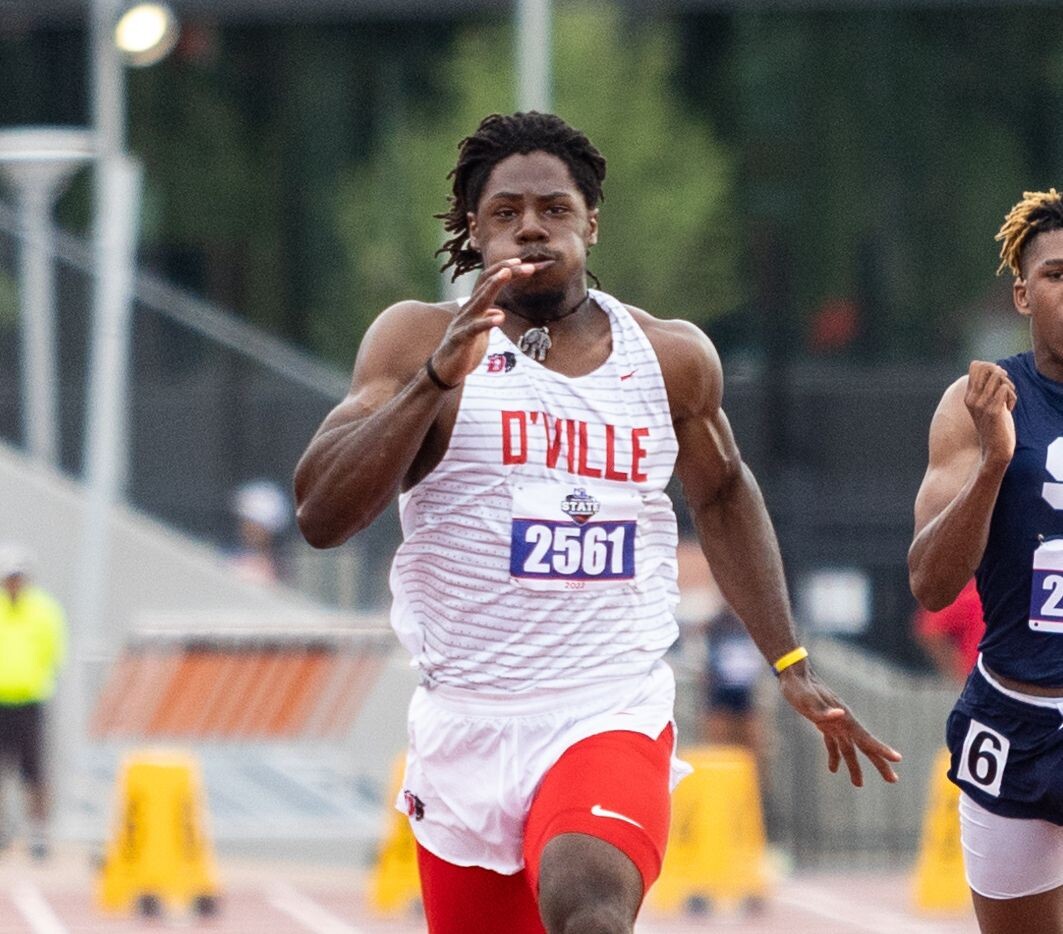
Simms’s new record time is only a tenth of a second shy of the 2024 Olympic standard for the 400m (45.00). Earlier in the week, Simms also won the 800m at the AAU Junior Olympics in 1:51.69, a new personal best.
With such remarkable performances at a young age, Simms has undoubtedly captured the attention of the track and field world as a rising star with immense potential for the future.
by Marley Dickinson
Login to leave a comment
Who Would Be the #1 Pick If Running Had a Draft?
Here are the runners you’d want to build a franchise around.
It's NFL draft weekend. A weekend of hope for fans whose favorite teams underperformed last year or lost some key players in trading wars. The Carolina Panthers have the first pick this year, and they desperately need a quarterback to build their team around for the foreseeable future.
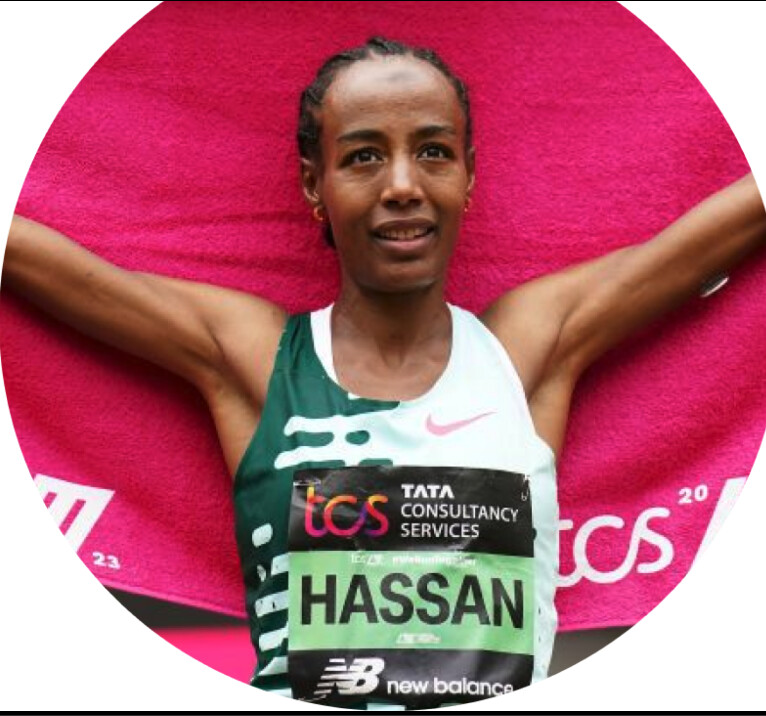
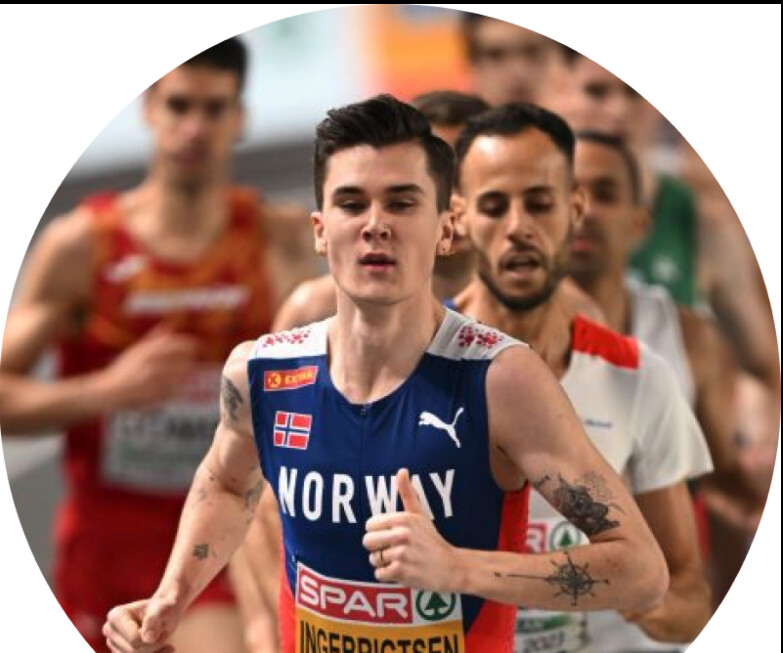
On Thursday, they selected former Heisman winner Bryce Young, of Alabama, to fill that role. That got the editors at Runner’s World thinking: who would go first overall in the sport of running? First, we need to set some parameters for our fantasy scenario. All running events contested at the Olympics—from the 100 meters to the marathon—are included. (Field events can have their own draft). And athletes must be currently competing, so no FloJo or Michael Johnson.
We conducted a quick office poll and consulted our track nerds to come up with a shortlist of three women and three men. Here’s who we’re picking.
Women
Sifan Hassan
Distance, The NetherlandsIf you watched her storm to a win at last week’s London Marathon, you probably already agree with me—Sifan Hassan has the best range in the world right now. Frankly, it’s not even close. At the 2020 Olympics, the Dutch runner pulled off an insane triple, winning the 5,000 meters, 10,000 meters, and capturing bronze in the 1,500 meters. She had a down year in 2022, missing the podium at the World Championships, but she reasserted herself as a force this year after her comeback win at London. Her only draft stock drawback? At 30 years old, she might not be the best investment for a team looking far down the line.
Sydney McLaughlin-Levrone
Hurdles, United StatesThe world record holder in the 400-meter hurdles is a sure-fire pick for a team looking for star power and incredible consistency. She’s a monster talent—making the Olympics at just 16 years old—and since then, now 23, she’s only gotten better. Last year, at the World Championships, she set the world record, beating a loaded field. But McLaughlin-Levrone’s upside is in her versatility: she’s world class in the 110-meter hurdles as well, and was a ringer on Team USA’s gold-medal winning 4x400-meter relay team at the 2020 Olympics. Syd the Kid is a no-brainer for a team that needs a recognizable, long-term talent in the sprints.
Letesenbet Gidey
Distance, Ethiopia The Ethiopian star’s range is not quite as expansive as Hassan’s, but at 25, she’s already an instant threat in whatever she’s entered in. She’s the current world record holder in the 5,000 meters, 10,000 meters, and half marathon—plus, she boasts a marathon PR of 2:16:49. Gidey is a perfect fit for a team looking to sacrifice a bit of experience for one of the top up-sides in distance running.
Men
Jakob Ingebrigtsen
Distance, NorwayThe mid-distance prodigy hasn’t raced much on the roads, but he’s almost a lock in anything from 1,500 meters to 5,000 meters. He’s starting to run out of accomplishments at only 22 years old: Olympic gold? Check. World record? Check. Ingebrigtsen will do well on a team that needs a vocal leader, and who can back up his talk with his speed. Plus, he’s got swagger, and the entire country of Norway behind him.
Grant Holloway
Hurdles, United StatesI have a soft spot for consistent hurdlers, I guess. Sure, Holloway finished a disappointing second at the 2020 Olympics, but he won world championships in the 60-meter hurdles and 110-meter hurdles last year. In fact, Holloway hasn’t lost a 60-meter hurdles race in nine years. And he’s only 25. In college, he also won national championships in the flat 60 meters, 4x100-meter relay, and split 43.7 on the 4x400-meter relay—talk about a utility player.
Jacob Kiplimo
Distance, Uganda Staying within the theme of impressive range and youth, Jacob Kiplimo is a solid pick for a team that wants to focus on the long distances. Sure, you can go with a proven legend like Kipchoge, or an accomplished marathoner like Evans Chebet, but Kiplimo owns the half marathon world record (57:31) and recently won gold at the World Cross Country Championships earlier this year. He’s less experienced than some of his counterparts (like fellow Ugandan Joshua Cheptegei), but the 22-year-old has an extremely high ceiling and has proven that he’s not afraid to take on the world’s best.
by Runner’s World
Login to leave a comment
Usain Bolt honored to join great names who have won lifetime achievement award
Usain Bolt was delighted to join a stellar list of sporting greats after being chosen as the BBC Sports Personality of the Year Lifetime Achievement Award winner for 2022.
The 36-year-old Jamaican retired from athletics five years ago but he has left an indelible and so far unbeatable mark on his sport.
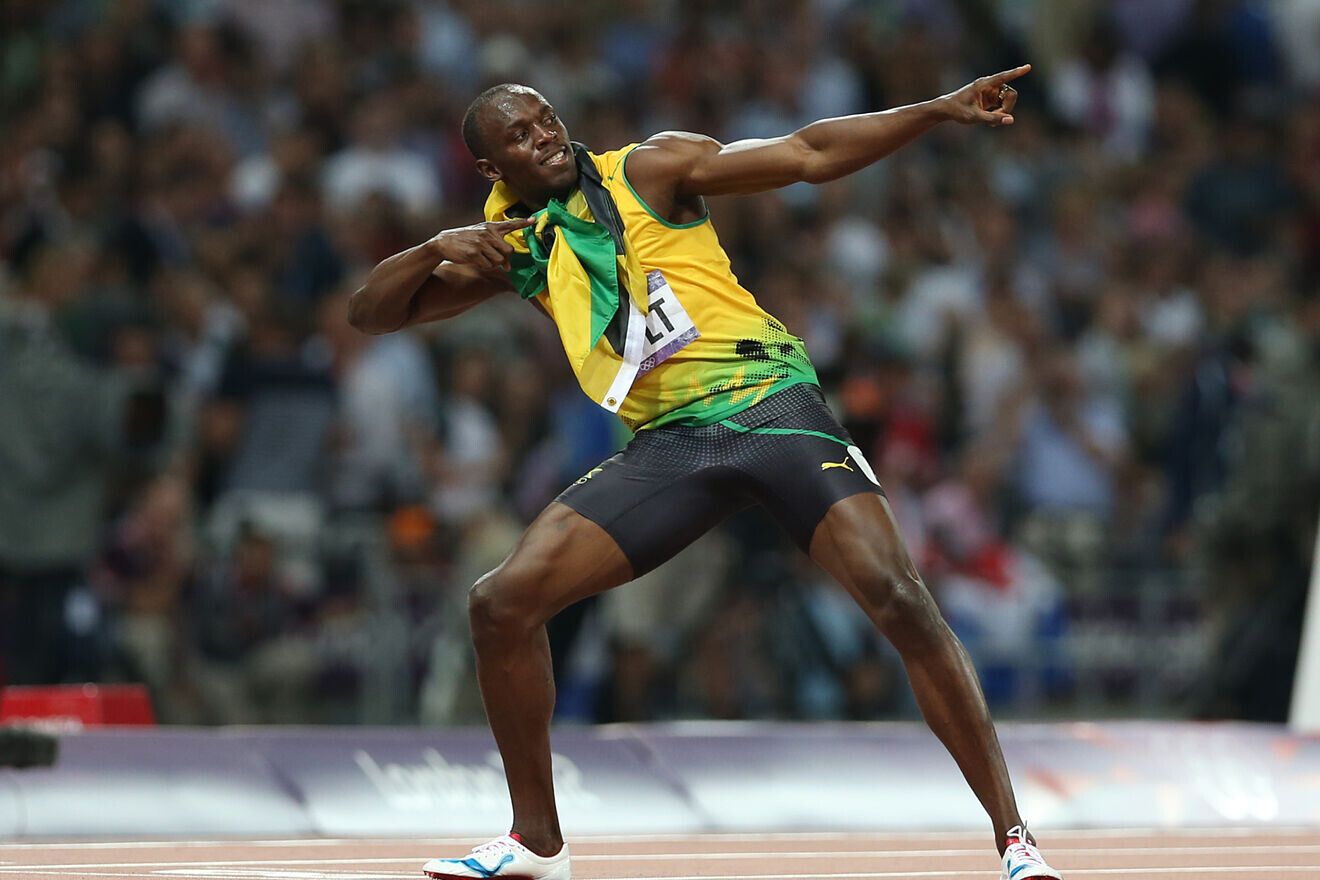
Bolt became a global superstar at the Beijing Olympics in 2008, lowering his own world record mark to win the 100m gold and then breaking Michael Johnson’s 200m record to also win gold in that event.
A year later he again broke his 100m world record in winning the world title in Berlin – and his time of 9.58 seconds still stands today. Four days later he lowered his 200m mark to 19.19secs which has also not been beaten.
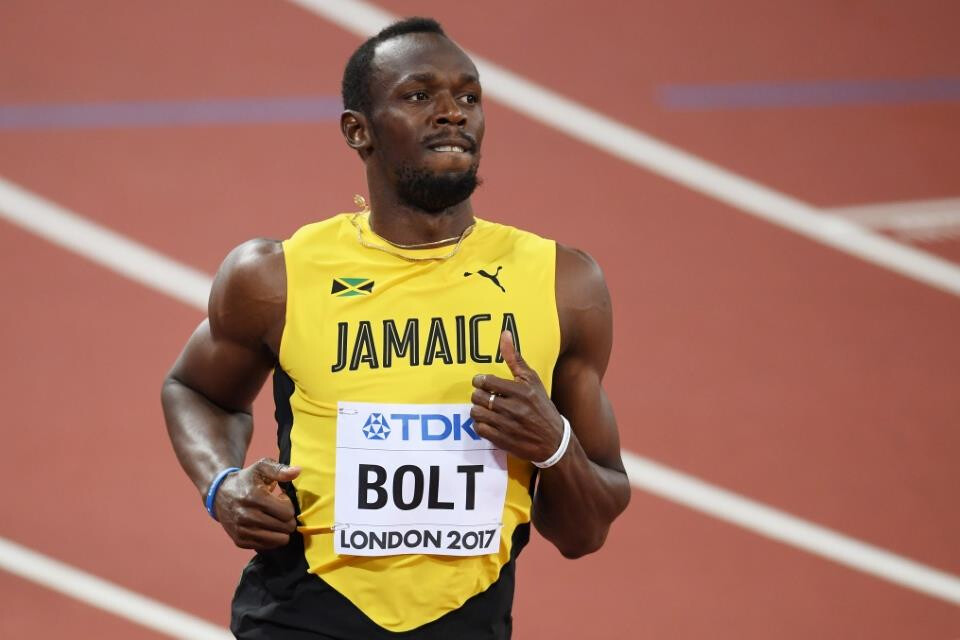
He went on to retain his 100m and 200m Olympic titles at the next two Games in London and Rio de Janeiro.
Bolt retired in 2017 after the World Championships in London, where he won a bronze in the 100m.
“For me it’s an honour to be amongst the greats who have received this before like Pele, Muhammad Ali,” Bolt said in a message to the awards ceremony from Jamaica.
“For me these guys are some of my favourite athletes and I look up to them.
“Also, I want to thank my family, my friends and the fans for everything throughout the years. I’ve worked hard and to get this award means a lot.”
by Jamie Gardner
Login to leave a comment
Noah Lyles storms to 200-meter gold at World Championships, leading U.S. sweep clocking the third fastest time ever
Thursday night was for the sprinters at the World Athletics Championships, as the men's and women's 200 meter finals took center stage in the only medal races of the session in Eugene, Oregon.
American Noah Lyles ran the third-fastest time in history and broke Michael Johnson's American record, crossing the line in 19.31 seconds and winning the men's race in dominant fashion. Not known for running a great curve, Lyles had a tremendous start and took all of the suspense out of the finish before it was halfway over.
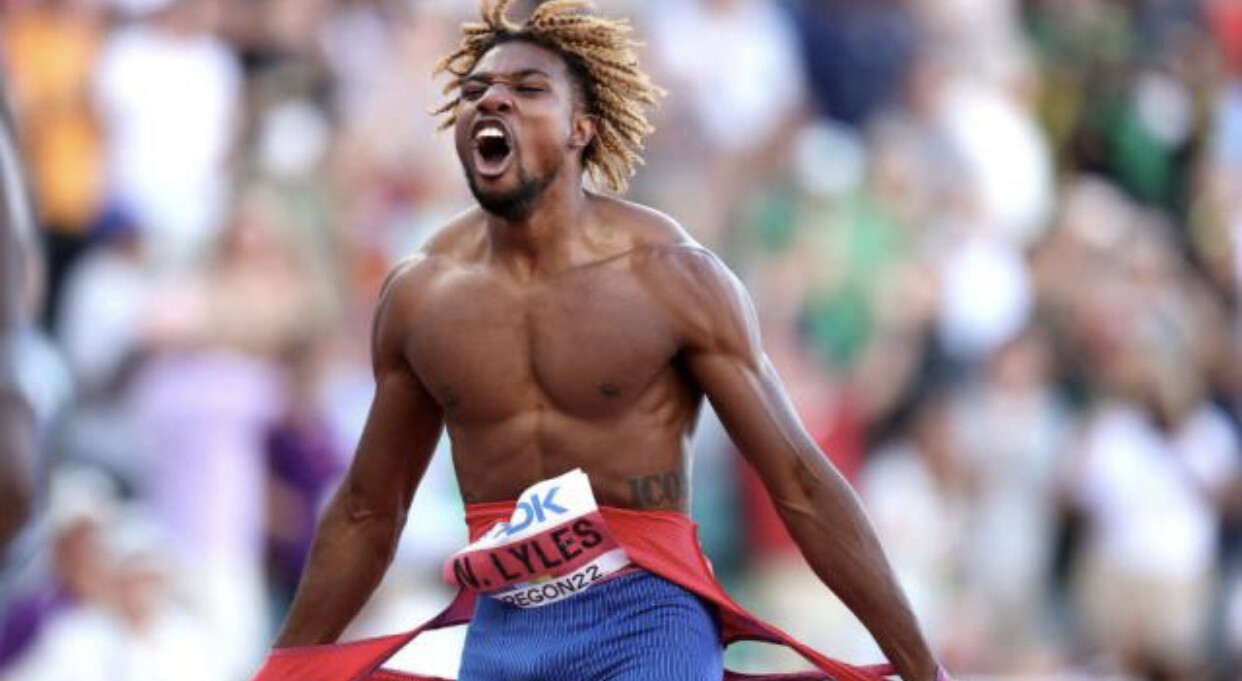
Just as they did in the 100 meters, the United States swept the medals in the 200: behind Lyles was Kenny Bednarek in 19.77 seconds, and 18-year-old sensation Erriyon Knighton in 19.80 seconds.
The 25-year-old Lyles was the defending World champion but at the Tokyo Olympics last summer was disappointed to finish as bronze medalist; he has since revealed that he ran with a swelling in his knee, bad enough to affect him but not so bad that he couldn't race.
A Virginia native — he and his brother Josephus starred at T.C. Williams High, immortalized in "Remember the Titans" — Lyles is beloved for his playful spirit and candor. After the medal ceremony he joyously jumped on the back of the Championships. Fluffy yellow mascot, Legend, and got a piggy-back for a few seconds, jumping off and immediately going to the stands for autographs and selfies. Lyles' long coils are currently dyed a light brown, but in the past he's colored it silver, an homage to Goku of "Dragon Ball Z," and he's always open about his mental health journey.
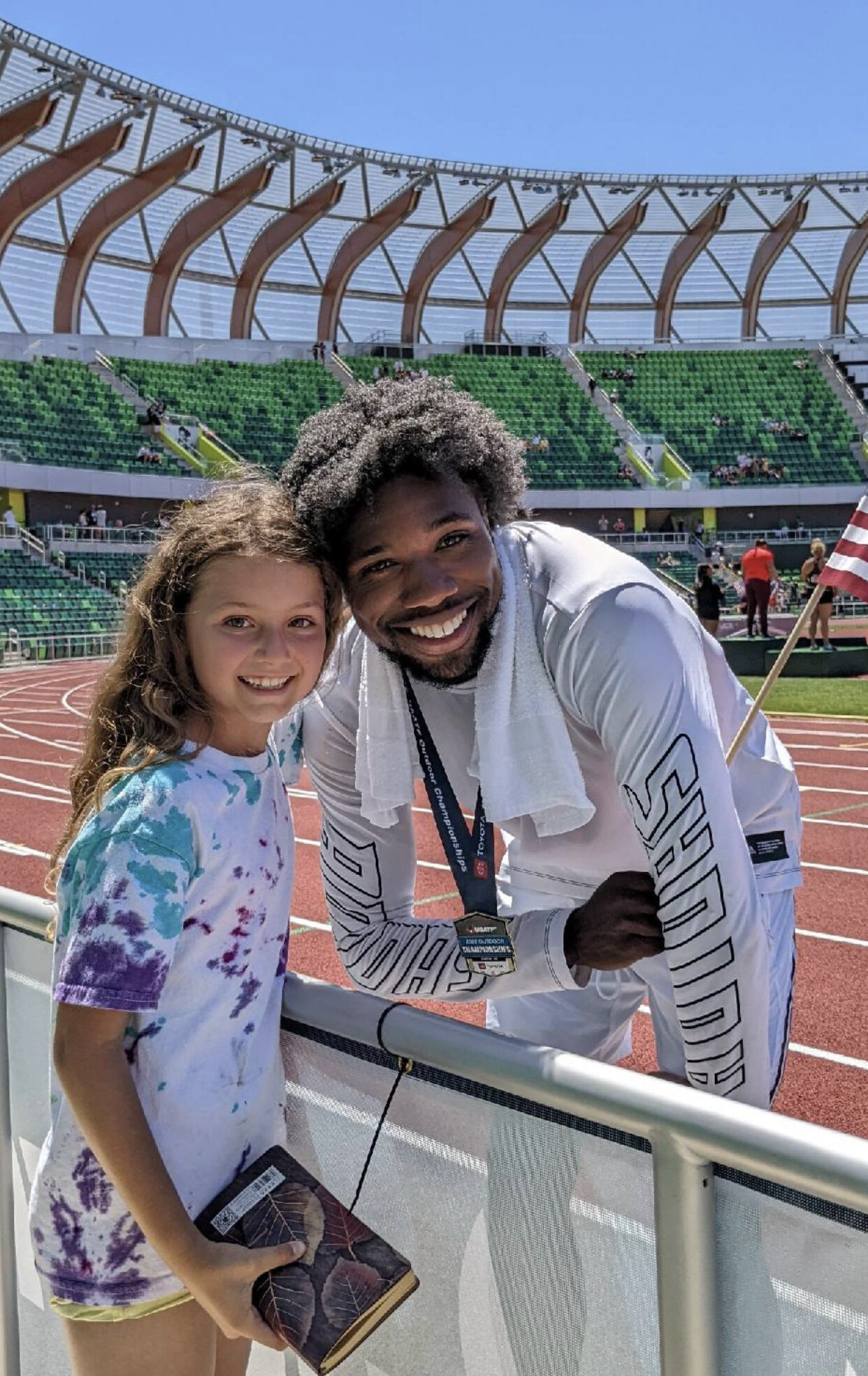
Bednarek, who is 23, matched the silver he'd won in Tokyo in the 200, while Knighton became the youngest man to win a sprint medal in Worlds history.
After a poor showing from the American men at the Olympics last summer when they only won two gold medals — in shot put and the 4x400m relay — they have certainly bounced back this year at Worlds; Lyles' win is the fourth gold for the U.S. men, with a strong chance for three more in the closing days of the meet.
The thrilling men's race matched the women's race, which had been contested just minutes earlier.
Jamaica's women again asserted their short-distance dominance, with Shericka Jackson winning gold in a stunning 21.45 seconds and Shelly-Ann Fraser-Pryce silver in 21.81 in the women's 200; Great Britain's Dina Asher-Smith, the defending champion, ran to bronze in 22.02.
Jackson's time makes her the fastest living woman on Earth — only the late Florence Griffith-Joyner, who ran a 21.34 in 1988, has ever run faster.
Fraser-Pryce, as is her way, was stellar out of the blocks but couldn't sustain it; Jackson passed her with around 90 meters to go and just kept pulling away, her arms driving her to the finish line. A veteran of several global championship meets, Jackson has multiple 400-meter bronze medals, from the 2015 and 2019 World Championships and the 2016 Rio Olympics as well as relay golds, but has since dropped down to the 200 and 100.
Earlier this week, she won silver in the 100m behind Fraser-Pryce, but Thursday was finally her night to get an individual gold.
(Third photo taken by Jivko at the USATF National Championships.)
by Shalise Manza Young
Login to leave a comment
World Athletics Championships Budapest23
Budapest is a true capital of sports, which is one of the reasons why the World Athletics Championships Budapest 2023 is in the right place here. Here are some of the most important world athletics events and venues where we have witnessed moments of sporting history. Throughout the 125-year history of Hungarian athletics, the country and Budapest have hosted numerous...
more...Visa issues cause headaches for hundreds of athletes and officials at track world championships
100-meter sprinter Ferdinand Omanyala is expected to land in Oregon about three hours before his first heat Friday
Kenya's Ferdinand Omanyala is one of the fastest men in the world at 100 meters, the rare African sprinter who could medal this weekend at the 2022 track and field world championships in Oregon.
But first, he has to make it there – and that's proven to be anything but simple.
Omanyala is one of the hundreds of international athletes and officials who have encountered visa issues ahead of the world championships at Hayward Field, leaving them frustrated, frazzled and, in many cases, racing just to make it to the start line.
The issues appear to stem from poor communication, applications being filed too late and general backlogs at U.S. embassies, where athletes must schedule an appointment and interview in order to obtain a temporary visa.
"This is ridiculous!" retired U.S. sprinting star Michael Johnson wrote on Twitter. "It’s been known US entry visa may be one of the most difficult and (World Athletics) and the organizing committee didn’t get ahead of this?"
World Athletics spokesperson Nicole Jeffery told USA TODAY Sports in an email that, as of Thursday, 374 visa cases involving athletes or officials had been flagged to a joint committee consisting of local organizers, World Athletics and the U.S. Olympic and Paralympic Committee, who have worked to help speed up the process.
About 73% of the cases have been resolved, Jeffery added, leaving a little less than 100 still in various stages of the process.
"We continue to follow up with those outstanding visa issues," World Athletics said in a statement. "International travel in general has become more challenging due to the pandemic and we are extremely grateful for the help and experience of the USOPC in helping to resolve issues that have come up in Omanyala, who has recorded the third-fastest time in the 100 this year, is perhaps the most high-profile athlete who has been impacted. His manager, Marcél Viljoen, told USA TODAY Sports that the 26-year-old has been "frustrated and disappointed" while working to obtain his visa, which he finally did Thursday morning in Kenya.
Viljoen said Omayala is now scheduled to arrive in Eugene, Oregon about three hours before his first heat Friday.
"I want to thank everybody who has worked around the clock to ensure I get my visa," Omanyala told the BBC.
"There's nobody to blame here. It's the system, how it works. You cannot force anything."
Nearly a dozen athletes from South Africa have also encountered visa issues, according to South African media outlet Independent Online, as have athletes from India, Iran and Jamaica, among others.
"Missed out on representing Libya at Worlds because my Federation couldn’t get visas," sprinter Ahmed Amaar wrote on Twitter on Monday. "Representation matters and with no support from (World Athletics) there can be no development for smaller Nations."
Inocencio added that he was surprised to encounter logistical issues like this given the United States' size and reputation. He hopes it might serve as a learning moment before the nation hosts the Summer Olympics in Los Angeles in 2028.
In the meantime, athletes whose travel plans have been disrupted – but not completely derailed – by visa delays can only try to make the best of a stressful situation.
"We (are) finally going, although some of us are going to arrive on the day we racing," South African sprinter Gift Leotlela wrote on Instagram. "We will fight and represent our country with Pride and honour."
Login to leave a comment
World Athletics Championships Budapest23
Budapest is a true capital of sports, which is one of the reasons why the World Athletics Championships Budapest 2023 is in the right place here. Here are some of the most important world athletics events and venues where we have witnessed moments of sporting history. Throughout the 125-year history of Hungarian athletics, the country and Budapest have hosted numerous...
more...18-year-old U.S. sprint star Erriyon Knighton becomes fourth fastest man over 200m
On Saturday afternoon in Baton Rouge, La., American Erriyon Knighton, who last year, at age 17, broke Usain Bolt’s junior sprint records, shattered his U20 world record in the 200m at the LSU Invite to become the fourth-fastest man in history over 200m.
Knighton clocked 19.49 seconds, which is the fastest time recorded since the 2012 Olympics, where Usain Bolt clocked 19.32 at age 25. Knighton now only trails Bolt (19.19s), Yohan Blake (19.26s) and Michael Johnson (19.32s) on the all-time list.

The 18-year-old sprint star lowered his personal best and U20 record from 19.84 seconds, which he set at last year’s U.S.Olympic Trials. He went on to finish fourth in Tokyo, becoming the youngest U.S. male track and field runner to reach an Olympic final.
Knighton turned pro last year as a high school junior, signing a professional contract with Adidas. He is now the second-fastest American 200m runner after Johnson’s then-world record of 19.32 at the 1996 Olympics in Atlanta.
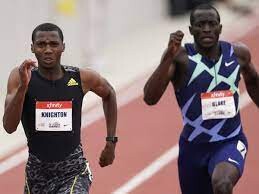
He will next have his eyes on the U.S. Outdoor Championships in June and the World Championships in July, which are both in Eugene, Ore., where he ran his previous PB of 19.84 seconds last summer.
Another world U20 record was broken on Saturday at the Gaborone International Meet, a World Athletics Continental Tour Bronze meeting in Botswana. U20 world champion Letsile Tebogo became the first man from Botswana to break 10 seconds for 100m. The 18-year-old pulled away from an experienced international field to win in 9.96 seconds (+1.9m/s), taking 0.01 off Trayvon Bromell’s world U20 record of 9.97 set in 2014.
by Running Magazine
Login to leave a comment
Michael Johnson's iconic gold spikes join the Heritage Collection
To mark the 226th World Athletics Council Meeting in Monaco, a special Heritage display was staged this week in the foyer of Le Meridien Beach Plaza. The exhibit contained 15 recent acquisitions made by the World Athletics Heritage Collection, which will soon be on display in glorious 3D in the virtual Museum of World Athletics (MOWA).
One of the oldest artefacts exhibited was a solid silver trophy donated by Kenya’s Olympic legend Kipchoge Keino, and one of the youngest items on show was a Tokyo 2020 Olympic Torch.
Yet arguably the greatest recent addition to the collection are three running spikes worn by eight-time world champion and four-time Olympic Games gold medalist Michael Johnson.
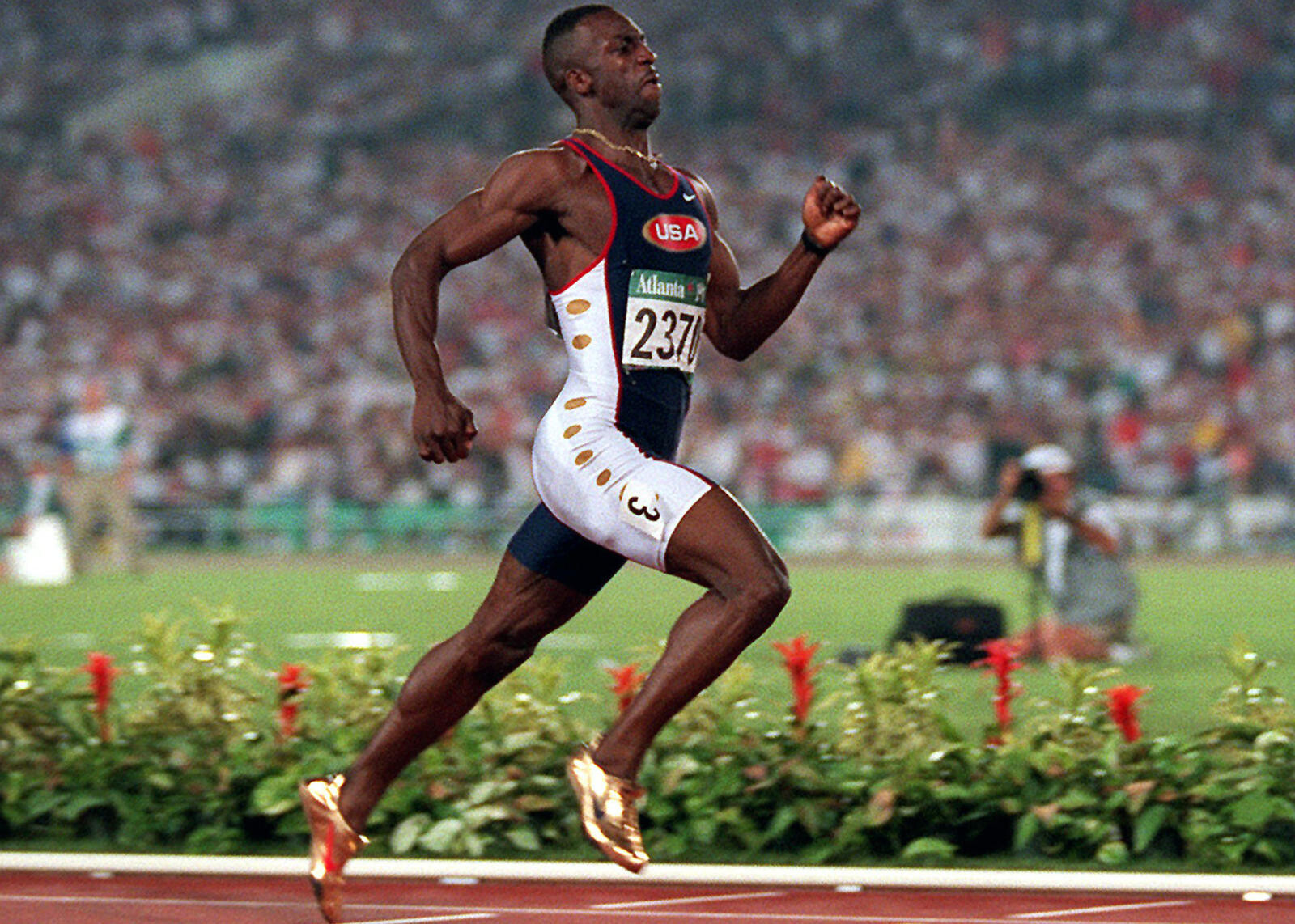
Entering the collection is one of Johnson’s iconic gold spikes from Atlanta 1996 (right foot), one from Sydney 2000 (left foot), and thirdly, a shoe from Johnson’s final race in 2001 (right foot). Each shoe is autographed.
“I can still vividly remember the chills I felt…”
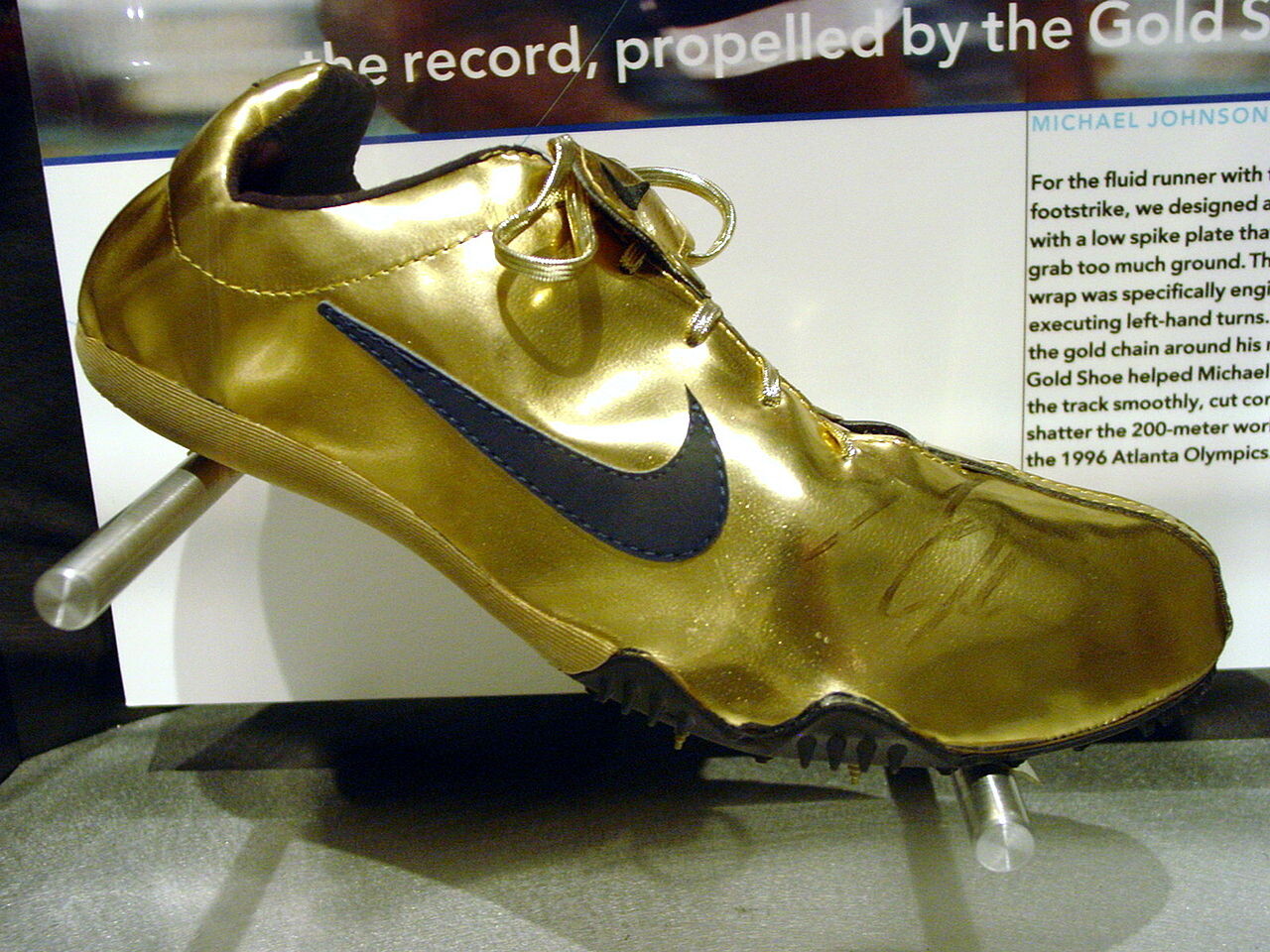
The trio now form part of the World Athletics Heritage Collection thanks the extraordinary generosity of Brad Hunt, who was Johnson’s agent during his outstanding running career.
“I visited the Heritage exhibition while at the 2019 World Athletics Championships in Doha,” commented Hunt. “The scale of the collection was particularly impressive, considering it had only been created in 2018.
“The historic display of artefacts included items from the careers of Jesse Owens, Carl Lewis and Usain Bolt. In men’s sprinting history, there was one glaring omission. By offering the spikes which Michael (Johnson) gave me after some of his most memorable races, I hope to have helped fill that gap in the World Athletics Heritage Collection,” added Hunt.
Johnson stunned the world of sport in 1996. At the Atlanta Games he won an unprecedented Olympic men’s 200m and 400m double. In the process, with a 19.32 clocking, Johnson destroyed his own 200m world record (19.66) which he had set less than two months before the Games on the same track at the US Olympic Trials.
“Both Olympic shoes were given to me two or three weeks following the Games they were used in,” confirmed Hunt. “The 1996 shoe was given to me in Hawaii, where we travelled for our post-Olympic celebrations. The 2000 shoe was given to me in Los Angeles.
“I can still vividly remember the chills I felt when I became the first person Michael told of his decision to wear gold spikes in the 1996 Olympic Games. We were sitting on a flight to Los Angeles from the Atlanta Olympic Trials to Los Angeles for Michael's first appearance on The Tonight Show with Jay Leno.
“Michael had just set his first world record (19.66 200m) the day before (23 June). We were discussing how much attention his purple spikes had received when he declared he would be wearing gold in the Games.”
14c gold in the material
Four years later, Johnson retained his Olympic 400m title in Sydney, Australia. Johnson had become world record-holder for the distance (43.18) at the World Championships in Seville, Spain, the previous year.
“Although the 2000 shoe is made with actual 14c gold in the material, thus making them shinier (with significantly more material value), the 1996 shoe is my favourite because these gold shoes were an actual media phenomenon!
“The amount of secrecy involved with the shoes' clandestine development and historical Olympic debut created one of the strongest identities an athlete has ever had with his or her footwear,” concluded Hunt.
The following year Johnson undertook his ‘Golden Victory Lap’ tour, finishing his career at the Goodwill Games in Brisbane. It is one of the shoes which he wore in that last season which completes this extra special induction of footwear into the World Athletics Heritage Collection.
The three spikes will soon be on display in the virtual MOWA.
In 2022, the spikes will also go on public show at MOWA’s onsite public exhibitions in Portland and Oregon, USA, in the lead into and during the World Athletics Championships Oregon22.
by World Athletics
Login to leave a comment
Duplantis, Hassan and Cherry break meeting records in Brussels
Meeting records are hard to come by in the Wanda Diamond League, given it’s the premier one-day meeting circuit in the world, but three such marks fell at the Memorial Van Damme in Brussels on Friday (3), thanks to Mondo Duplantis, Sifan Hassan and Michael Cherry.
When the men’s pole vault got underway, some 40 minutes before the first track event, the King Baudouin Stadium was still filling up. By the time the contest reached its climax three hours later, with all other disciplines having long finished, Duplantis commanded the attention of every single person inside the venue.
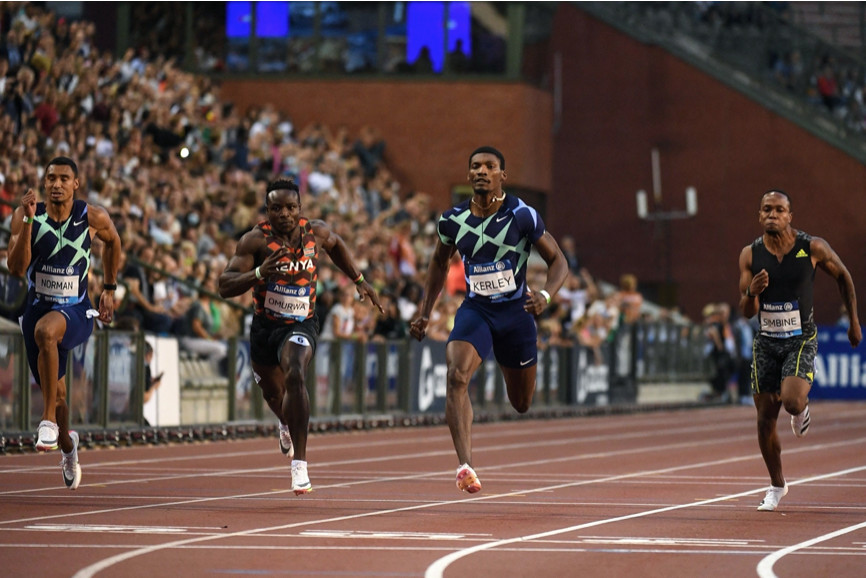
Though the world record once again evaded Duplantis tonight, the 28,000 spectators – the largest gathering for an athletics meeting since the start of the Covid-19 pandemic – were treated to a vaulting masterclass from a legend of the sport.
The Olympic champion opened at 5.50m, skipped 5.65m and then got over 5.75m and 5.85m on his first tries. Four other men were left in the competition at this point, but only two of them got over 5.85m; Olympic silver medallist Christopher Nilsen did it on his first try, while US compatriot KC Lightfoot scraped over on his third attempt.
The US duo couldn’t quite manage 5.91m tonight, though, but Duplantis once again went clear at the first time of asking to confirm his victory. The 21-year-old Swede then raised the bar to 6.05m in a bid to add some height to his own 6.00m meeting record from last year. He brought the bar down with his first two tries, but got over it on his third attempt.
The bar was then raised to the would-be world record height of 6.19m. Following a short wait while the technical officials ensured all was set for a record attempt, Duplantis took to the runway but wasn’t particularly close to clearing the bar on his first attempt. His second try was significantly closer, and his third attempt was also decent, but a world record wasn’t to be tonight.
Nevertheless, Duplantis wasn’t disappointed with his winning height of 6.05m. Only he, Sergey Bubka and two-time world champion Sam Kendricks have ever vaulted higher outdoors.
"I was really close to the world record," said Duplantis. "Everything was perfect, it was just up to me. I haven't had such an amazing atmosphere during a competition in a really long time."
Almost a month has passed since Sifan Hassan’s final race at the Olympic Games, where she won two gold medals and one bronze. Having raced just once during that time, the Dutch distance star arrived in Brussels well rested and ready to take on the mile.
She was the only athlete capable of sticking with the pacemakers as they led through the first 400m in 1:02.03. By the time the second pacemaker reached the 800m point in 2:04.97, with Hassan still in close attendance, the rest of the field was about 30 metres adrift.
With a lap to go, it was clear from the wavelight technology that an improvement on Hassan’s 4:12.33 world record was not on the cards in Brussels, though it never really seemed as though that was her ambition for the race anyway. By this stage, her lead had grown to 50 metres and she kicked for the final lap, going on to win by more than six seconds.
Her winning time of 4:14.74, the fifth-fastest performance in history, smashed Faith Kipyegon’s meeting record by two seconds. Ethiopia’s Axumawit Embaye was second in 4:21.08, closely followed by Australia’s Linden Hall, who broke her own Oceanian record with 4:21.38.
“Since the start of the pandemic, we haven’t had such a big crowd and I’m so happy to see them,” said Hassan. “We haven’t experienced it for nearly two years; it makes you feel special. It’s amazing, I really love it.”
In Tokyo last month, Michael Cherry was beaten to the 400m bronze medal by just 0.02 as Kirani James pipped the US sprinter at the line. Today’s race in Brussels was the first clash between the pair since the Olympic final, and Cherry ran like a man with a point to prove.
He went out hard, as did James, and by half way the duo had started to open up a clear gap on the likes of Isaac Makwala and Liemarvin Bonevacia.
James almost drew level with Cherry on the final bend, but Cherry had another gear left and forged ahead down the home straight, crossing the line in a lifetime best of 44.03 to take 0.03 off Michael Johnson’s meeting record from 1998.
James finished second in 44.51 with Makwala taking third place in 44.83.
The meeting record may have remained intact in the women’s high jump, but it proved to be one of the most enthralling contests of the night.
Olympic champion Mariya Lasitskene breezed through the first few heights and hadn’t recorded any failures up to and including 1.98m. World silver medallist Yaroslava Mahuchikh, who needed three attempts to clear 1.95m, also got over 1.98m on her first try, while Olympic silver medallist Nicola McDermott needed two jumps to clear it.
But McDermott was then the first to go clear at 2.00m, getting over on her first try, then Lasitskene did likewise. Mahuchikh succeeded on her second attempt at 2.00m, but then nailed 2.02m on her first attempt, taking the lead at a critical point of the competition.
Lasitskene missed once and then passed to 2.04m, while McDermott had two misses at 2.02m before registering a third failure at 2.04m. Neither of the trio managed to get over 2.04m, leaving Mahuchikh as the winner. It was just the second time in Diamond League history that three women have cleared 2.00m in the same competition.
With Lasitskene having won in Lausanne and McDermott winning in Paris, Mahuchikh’s triumph in Brussels means all three Olympic medallists have achieved Diamond League wins since the Tokyo Games.
Kerley makes Diamond League history
Olympic 100m silver medallist Fred Kerley won the short sprint, becoming the first man to win over 100m, 200m and 400m in the Wanda Diamond League.
World leader Trayvon Bromell blasted into an early lead and held his form well, but Kerley rallied and held off the additional challenge from Michael Norman in lane seven, dipping well on the line to take the victory in 9.94.
Bromell held on to take second place in 9.97, just 0.01 ahead of Michael Norman (9.98), completing a US sweep of the top three places.
Christine Mboma, also an Olympic silver medallist, won the women’s 200m. The Namibian teenager came through strongly in the closing stages to edge in front of Jamaica’s Shericka Jackson and world champion Dina Asher-Smith.
Mboma stopped the clock at 21.84 while Jackson took second place in 21.95. Asher-Smith recorded a season’s best of 22.04 in third, and US 100m champion Sha’Carri Richardson was a few strides adrift in fourth place (22.45).
Burundi’s Francine Niyonsaba produced a similarly well-timed finish to win the 5000m.
Once the last of the pacemakers dropped out at 2000m, Niyonsaba took up the running at the front of the pack with two-time world champion Hellen Obiri close behind. The Kenyan led for a brief stint too, passing through 3000m in a swift 8:42.57.
Niyonsaba, who finished fifth over 10,000m at the Tokyo Olympics, led again for most of the final kilometre, but Obiri kicked into the lead when the bell sounded for the final lap. She appeared to be on her way to victory, but Ethiopia’s Ejgayehu Taye came back strongly and briefly led with about 90 metres to go, then a rejuvenated Niyonsaba came back to take the lead in the closing stages, crossing the line in a national record of 14:25.34.
Taye took second place in 14:25.63 with Obiri claiming third in 14:26.23. World silver medallist Margaret Chelimo Kipkemboi set a PB of 14:27.12 in fourth as the top seven women finished inside 14:32 – unprecedented depth for a 5000m race.
Goule, Rotich and McSweyn take middle distances
Exactly one month since her eighth-place finish at the Tokyo Olympics, Jamaica’s Natoya Goule rebounded with a satisfying win over 800m, beating several women who finished ahead of her at the Games.
With the pacemaker passing through the first lap in 56.99, the field was still relatively tightly bunched with 300 metres to go. Goule held the lead, but Olympic silver medallist Keely Hodgkinson moved on to the Jamaican’s shoulder on the final bend and looked poised to strike.
Goule had saved something for the finish, though, and she held off the challenge from the British teenager, winning in 1:58.09. Hodgkinson was second in 1:58.16 from compatriot Jemma Reekie (1:58.77).
Stewart McSweyn led an Australian 1-2 in the men’s 1500m. The Oceanian record-holder overtook a fading Mohamed Katir on the home straight to win in 3:33.20 with compatriot Oliver Hoare taking second place (3:33.79). Poland’s Michal Rozmys was third in 3:33.96.
Olympic silver medallist Ferguson Cheruiyot Rotich was a comfortable winner of the non-scoring men’s 800m, crossing the line in 1:43.81 to win by more than a second from Belgium’s Eliott Crestan (1:45.24).
Hurdles victories for Dos Santos and Visser
Racing for the first time since taking Olympic bronze and moving to third on the world all-time list, Brazil’s Alison dos Santos won the men’s 400m hurdles with his trademark strong finish.
Kyron McMaster of the British Virgin Islands led for most of the race, making up the stagger on Dos Santos, drawn one lane outside him, by the half-way point. Dos Santos stuck with McMaster around the final bend and drew level with Jamaica’s Jaheel Hyde. McMaster hit the penultimate hurdle, throwing off his rhythm slightly as he went into the final barrier. Dos Santos, meanwhile, came off the 10th hurdle much better and went on to win in 48.23.
McMaster finished second in 48.31 and Yasmani Copello took third place in 48.45.
The closest finish of the day came in the women’s 100m hurdles, in which Nadine Visser won by just eight thousandths of a second from Tobi Amusan, both timed at 12.69 (0.7m/s). Olympic bronze medallist Megan Tapper was third in 12.77.
Elsewhere, Steffin McCarter saved his best for last to win the men’s long jump. His sixth-round leap of 7.99m was not only the best in the ‘final three’ contest; it was also the top mark of the entire competition. Ruswahl Samaai was second thanks to his last-round leap of 7.89m, having jumped 7.95m earlier in the competition.
Login to leave a comment
Athing Mu continues breaking records
Athing Mu broke an American under-20, 400-meter record with a time of 49.84 to win the SEC title Saturday night at E.B. Cushing Stadium.
The Aggies claimed six event titles across the three-day meet that finished with the women’s team placing fourth in overall team points with 82 and the men’s team placing seventh with 67 points. Winners included Deborah Acquah in the long jump, Moitalel Mpoke in the 400-meter hurdles, Tyra Gittens in the heptathlon, Brandon Miller in the 800-meter, Mu in the 400-meter and the women’s 4x400-meter relay team. The Aggies will practice next week to prepare for the NCAA West Prelims at E.B. Cushing Stadium.
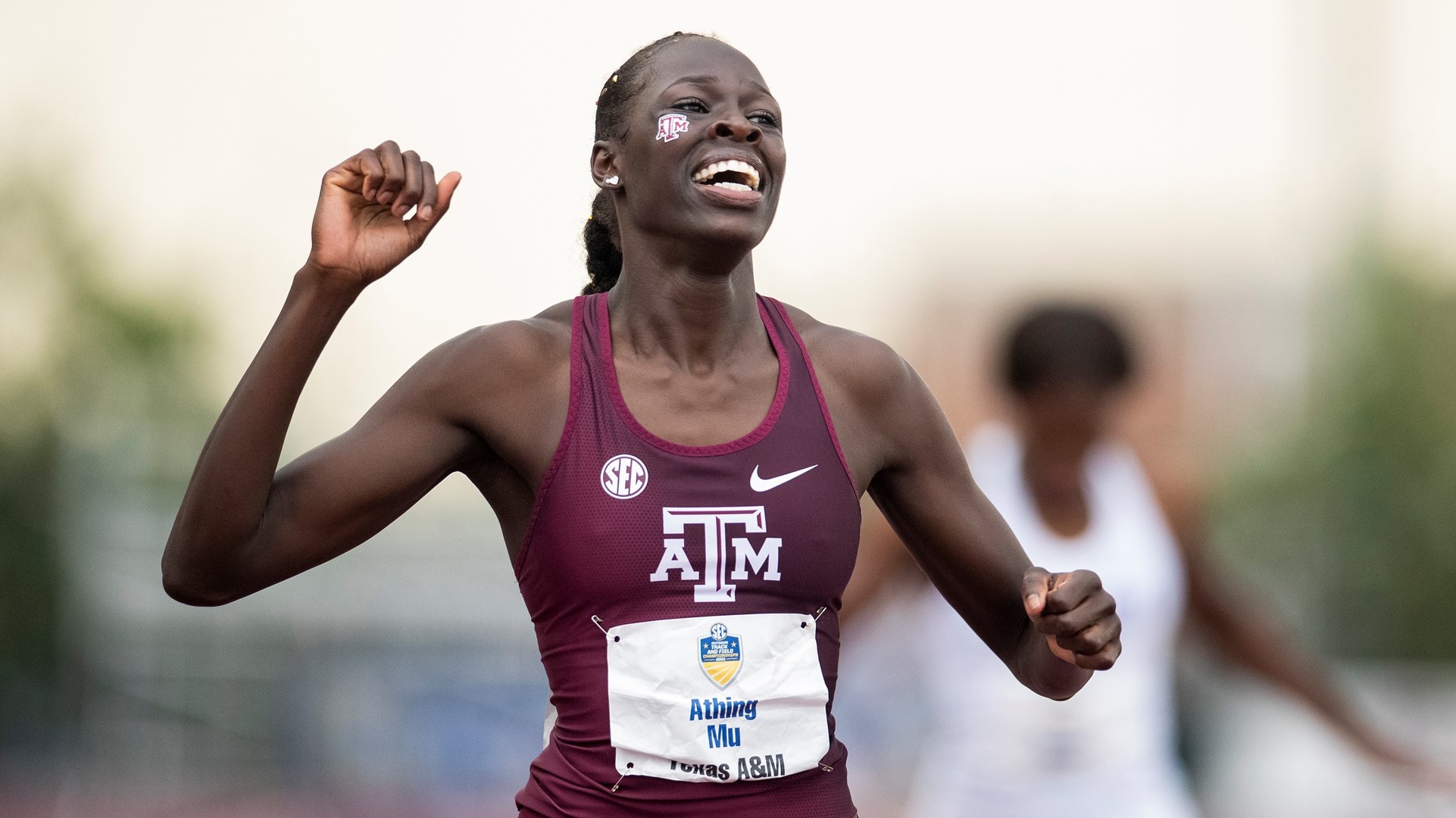
Mu won the women’s 400-meter in record-breaking fashion, more than a full second faster than all other runners to set an American under-20, SEC meet, facility and Texas A&M program record. She now is the third fastest collegian all-time and ranks fifth on the all-time world under-20 list. Mu usually runs the 800-meter but opted to run the 400-meter this week.
“There is no reason to overrun the 800-meter when I’ve already ran a fast time,” Athing Mu told 12thman.com. “I came in this weekend with the plan to run a secondary event and help continue to keep my legs moving without doing the 800-meter.”

The time was the second American under-20 record Mu set this outdoor season as she broke the 800-meter record at 1:57.73 in April at the Michael Johnson Invitational. This time she was able to set it in front of a near-capacity crowd, a first for this outdoor season.
“When I was cheering on the men’s 800-meter, I thought, ‘Wow, it’s actually feeling like track and field again,’” Mu told 12thman.com.
Miller won the men’s 800-meter title with a personal best time of 1:45.95 to become the fourth fastest American on the under-20 all-time 800-meter list. This is Miller’s second SEC Championship this year as he won the 2021 SEC Indoor 800-meter Championship in February.
Mpoke became the first athlete in school history to run a sub-49 in the 400-meter hurdles with a collegiate-leading time of 48.89. The previous record was held by Craig Calk and stood for 34 years. Mpoke met the Olympic qualifying standard by .01 seconds.
“I don’t think there was a poor event in the whole championship and this meet will probably stick out as one of the best meets in the country this year,” A&M coach Pat Henry told 12thman.com.
Bryce Deadmon clocked a personal best time of 44.50 in the men’s 400-meter to make him the third best performer in school history and ninth best all-time. He also ran the anchor in the men’s 4x400-meter with a 43.82 split as he, Mpoke, Omajuwa Etiwe and Devin Dixon finished second at 3:01.73, good for the No. 5 time in the NCAA this season.
Acquah placed second in the triple jump at 14.13m (46-4.25) after claiming the women’s long jump SEC title at 6.80m (22-3 ¾). Gittens placed second in the women’s high jump at 1.93m (6-2.25) after winning the SEC heptathlon title. Lamara Distin finished third in the women’s high jump at 1.93m (6-2.25), but because she failed her first two attempts, she dropped to third overall. It was her first top-three finish in an SEC event.
by Cade Draughon
Login to leave a comment
Athing Mu ran 1:57.73 to Crush NCAA 800m Record
Athing Mu’s incredible 2021 season got even better as the Texas A&M freshman ran 1:57.73 at the Michael Johnson Invitational at Baylor University to destroy the NCAA record and set a 2021 world outdoor leader. The previous NCAA outdoor record was 1:59.10 by Raevyn Rogers of Oregon from 2017, while Mu had run 1:58.40 indoors this year.
Not that Mu’s run needed an exclamation mark, but making it even more impressive is that she ran a negative split. She was unofficially 60.0 at 400 which means she split 57.7 the 2nd 400.

Mu has been tearing up the NCAA record books this year:
Indoor 600m - 1:25.80
Indoor 800m - 1:58.40
Indoor 4x400m - 3:26.27
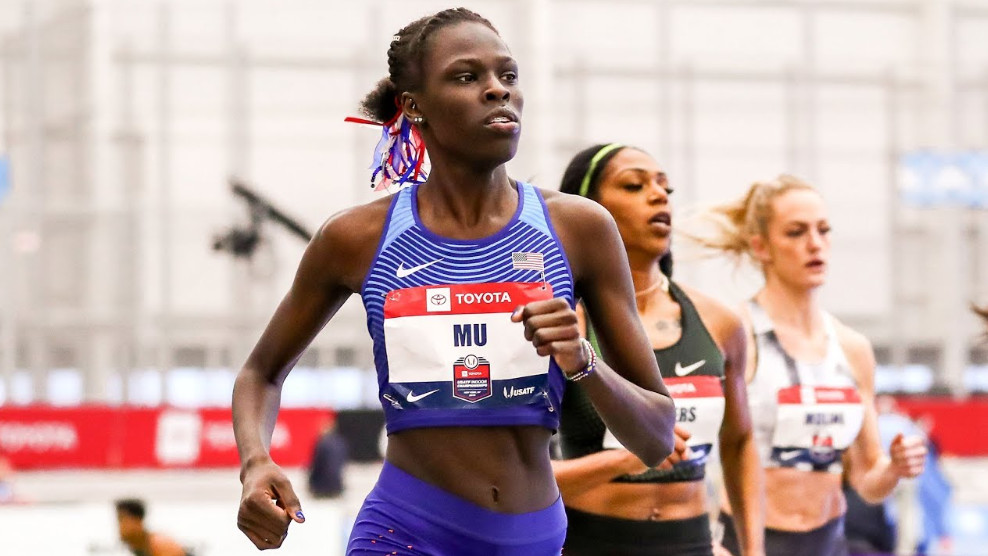
Outdoor 800m - 1:57.73
At the last World Championships, Raevyn Rogers and Ajee Wilson of the US got the silver and bronze. The women’s 800m at the Olympic Trials should be absolutely amazing in June.
And the woman who was a distance second to Mu today? That was Aaliyah Miller of Baylor who set the NCAA indoor meet record at 800 this year. Mu absolutely destroyed Miller today.
by LetsRun
Login to leave a comment
Scheduling casts doubt over Miller-Uibo's bid for 200-400m Olympic double
Bahama’s Shaunae Miller-Uibo has hit out at athletics chiefs over the scheduling of races that could derail her hopes of becoming the first runner to claim a 200-400 metres Olympic double in 25 years.
The women’s 400m semi-finals at this year’s Tokyo Games are scheduled to take place two days before the final, as compared to the men’s event, which has an extra day’s gap.
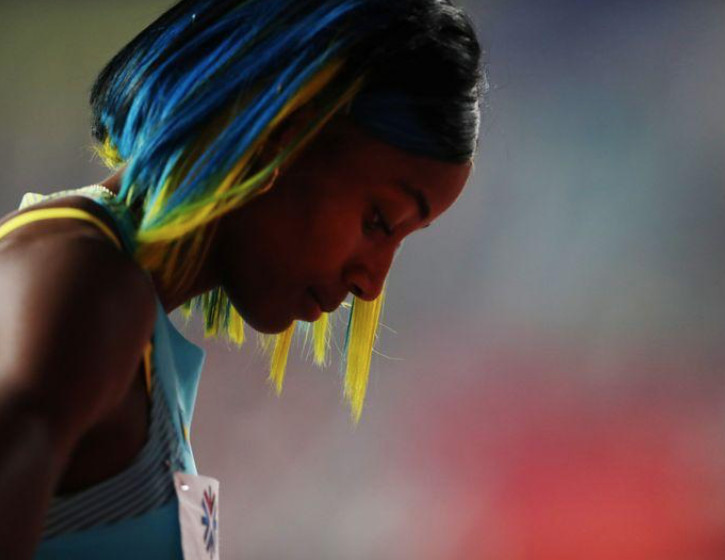
An overlap of the 200m and 400m races also mean Miller-Uibo, who won gold in the 400m at the Rio Olympics five years ago, will have to run twice on successive days if she wants to secure the double, while the men will only have to do so once.
The 26-year-old, who aims to emulate Michael Johnson, Marie-Jose Perec and Valerie Brisco-Hooks, said the Bahamas Olympic Committee’s request to amend the schedule had been rejected.
“As much as I wanted a new title in the 200 metres, I also wanted to defend my Olympic one,” Miller-Uibo told The Times. “The guys have an opportunity where their events don’t clash and so all we were asking for was an opportunity to double.
“With the guys they had a two-day break between the 400m semis and final. Had they opened that up for the girls then it would have been fine.”
Miller-Uibo said she was almost certain to ignore the 400m, shifting her focus to the shorter distance and a potential battle with Britain’s Dina Asher-Smith.
“She’s a great competitor,” Miller-Uibo said. “I think we’ll bring the best out of each other.”
Miller-Uibo’s comments come days after World Athletics announced a series of pledges to “further advance the role of girls and women” in the sport.
Login to leave a comment
Bowerman Track Club runner Woody Kincaid Burns Up Nike’s Famed Wooded Track with 12:58 PB for 5000 on Tuesday
Woody Kincaid called the atmosphere Tuesday at Nike’s Michael Johnson Track “surreal,” and it was that.
With an estimated 2,500 spectators ringing the track on a cool, damp evening, the track partly in shadow, giant trees in the infield preventing an unobstructed view of the action, Kincaid, Lopez Lomong and Matthew Centrowitz got what they came for.
The three Bowerman Track Club runners crushed the 2020 Olympic standard in the 5,000 meters of 13 minutes, 13.50 seconds in what was billed as the “Portland 5,000.”
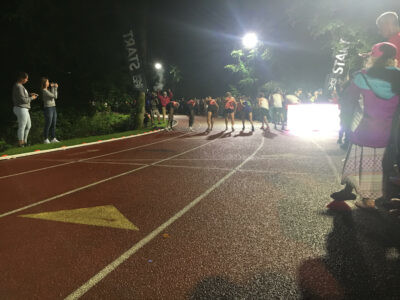
Canadian Olympian Mohammed Ahmed kept the pace well under the standard. Kincaid, Lomong and Centrowitz stayed with him.
Kincaid bolted past Lomong in the final 120 to finish first in 12:58.10, obliterating his personal record of 13:12.22. He was followed to the finish line by Lomong in 13:00.13 and Centrowitz in 13:00.39.
Kincaid, who starred collegiately at the University of Portland, was having trouble processing it afterward.
Asked if he felt in 12:58 shape when he arrived at the track. Kincaid looked incredulous and said: “I don’t know if I feel that I’m in 12:58 shape now.”
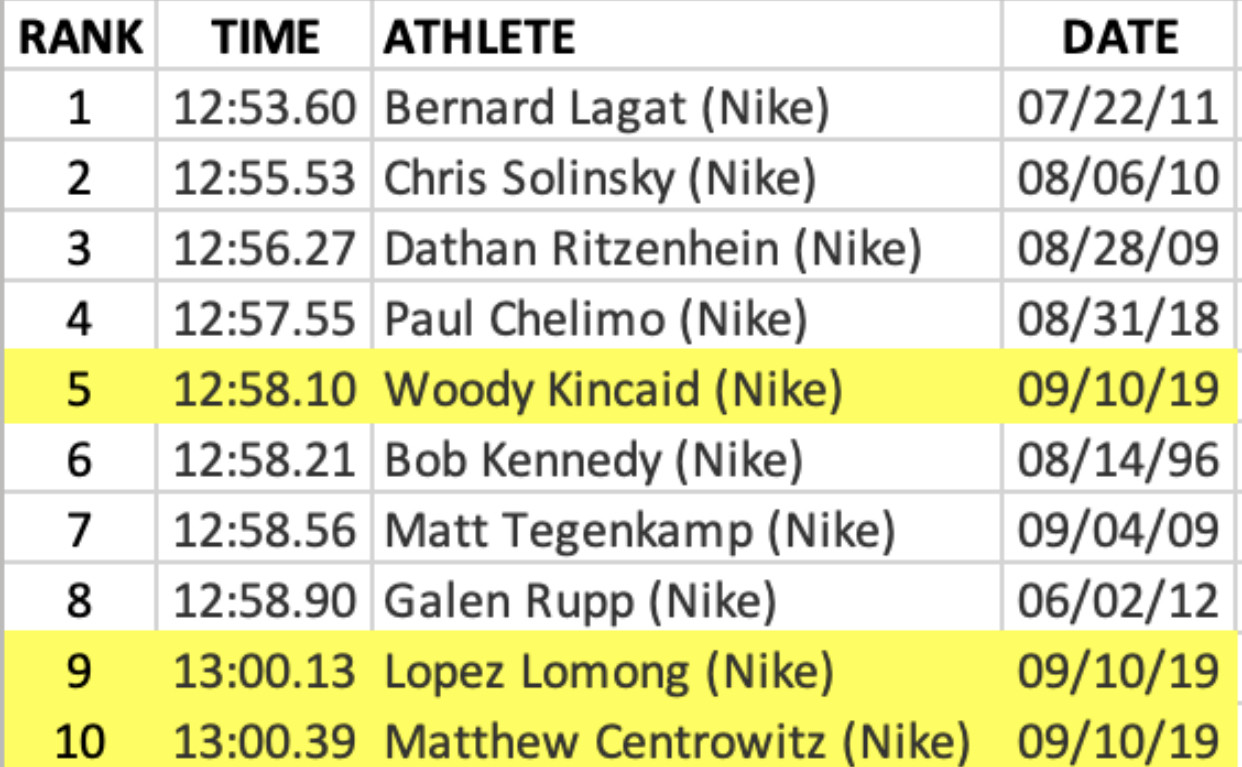
Of the three, Kincaid’s performance most stood out. Lomong is a two-time Olympian who swept the 5,000 and 10,000 at this summer’s USA Track & Field Outdoor Championships. Centrowitz is the reigning Olympic champ in the 1,500.
Both Centrowitz and Lomong will be part of the U.S. Team for the World Outdoor Championships in Doha, Qatar, which begin Sept. 27. Kincaid finished third in 5,000 at the USATF Outdoor Championships, which would have qualified him for the U.S. team had he met this year’s world championships qualifying standard in the qualifying period. He had not.
It won’t be a problem next year, now that Kincaid has taken care of his Olympic qualifier.
“If you watched the last mile of that race, I lost all form,” Kincaid said. “I lost everything. It was just one step after another. There was nothing left in the tank after that.”
He said the spectators, standing around the track in lane five, in some places three and four deep, pushed him.
“Honestly, if that crowd wasn’t here, I run 13:20,” Kincaid said.
by Ken Goe
Login to leave a comment
Michael Johnson suffered a stroke last August and now he talks about his recovery
Michael Johnson is recalling the unusual physical sensations – involuntary movement of his left foot, numbness, “a sort of tingling sensation” in his left arm – that came over him moments after finishing his daily workout in his home gym in August last year. “I hobbled over to my weights bench and thought, am I having a cramp or something? I called my wife Armine over and said: ‘Hey, something feels weird. Something doesn’t feel right.’”
The cause wasn’t a cramp, though, overexertion or an infection. The legendary athlete – a four-time Olympic sprint champion, just 50 years old at the time – was having a stroke. As he tweeted soon after: “It seems these things can affect anyone, even the once-fastest man in the world!”
The confusion he felt was fairly typical, he points out now, eight months later. Many stroke victims do not realize at first that they are experiencing an event that could leave them dead or seriously disabled, potentially for life.
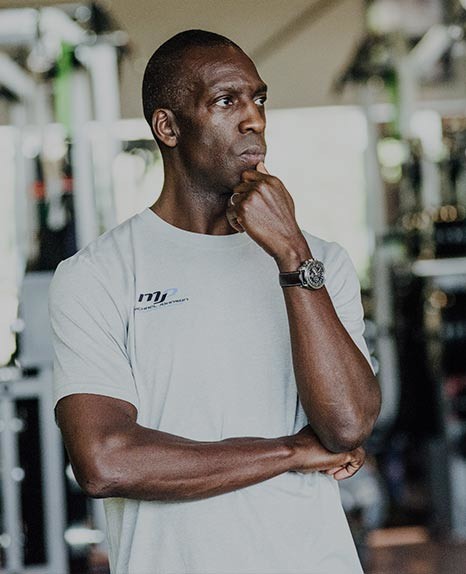
After half an hour spent wondering what to do, Johnson decided to go to hospital. Armine drove him to the Emergency Room at UCLA Medical Center in Santa Monica. It was a wise call. A CT scan, then an MRI confirmed the ER doctor’s diagnosis of a stroke.
Initially, Johnson was angry; angry that someone as determinedly clean-living as himself, with no obvious risk factors – he didn’t smoke, ate healthily, kept fit and had no family history of cardiovascular disease – had suffered a stroke. “I did feel like: ‘Why did this happen to me, when I was doing all the right things?’” But within 24 hours he had gained a different perspective. “It’s natural for anyone to go through that period of anger. I was pretty fortunate to get past that situation [the stroke], with an opportunity to completely recover, which is what I hoped to do.”
Johnson decided to put the same determination that he had brought to his athletics career into recovering from his stroke.
It was an arduous process, both physically and mentally. The first stage of his recovery involved a physiotherapist helping him to learn to walk again using a walking frame.
How did a legendary athlete, a champion, deal with being so helpless? “I think about looking at myself in the mirror, struggling to hold a balance position for more than 10 seconds or struggling to coordinate my body when I used to be one of the best athletes in the world.”
He learned – impressively quickly – to walk, then to walk in a balanced way, and then to be mobile, and then to get up and down stairs. Then he succeeded in eliminating his limp, although that took a month. Then he began working on regaining his strength, power and fine motor skills on his left side. He drew on a key lesson of his path to sporting glory: often progress comes in small, incremental steps. In one of his early progress reports, he tweeted that, while his recovery was going well, relearning the very basics of movement was “gruelling.” But by December he said, “I was almost back to what I would consider my normal. And now, eight months on, I’m 100% recovered.”
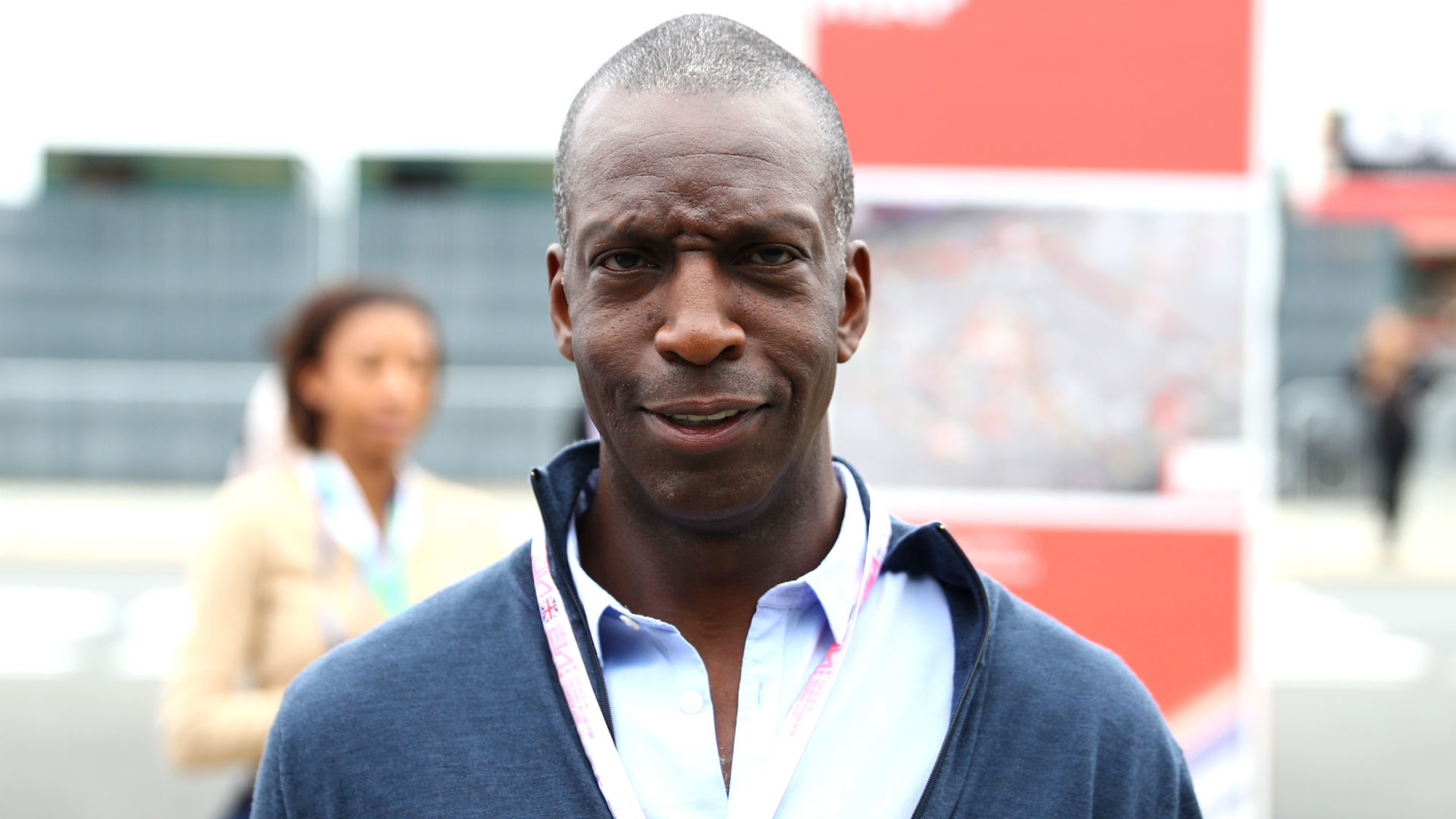
Going to the ER might have saved him from a future of dependence and life in a wheelchair.
His advice on how to minimise the danger of stroke is what any doctor or nurse would say. “Be your own case manager. Understand your own health, understand the risk factors and understand how you can take control and minimise the risk. Stop smoking if you are a smoker. Being overweight increases your risk so keep your weight down. Eat a balanced, nutritious diet. Stay active.”
Johnson now takes aspirin, a statin, a blood-thinner and a drug to keep his blood pressure in healthy range. He is is acutely aware that, having had one stroke, he could easily have another. After eight months and a host of medical tests, neither he nor his doctors know what caused his stroke – 30% of strokes have no obvious cause, he explains. Is that frustrating? “No. I mean, I can’t force an answer where there isn’t one. All I can do is do what I do, so I’m OK with that. I kind of have to be.”
by The Guardian
Login to leave a comment
Everyone needs to read their body and seek help before it is too late. Good read and good luck Michael. - Bob Anderson 7/10 9:58 pm |
Michael Johnson suffered a stroke in September and says he was scared and angry after attack
Login to leave a comment
Michael Johnson Expected to make a full recovery, from a mini-stroke
Login to leave a comment






